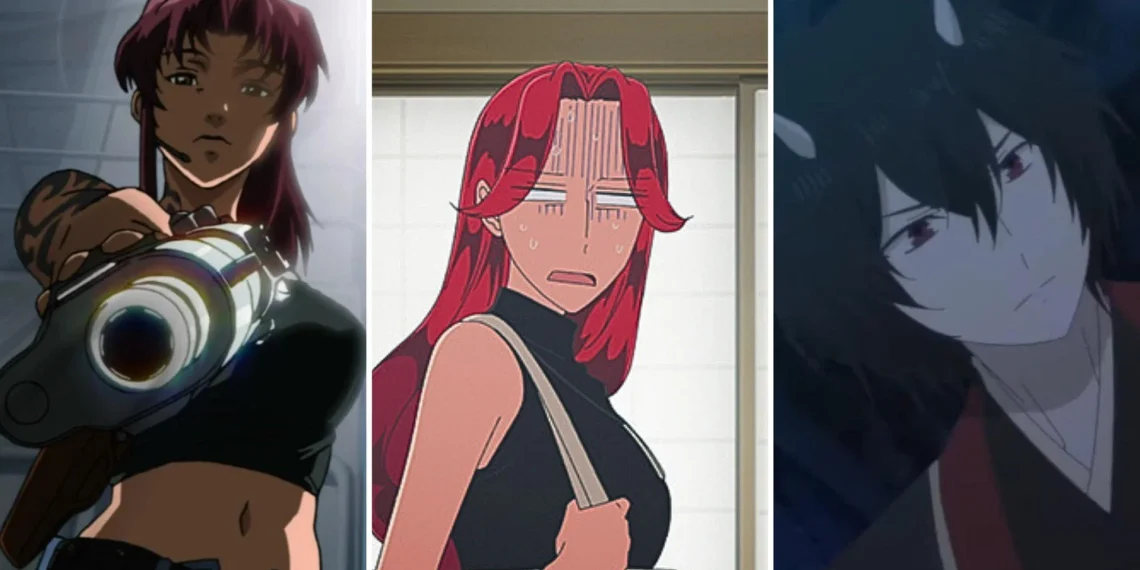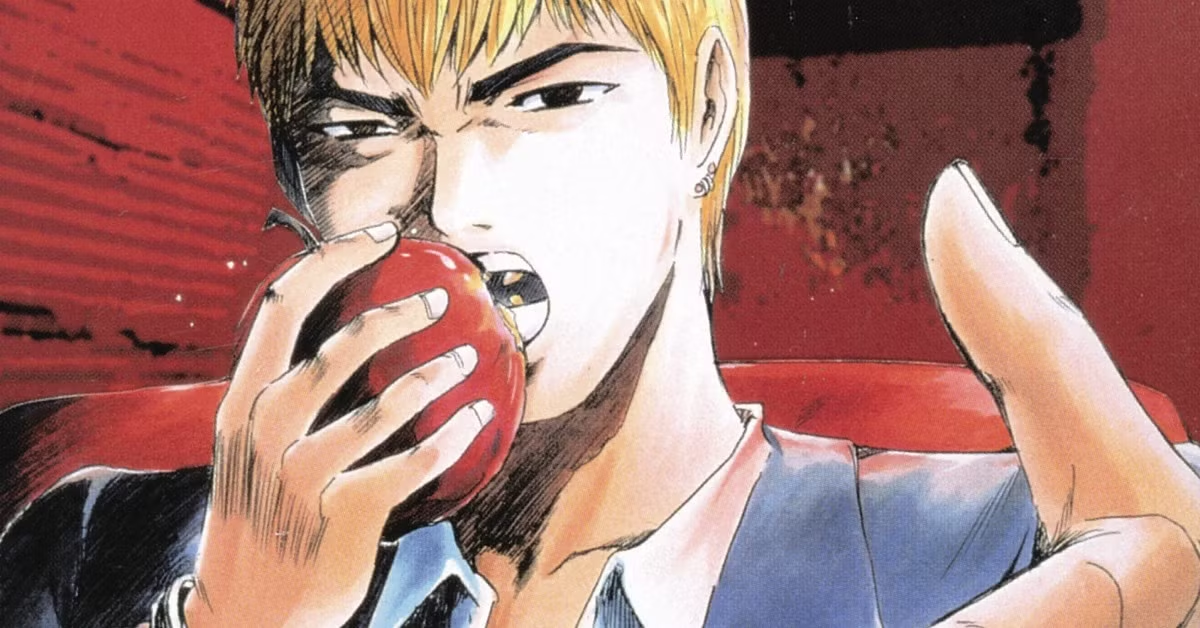If you’re a fan of the Yakuza series, you’ve likely immersed yourself in its gripping portrayal of Japan’s notorious gangsters. More than just an action-packed experience, the franchise tells a compelling story of redemption, loyalty, and the struggles of a reformed gangster—something rarely inspected in gaming.
Now, imagine bringing that same depth and excitement into anime. While many fans hope for a Yakuza anime adaptation, there’s already a wealth of similar stories waiting to be discovered. These narratives capture the intense action, emotional weight, and moral complexities that make the games so enchanting.
With Infinite Wealth expanding the universe of Ichiban Kasuga and Kazuma Kiryu, the hunger for more crime-driven storytelling is stronger than ever. Anime that investigates Japan’s criminal underworld offers fans a new way to experience the same thrills and emotional highs found in the Yakuza games.
From a reformed gangster turned teacher to unruly crime syndicates, older Yakuza-inspired anime provides a deeper look into Japan’s underworld. These stories blend themes of brotherhood, morality, and the blurred line between right and wrong.
While we wait for an official Yakuza anime, fans can inspect these gripping narratives that embody the soul of the beloved game series.
29. Black Lagoon
For fans craving thrilling adventures on the high seas, “Black Lagoon” is the perfect choice. This 2006 anime, based on an ongoing manga, follows the exploits of the Lagoon Company, a group of mercenaries operating in the waters of Southeast Asia during the 1990s.
Their encounters range from clashes with the Japanese Yakuza and Russian mafia to engagements with Colombian cartels and Chinese Triads. Each episode is packed with adrenaline-pumping action, including fistfights, gun battles, and intense sea skirmishes aboard their vessel, the Black Lagoon.
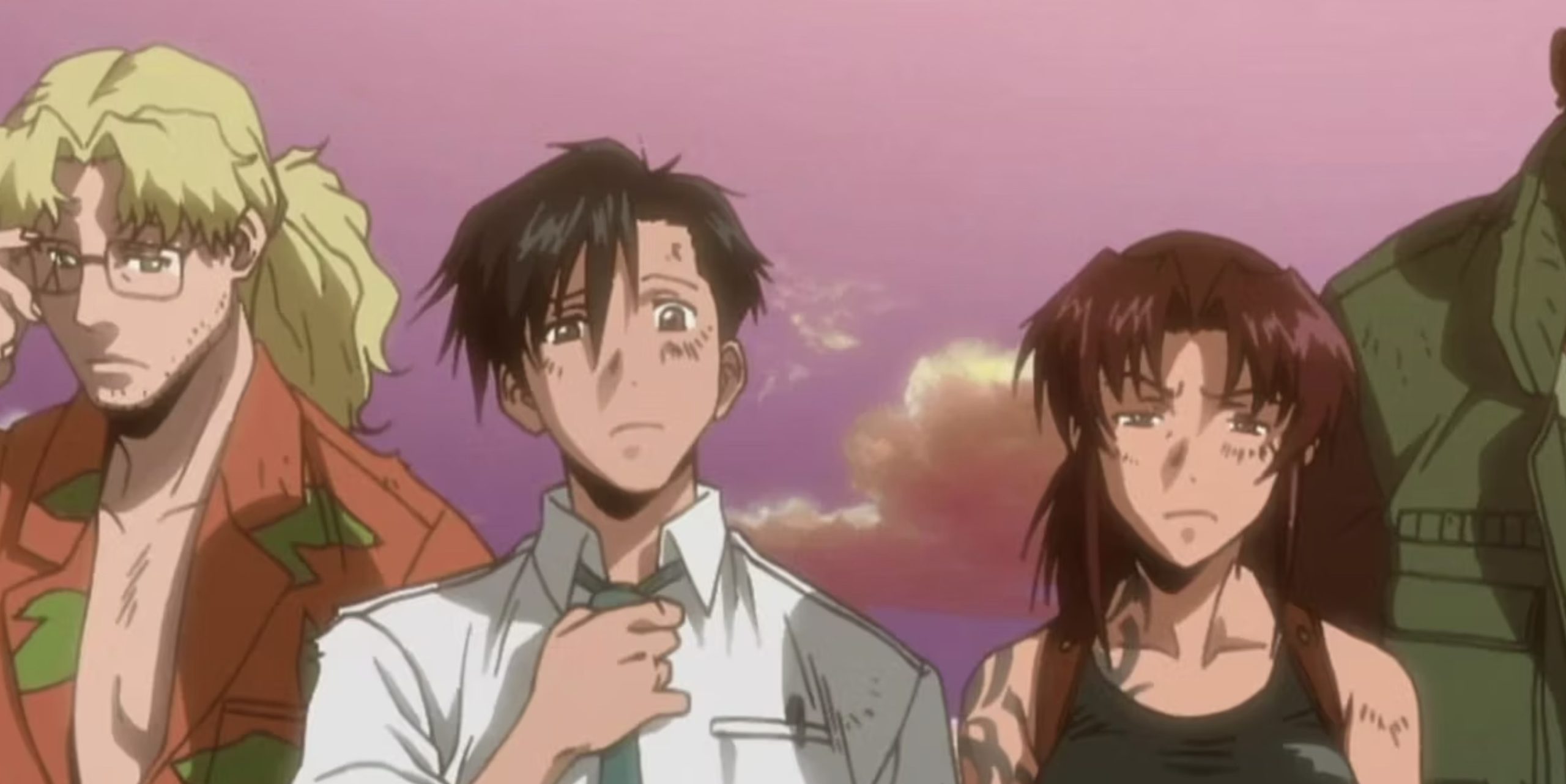
Central to the series is the dynamic chemistry among the members of the Lagoon Company. Salaryman Rock finds himself drawn into their world after a kidnapping gone awry, with Revy emerging as the team’s formidable fighter who forms a protective bond with him.
Dutch, the captain, explores situations with a blend of diplomacy and toughness, while Benny, the resident mechanic and tech expert, contributes his skills to the group’s operations.
Similar to the Yakuza series, where players assist Kiryu in climbing the ranks of criminal organizations, “Black Lagoon” immerses viewers in the gritty underworld of mercenaries and criminal syndicates.
The tasks undertaken by the Lagoon Company echo the errands performed by Kiryu, with each encounter showcasing intense confrontations and rivalries.
Rock’s integration into the group mirrors the audience’s perspective, offering insight into what Kiryu’s life might have been like if he were tasked with maritime missions for the Yakuza.
“Black Lagoon” provides a thrilling and action-packed experience akin to the adrenaline-fueled adventures of the Yakuza series, making it a must-watch for fans craving pulse-pounding excitement on the high seas.
28. Salaryman Kintaro
In the 1994 manga “Salaryman Kintaro,” we encounter one of the earliest portrayals of the “reformed gangster” archetype in action stories. The protagonist, Kintaro Yajima, initially gained notoriety as the leader of a Bosozoku group.
However, following the tragic loss of his wife, Kintaro decides to leave behind the biker gangs and custom motorcycles to pursue a career as a salaryman. Starting out as a fisherman, a chance encounter leads Kintaro to join the sales department of a construction firm.
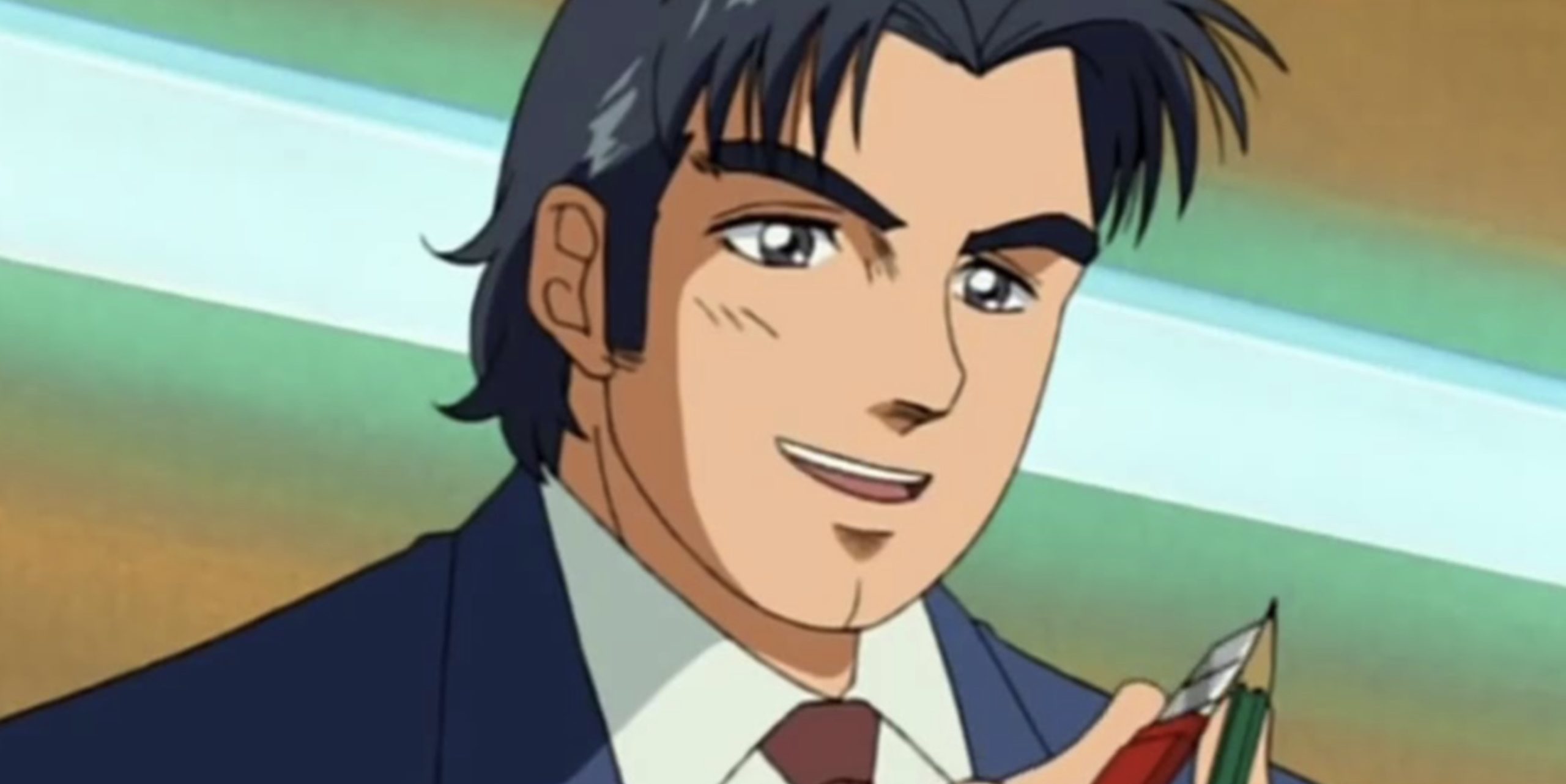
Despite its serious premise, the anime adaptation of “Salaryman Kintaro” offers intriguing insights and moments of comedy as it depicts Kintaro’s transition to his new life. The 2001 series provides a fresh perspective on late 20th-century Japan and offers a unique take on the challenges faced by individuals seeking redemption and a fresh start.
Similar to the Yakuza series, where protagonists like Kiryu explore complex moral dilemmas and strive for personal growth, Kintaro’s journey mirrors the struggles of reformed gangsters seeking to leave their past behind.
His determination to climb the corporate ladder as a promise to his late wife echoes the resilience and sense of duty exemplified by characters like Kiryu. “Salaryman Kintaro” presents a compelling exploration of the “gangster retiree” trope from the perspective of a salaryman, offering fans a fresh and engaging narrative.
27. The Way Of The Househusband
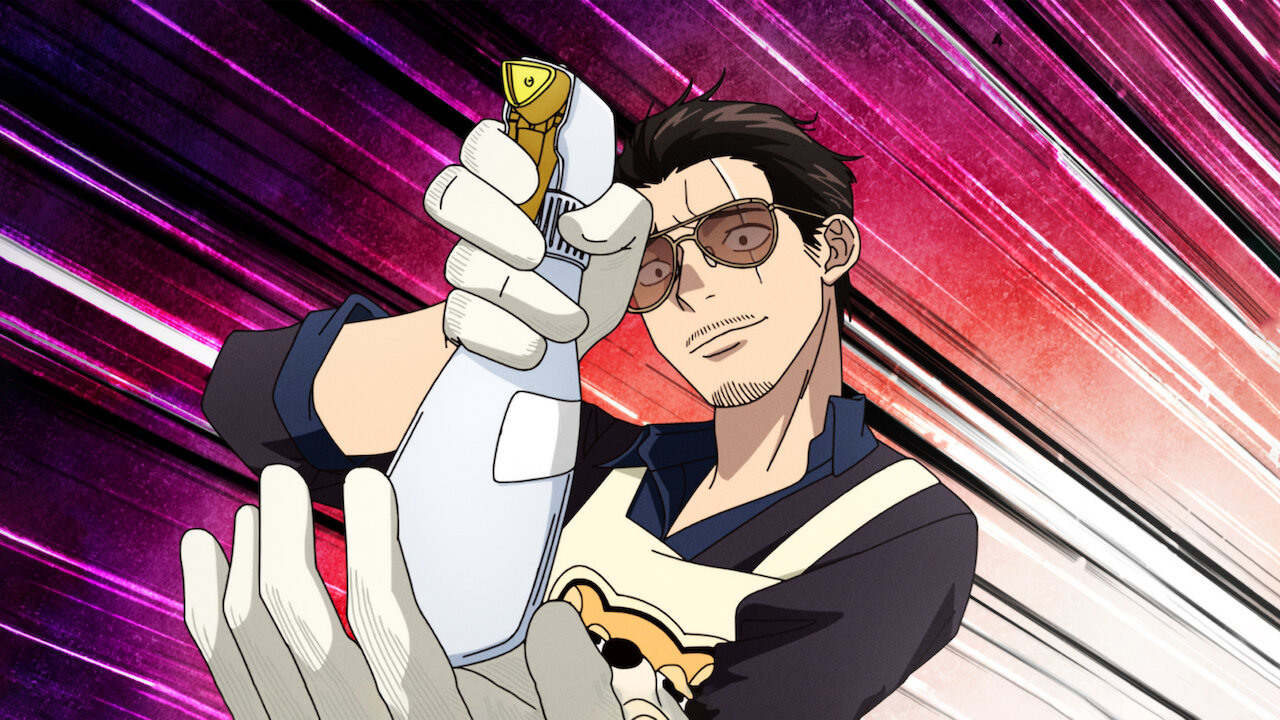
In “The Way of the Househusband” (or “Gokushufudo”), we witness the amusing scenario of Tatsu, known as the “Immortal Dragon” in his Yakuza days, trading in his life of crime to support his career-driven wife, Miku.
This slice-of-life manga later adapted into an anime in 2020, goes into the hilariously unconventional daily life of Tatsu, which proves to be anything but mundane.
Throughout the series, Tatsu is depicted engaging in ordinary household chores despite his intimidating reputation. However, his past as a Yakuza boss continually resurfaces, leading to comedic encounters with former colleagues and rivals from the underworld. Unlike the more violent portrayals of Yakuza life seen in other anime, “The Way of the Househusband” offers a refreshing take with its focus on slice-of-life elements.
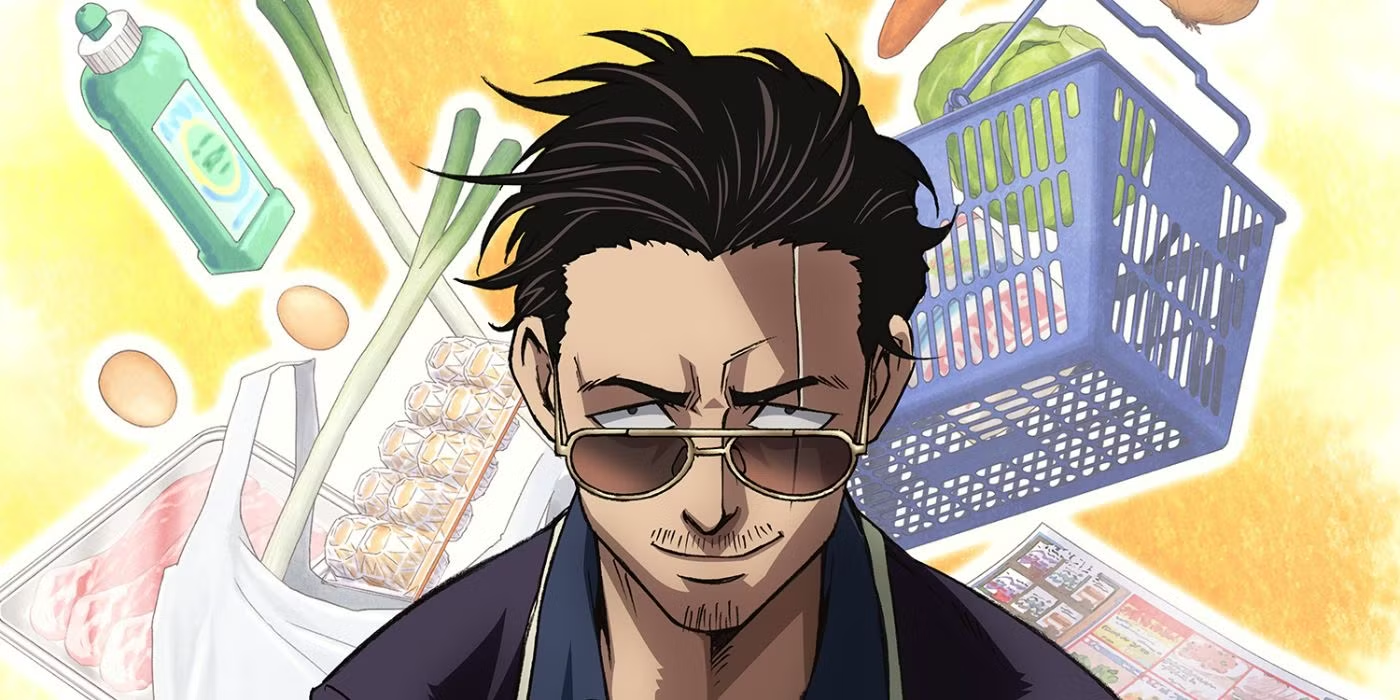
Similar to the Yakuza games, Tatsu’s attempts at retirement are often thwarted by the unexpected appearance of his Yakuza connections. The comedic tone of the series parallels the humorous misadventures of Kiryu in “Like a Dragon,” where his efforts to retire are consistently met with challenges and setbacks.
For fans seeking a lighthearted peek into the life of a former Yakuza member adjusting to domesticity, “The Way of the Househusband” offers a delightful change of pace.
The Way of the Househusband is a comedy anime that delivers hilarious moments through its absurd premise and unique storytelling style. Based on the manga by Kousuke Oono, the anime follows Tatsu, a former legendary yakuza known as “The Immortal Dragon,” who has retired from his criminal past to become a devoted househusband.
Despite leaving behind his violent lifestyle, his intense demeanor, intimidating appearance, and old yakuza habits make everyday domestic tasks ridiculously dramatic. Whether he’s cooking, cleaning, or shopping for groceries, Tatsu approaches everything with the same seriousness as if he were running a criminal empire.
One of the biggest strengths of The Way of the Househusband is its humor. The contrast between Tatsu’s terrifying presence and his domestic activities creates countless comedic moments. Simple tasks like making lunch, finding a good supermarket deal, or attending a cooking class become exaggerated, action-packed scenarios thanks to his yakuza instincts.
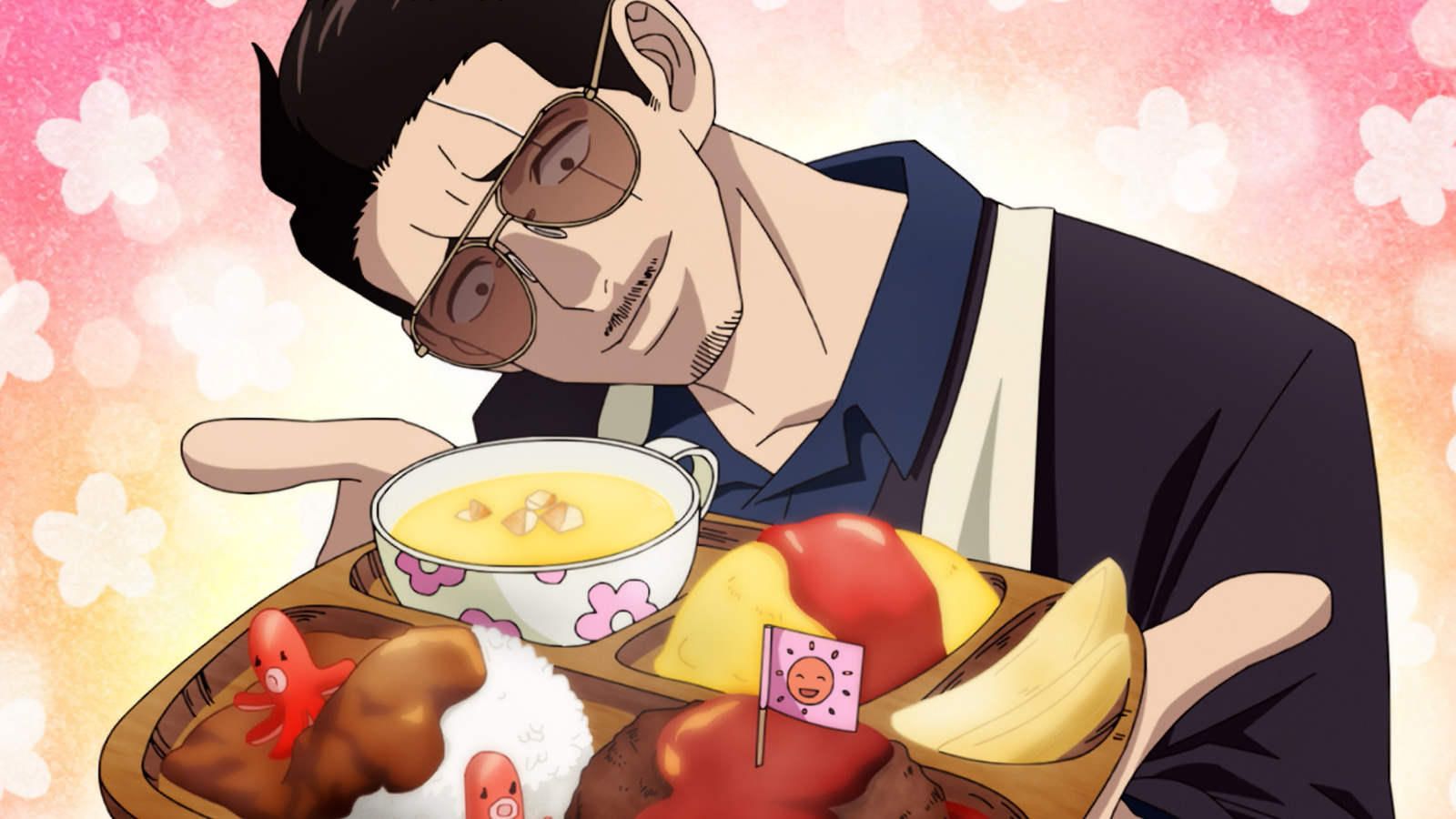
His interactions with neighbors, store employees, and old gang members further add to the humor, as they often misinterpret his actions. For example, a casual conversation about kitchen knives can sound like a violent threat, leading to awkward but hilarious misunderstandings.
The supporting characters add another layer of comedy to the series. Tatsu’s wife, Miku, is a hardworking woman who loves anime and video games, providing a fun contrast to her husband’s intensity. Despite his rough past, Tatsu is deeply in love with Miku and takes pride in being a supportive husband.
His former yakuza associates and rivals also make appearances, struggling to understand how the once-feared Immortal Dragon has embraced the domestic life. Characters like Masa, his former underling, are baffled by his transformation but still get dragged into his daily household adventures.
One of the most divisive aspects of the anime is its animation style. Instead of traditional full-motion animation, The Way of the Househusband adopts a motion-comic approach, where scenes are presented with limited movement and still frames.
While some viewers appreciate this style for staying true to the manga’s visual aesthetic, others find it underwhelming, especially for an anime adaptation. The humor and strong voice acting compensate for this, but those expecting fluid action sequences might be disappointed. Despite the limited animation, the comedic timing remains sharp, and the exaggerated expressions enhance the absurdity of the situations.
The voice acting is one of the anime’s standout elements. In the Japanese version, Kenjirou Tsuda gives a fantastic performance as Tatsu, perfectly capturing his deep, serious tone while delivering ridiculous dialogue.
His ability to make mundane conversations sound like high-stakes yakuza negotiations adds to the humor. The English dub also does a solid job, maintaining the comedic effect while adapting cultural references in a way that fits Western audiences. The voice performances play a crucial role in making the humor land effectively.
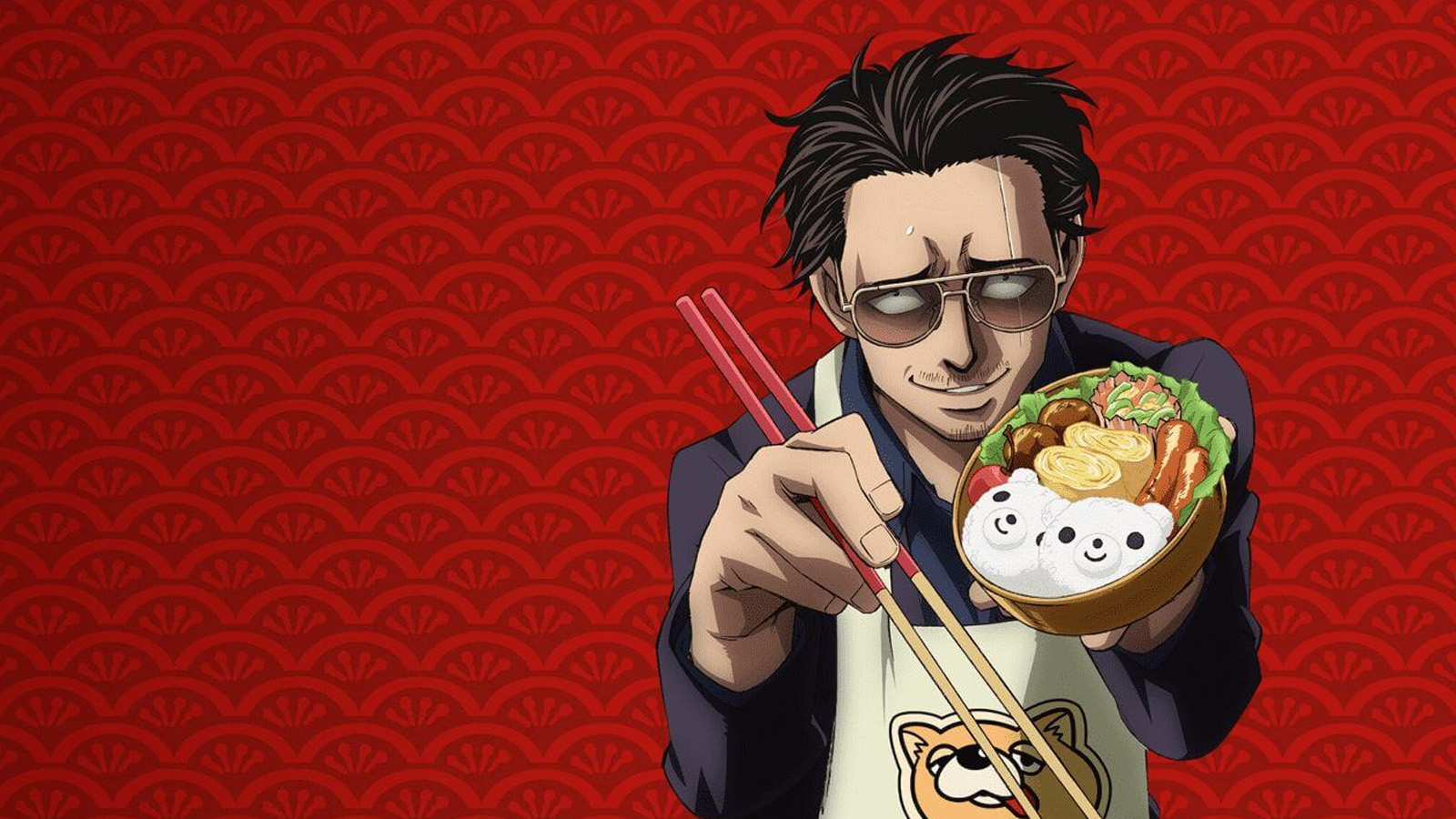
Another great aspect of the series is its episodic format, making it easy to watch casually. Each episode is divided into short segments, similar to a collection of comedic skits rather than a continuous storyline. This makes the anime a fun, lighthearted watch that doesn’t require deep investment.
It’s perfect for viewers looking for quick laughs without committing to a complex plot. The rapid-fire humor and short runtime ensure that the jokes never overstay their welcome.
Despite its comedic nature, The Way of the Househusband also carries a subtle message about personal growth and breaking stereotypes. Tatsu proves that people can change, and that masculinity isn’t defined by aggression or power but by love and dedication.
His enthusiasm for housework challenges traditional gender roles, showing that being a househusband is just as valuable as any other job. While the series primarily focuses on humor, this underlying theme adds a layer of warmth and sincerity to Tatsu’s character.
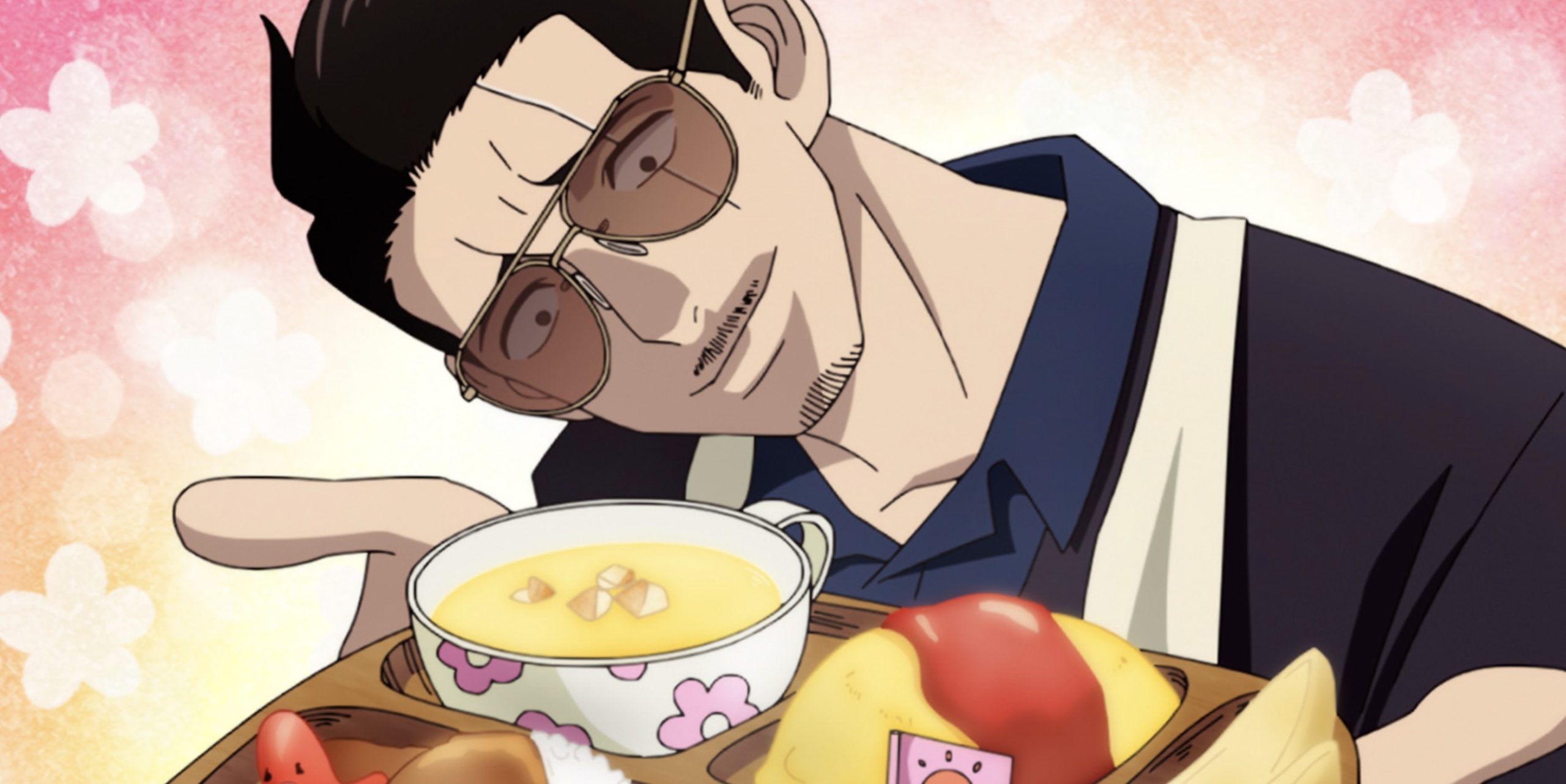
The anime isn’t without its flaws. The lack of animation is the biggest criticism, as some viewers feel that it diminishes the overall experience. Additionally, since the episodes are so short, some fans wish for more content or a more structured narrative.
However, for those who enjoy slice-of-life comedies, the charm and humor of the series make up for its unconventional presentation. The manga continues to be highly popular, so there’s always hope for a more traditionally animated adaptation in the future.
The Way of the Househusband is a refreshing and hilarious comedy that thrives on its absurd premise, strong voice acting, and unique humor. While its animation style may not appeal to everyone, the witty writing and lovable characters make it a highly entertaining watch.
Whether you’re a fan of yakuza stories, slice-of-life comedies, or just looking for a fun and lighthearted series, this anime is worth checking out. It’s a reminder that even the toughest people can find joy in the simple things—like making a perfect bento lunch or getting a good discount at the supermarket.
26. Baccano!
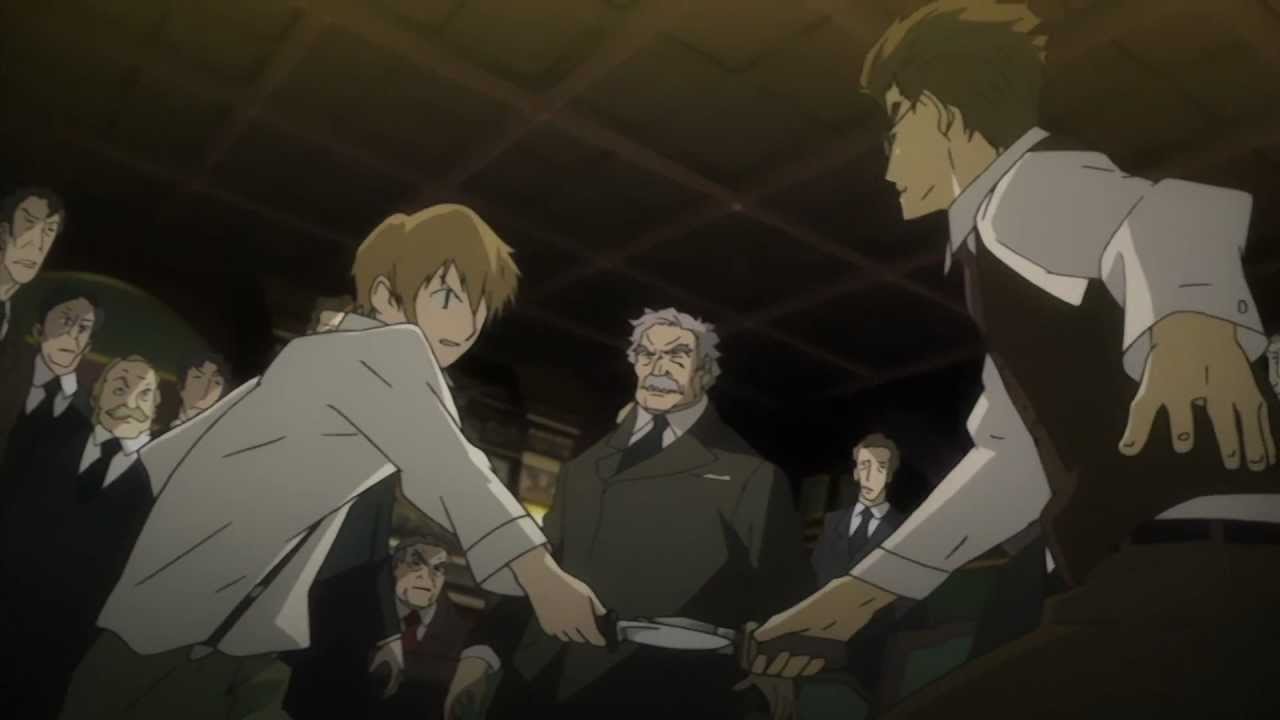
In Baccano!, the concept of immortality takes center stage as the lives of various individuals intertwine throughout different timeframes, primarily during the Prohibition Era. Immortality, achieved through alchemy, becomes a driving force for many characters who use it to pursue lives of crime or mischief.
Similar to the Yakuza series, Baccano! goes into organized crime, with characters becoming involved with mafia families and engaging in heists and other criminal activities.
Characters like Miria Harvent and Isaac Dian conduct well-intentioned but comical heists, while others form alliances with mafia families such as the Gandors and Russos.
Despite the disparate backgrounds and motives of its characters, Baccano! weaves their stories together in a complex and interconnected narrative, reminiscent of the intertwining plots and relationships found in the Yakuza franchise.
The Prohibition Era setting adds an additional layer of intrigue and historical context, offering viewers a unique perspective on crime and immortality.
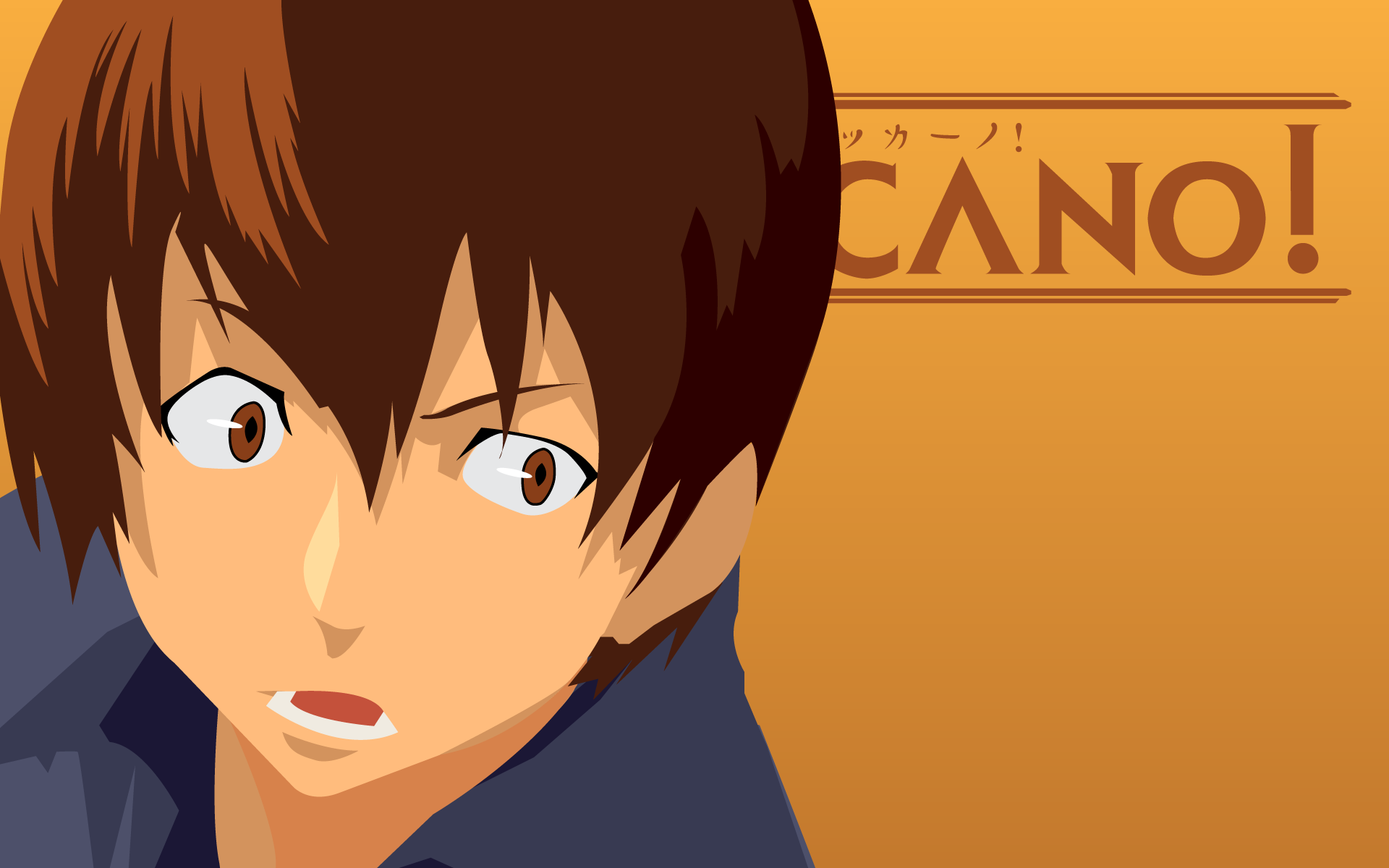
Baccano! is a unique and thrilling anime that stands out due to its nonlinear storytelling, large ensemble cast, and high-energy action. Based on the light novel series by Ryohgo Narita, the anime aired in 2007 and quickly gained a reputation as one of the most inventive and engaging shows of its time.
Set primarily in the 1930s during the Prohibition era in the United States, the story weaves together multiple narratives involving gangsters, alchemists, immortal beings, and eccentric criminals. With its fast pace, dark humor, and violent yet stylish action, Baccano! offers an unforgettable viewing experience.
One of the most striking aspects of Baccano! is its nonlinear storytelling. Instead of following a straightforward chronological order, the anime jumps between different time periods, slowly revealing how different events are interconnected.
This approach might feel confusing at first, but as the pieces of the puzzle come together, the payoff is incredibly satisfying. It keeps the audience engaged, rewarding attentive viewers who pick up on small details and connections between characters. The anime’s structure feels almost like a Tarantino film, where the chaos gradually forms a cohesive and exhilarating narrative.
The anime boasts an impressive ensemble cast, each with their own unique personality and motives. At the center of the story is a group of immortal alchemists who have gained the ability to regenerate from any injury, leading to violent yet often darkly comedic confrontations.
Among them is the sinister Szilard Quates, who seeks to eliminate other immortals for his own gain, and the kindhearted Maiza Avaro, who wishes to keep their existence a secret. Meanwhile, different groups, including mafia families like the Gandors and Runoratas, petty thieves, assassins, and eccentric individuals, all play a role in the larger story.
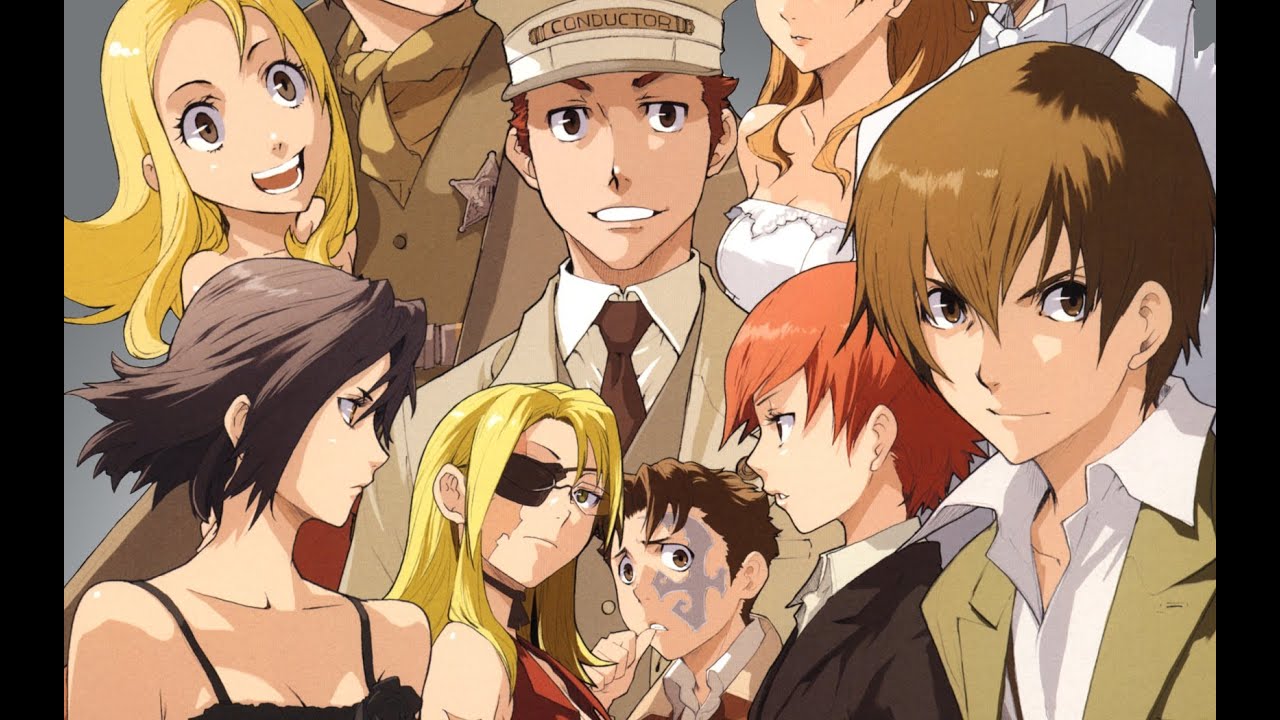
Two of the most memorable characters in the series are Isaac Dian and Miria Harvent, a pair of lovable yet completely clueless thieves. Their comedic antics provide some of the best moments in the anime, balancing out the darker and more violent aspects of the story.
Despite their ridiculous schemes—such as attempting to steal from a train or trying to rob a museum while being oblivious to the chaos around them—they bring warmth and charm to the series. Their presence lightens the mood, making them fan-favorite characters.
One of the most intense and central storylines revolves around the Flying Pussyfoot, a transcontinental train where multiple groups, including gangsters, cultists, assassins, and immortals, clash in a brutal and chaotic battle.
The train ride is filled with nonstop action, suspense, and shocking twists, making it one of the most memorable settings in anime history. The presence of Ladd Russo, a sadistic and charismatic hitman who revels in violence, adds another layer of unpredictability. His over-the-top personality and brutal fighting style make him both entertaining and terrifying to watch.
The animation, handled by Brain’s Base, is vibrant and fluid, perfectly capturing the 1930s aesthetic. The character designs are distinct, allowing each member of the large cast to stand out. The action sequences are dynamic and well-choreographed, making every fight feel impactful.
Whether it’s a shootout between mafia members, a knife fight between assassins, or a supernatural confrontation between immortals, the action is consistently engaging. The visual style, combined with detailed backgrounds and period-accurate clothing, helps immerse viewers in the Prohibition-era setting.
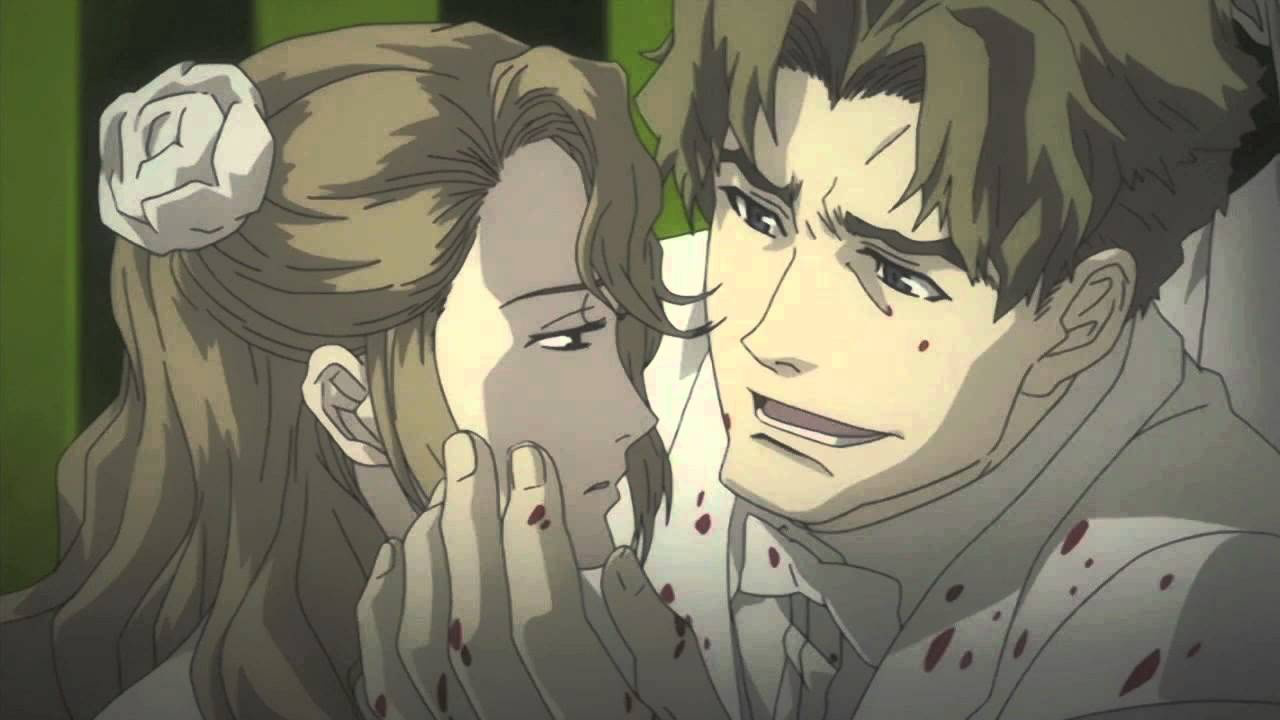
The soundtrack, composed by Makoto Yoshimori, is another highlight. The jazz-inspired music perfectly complements the fast-paced and chaotic nature of the series. The opening theme, “Guns & Roses” by Paradise Lunch, is one of the most iconic anime openings, instantly setting the tone with its upbeat and stylish jazz melody.
The background music enhances both comedic and intense moments, making the overall experience even more immersive.
Despite its brilliance, Baccano! is not an anime for everyone. Its nonlinear structure can be overwhelming for those who prefer a more traditional narrative, and its large cast means that not every character gets extensive development.
Additionally, due to its relatively short length—only 13 episodes, plus three additional OVAs—some plotlines are left open-ended or underexplored. However, these minor drawbacks do not take away from the overall excitement and originality of the series.
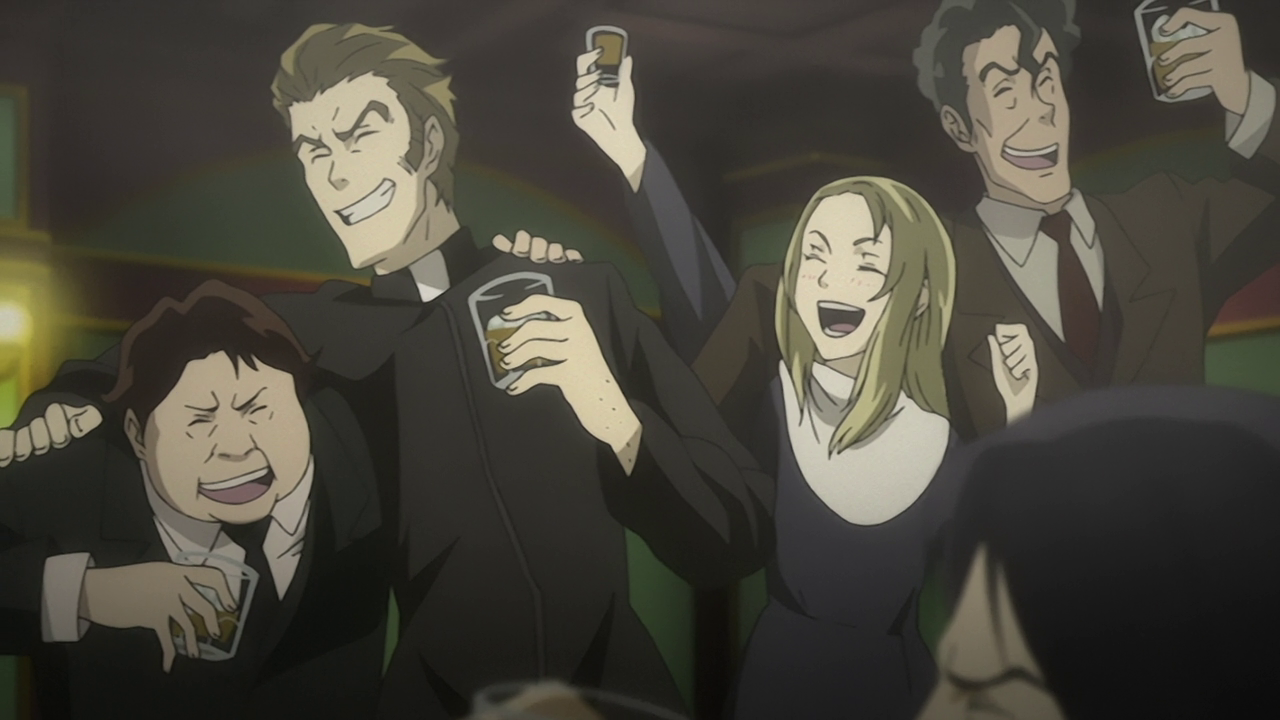
One of the most fascinating aspects of Baccano! is how it blends multiple genres seamlessly. It’s a crime thriller, an action-packed adventure, a dark comedy, and a supernatural mystery all at once. The anime never takes itself too seriously, yet it manages to deliver emotional and impactful moments.
The immortality aspect adds an intriguing twist, as death is not always the end for characters, leading to creative and unexpected outcomes in conflicts.
Baccano! is a one-of-a-kind anime that delivers a wildly entertaining experience from start to finish. Its unpredictable storytelling, eccentric cast, stylish animation, and jazz-infused soundtrack make it a standout in the medium.
While it requires patience and attention to fully appreciate, the reward is an intricately woven tale filled with action, humor, and unforgettable moments. Whether you’re a fan of gangster stories, supernatural mysteries, or just unique and well-crafted anime, Baccano! is an absolute must-watch.
25. Dorohedoro
Dorohedoro, despite its manga origins spanning from 2000 to 2014, finally received its long-awaited anime adaptation in 2019, and it proved to be well worth the wait. Set in a dystopian modern fantasy world, the series embodies all the elements necessary for a Yakuza-esque setting, with its three major factions each ruling over their own crime-infested society.
At the heart of the story lies the Hole, a favela-like city inhabited by powerless Humans who find themselves caught in the power struggle between rival Sorcerer factions.
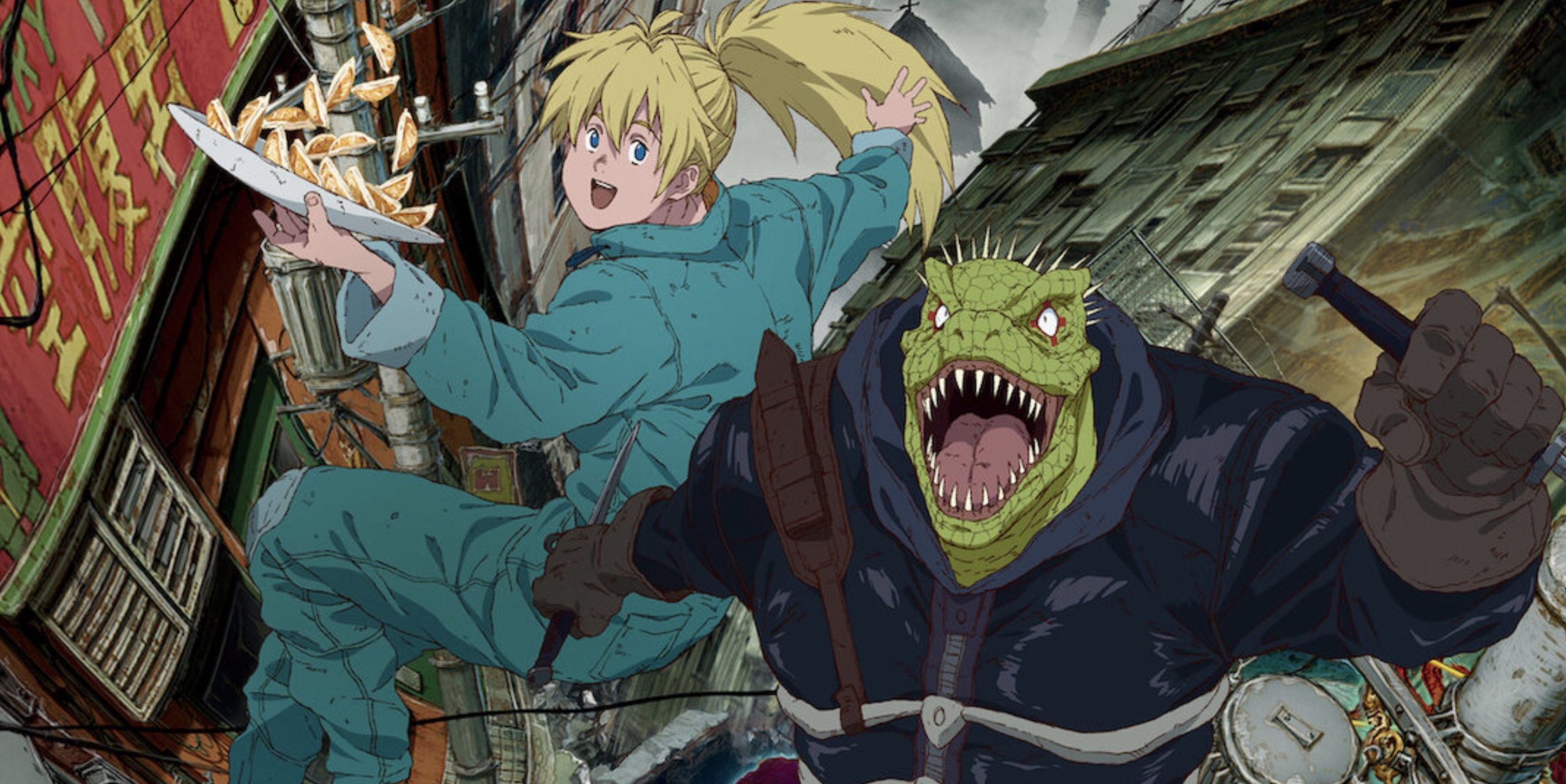
Protagonist Caiman, a reptile-headed amnesiac, begins a quest to uncover the truth about his past and reverse the curse that deformed his head. Along the way, he becomes entangled with the rebellious Cross-Eyes gang and draws the ire of En, the powerful crime boss who seeks to thwart his endeavors.
The intrigue surrounding Caiman’s amnesia and his involvement with warring factions provides a fresh take on the Yakuza formula. While Caiman’s appearance may differ from the protagonists of Like a Dragon, the dynamics within institutions like the En Family, the Cross-Eyes Gang, and the various rogues of the Hole mirror the complex interplay between interacting clans in the Yakuza games.
Caiman’s journey of self-discovery and his quest for identity resonate with viewers, much like the personal missions undertaken by Kazuma Kiryu, Kasuga Ichiban, and Goro Majima in the Yakuza series.
In Dorohedoro, as in Yakuza, the exploration of personal motivations and relationships within the context of a criminal underworld adds depth and complexity to the narrative, making it an amazing and immersive experience for fans of both series.
24. Kemonozume
In Yakuza-themed anime, Kemonozume stands out for its supernatural twist. Set in 2006, the anime follows the Momota Family, who specialize in the Kifuken martial arts to combat the Shokujinki, terrifying supernatural creatures with a penchant for human flesh.
However, what sets Kemonozume apart is its exploration of romance, particularly between Toshihiko, the heir of the Momota Family, and Yuka, a Shokujinki. This forbidden love story parallels the themes often seen in Yakuza tales, where one’s affiliation with the criminal underworld complicates personal relationships.
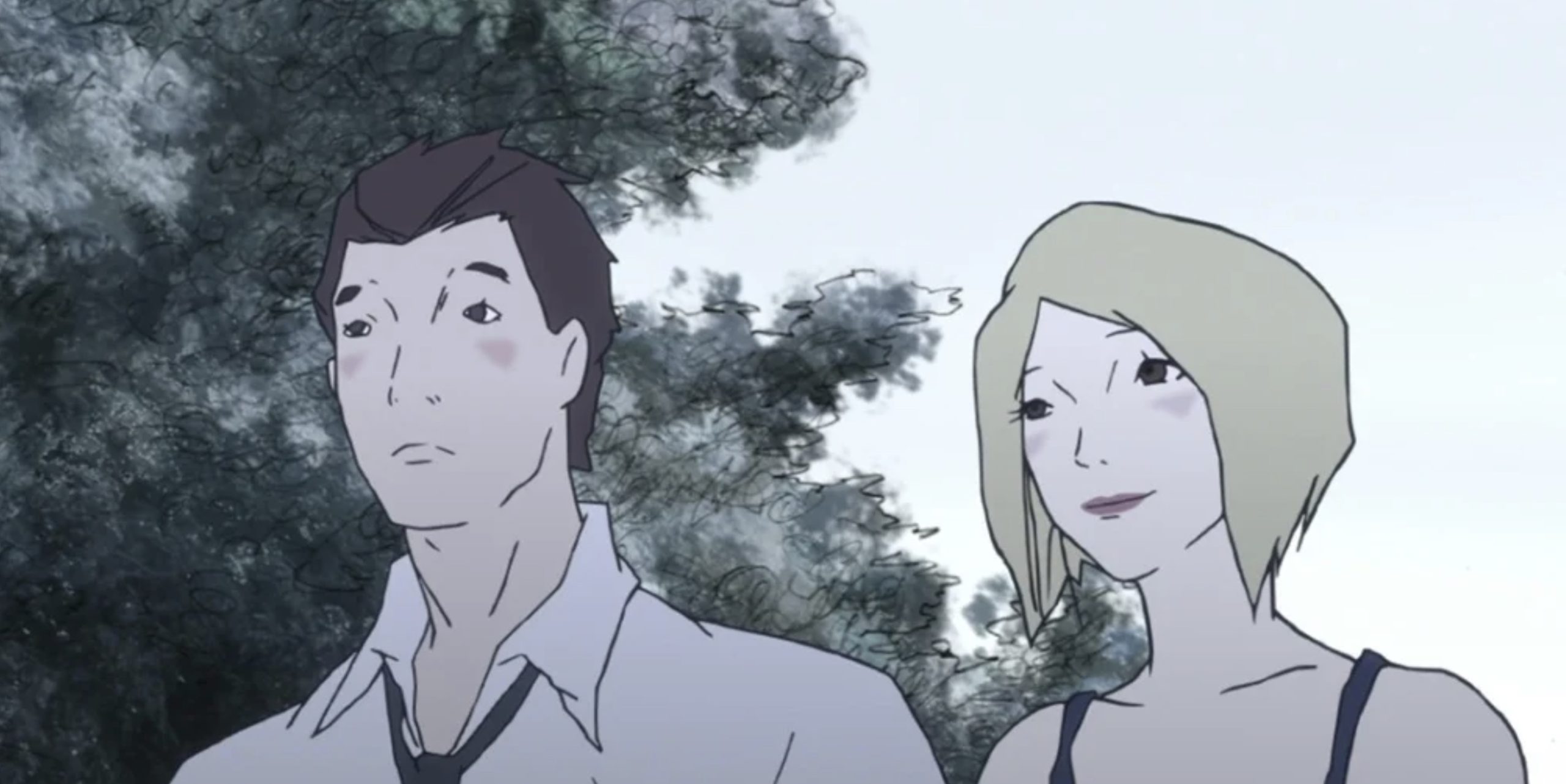
Yet, Kemonozume emphasizes the power of love to transcend such barriers, showcasing the resilience of human connection in the face of adversity.
In its depiction of the Kifuken School, Kemonozume draws parallels to traditional Yakuza families, with their secretive nature and institutional hierarchy. While their primary focus is on hunting down Shokujinki rather than engaging in criminal activities, the complex relationships within the Kifuken School echo the intricate dynamics found within Yakuza organizations.
Much like the intricate web of alliances and rivalries in Like a Dragon, the characters in Kemonozume explore a similarly convoluted network of friends and foes within their martial arts community, adding depth and complexity to the narrative.
23. Akira
In the annals of anime history, Akira stands as a seminal work, a potent symbol in both the cyberpunk and punk genres. Released in 1988, it remains a powerful icon, immersing viewers in a dystopian future where the accidental destruction of Tokyo in 1988 precipitated a world war, plunging Neo-Tokyo into chaos characterized by corruption, terrorism, and rampant gang violence.
At the heart of Akira’s narrative is protagonist Shotaro Kaneda, whose days are spent battling rival gangs in a bid to establish the dominance of his own gang, the Capsules.
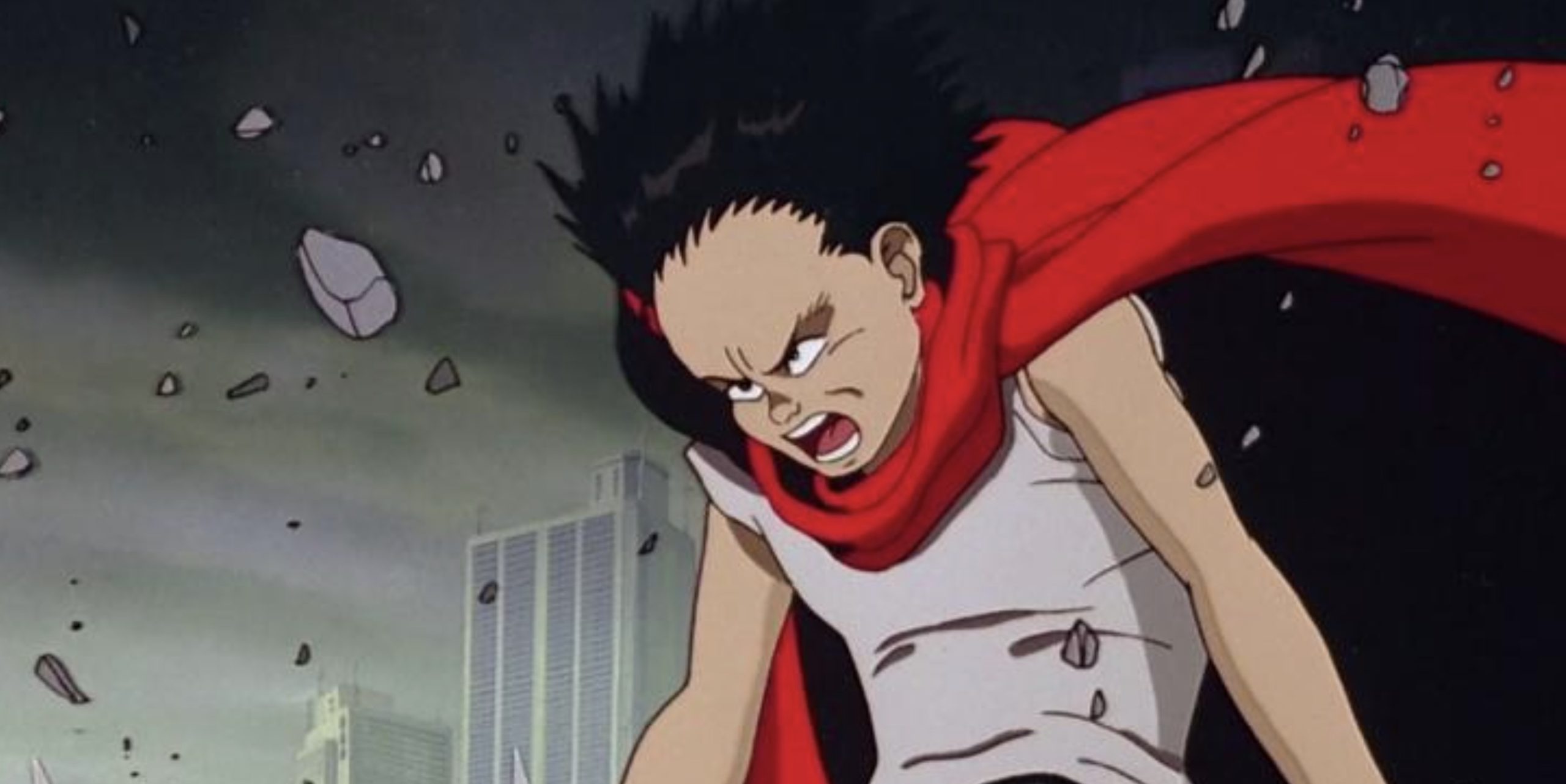
However, a fateful encounter involving his friend Tetsuo Shima and the esper Takashi, who seeks escape from a government research facility, sets off a chain of events that awakens Tetsuo’s latent psychic abilities, akin to those of the legendary esper Akira who wrought destruction upon Tokyo in 1988.
While Akira offers a heady blend of action and philosophical exploration, its focus on gang life takes a backseat to its broader narrative themes. Nevertheless, the dynamics within the Capsules biker gang bear a striking resemblance to the themes prevalent in the Yakuza series.
While the Capsules may not constitute a vast criminal organization akin to the Yakuza, the concepts of bravery, camaraderie, and loyalty among its members echo the bonds shared by characters like Kiryu and Nishikiyama in the Yakuza universe.
The complex interplay between friends-turned-enemies, as exemplified by Kaneda and Tetsuo, mirrors the intricate relationships depicted in the Yakuza series, offering viewers a compelling exploration of loyalty, betrayal, and the bonds of brotherhood in the face of adversity.
22. Emblem Take 2
Emblem Take 2, despite its name, doesn’t follow the traditional sequel format. Instead, it offers a unique premise where Kaeda Yakuza member Akutsu Jouji is granted a second chance at life.
A decade of misery follows a fateful altercation with university students in 1983, leading Jouji to contemplate suicide after his friend is tasked with ending his life.
However, when Jouji miraculously finds himself ten years in the past in 1993, he resolves to seize the opportunity to live differently with the knowledge of the future.
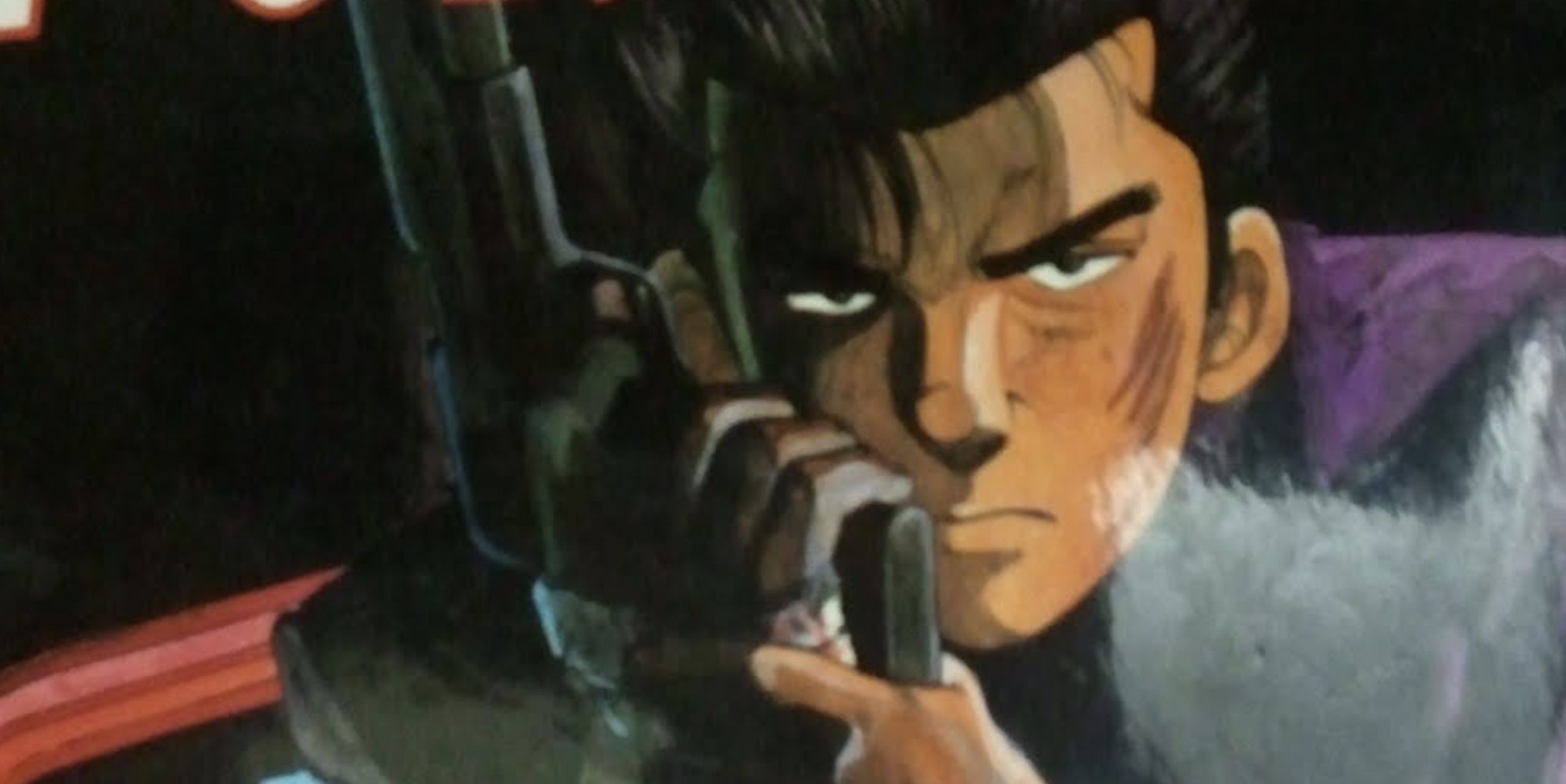
In Yakuza narratives, it’s uncommon to encounter a sci-fi twist interwoven with philosophical themes, especially from the perspective of a character like Jouji, who embodies the stereotype of a gangster.
While Emblem Take 2 maintains mature imagery, its exploration of themes like second chances adds depth to the storyline, offering a refreshing take on the genre.
In comparison to the wild tales often found in the Yakuza franchise, Emblem Take 2 presents a more subdued yet intriguing narrative with subtle sci-fi elements.
Jouji’s journey of redemption through time prompts contemplation on the choices and circumstances that shape the lives of Yakuza members, providing nuanced insights into characters like Kiryu and his cohorts and their paths throughout the franchise.
21. Naniwa Yuukyouden (OVA)
Also known as “Osaka Tough Guys” or “Naniwa Spirit,” the tale of Naniwa Yuukyouden revolves around the escapades of the Kinshu Group, led by the formidable Taido Kaimon.
Their antics frequently land them in hot water with law enforcement, the opposite sex, and even among themselves. The narrative, typical of Yakuza stories, is peppered with mild nudity, a hallmark of older adult-oriented anime.
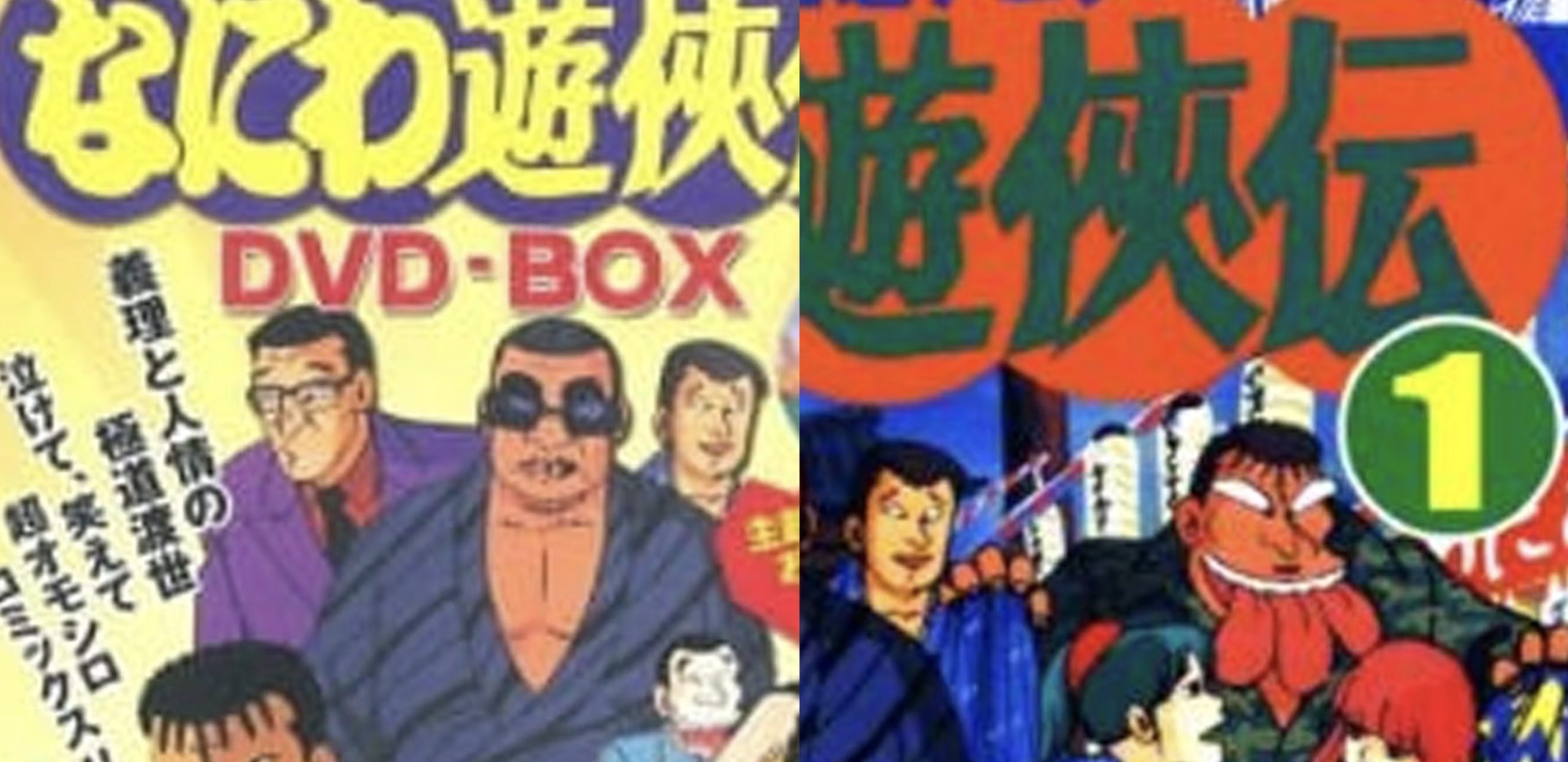
Despite its mature themes, Naniwa Yuukyouden offers a fresh perspective on the tropes often explored in traditional Yakuza media. The portrayal of Yakuza members as cunning leaders, violent enforcers, and even comedic figures adds depth to the narrative, showcasing the multifaceted nature of organized crime in Japan.
While the mature content of Naniwa Yuukyouden may raise eyebrows, its comedic approach provides valuable context for understanding the more nuanced aspects of the Yakuza universe.
Though the humor may feel dated by contemporary standards, the OVA’s contribution to the evolution of Yakuza storytelling is undeniable. It serves as a reminder of how the genre has progressed, offering more complex narratives that go into the intricacies of organized crime without relying solely on hyper-violence for impact.
20. High School Jingi
When Aki Jouji, a former member of the Yakuza, finds himself tasked with teaching at Gokuraku Private High School by his boss, the transition isn’t smooth sailing. Initially struggling to connect with his younger students, Jouji’s discomfort often leads him to revert to his old gangster habits, resorting to unconventional methods like brandishing his guns to assert authority.
Yet, amidst the chaos, Jouji’s quirky antics endear him to the students, especially when he reveals his unexpectedly adorable “kewpie” eyes beneath his sunglasses.
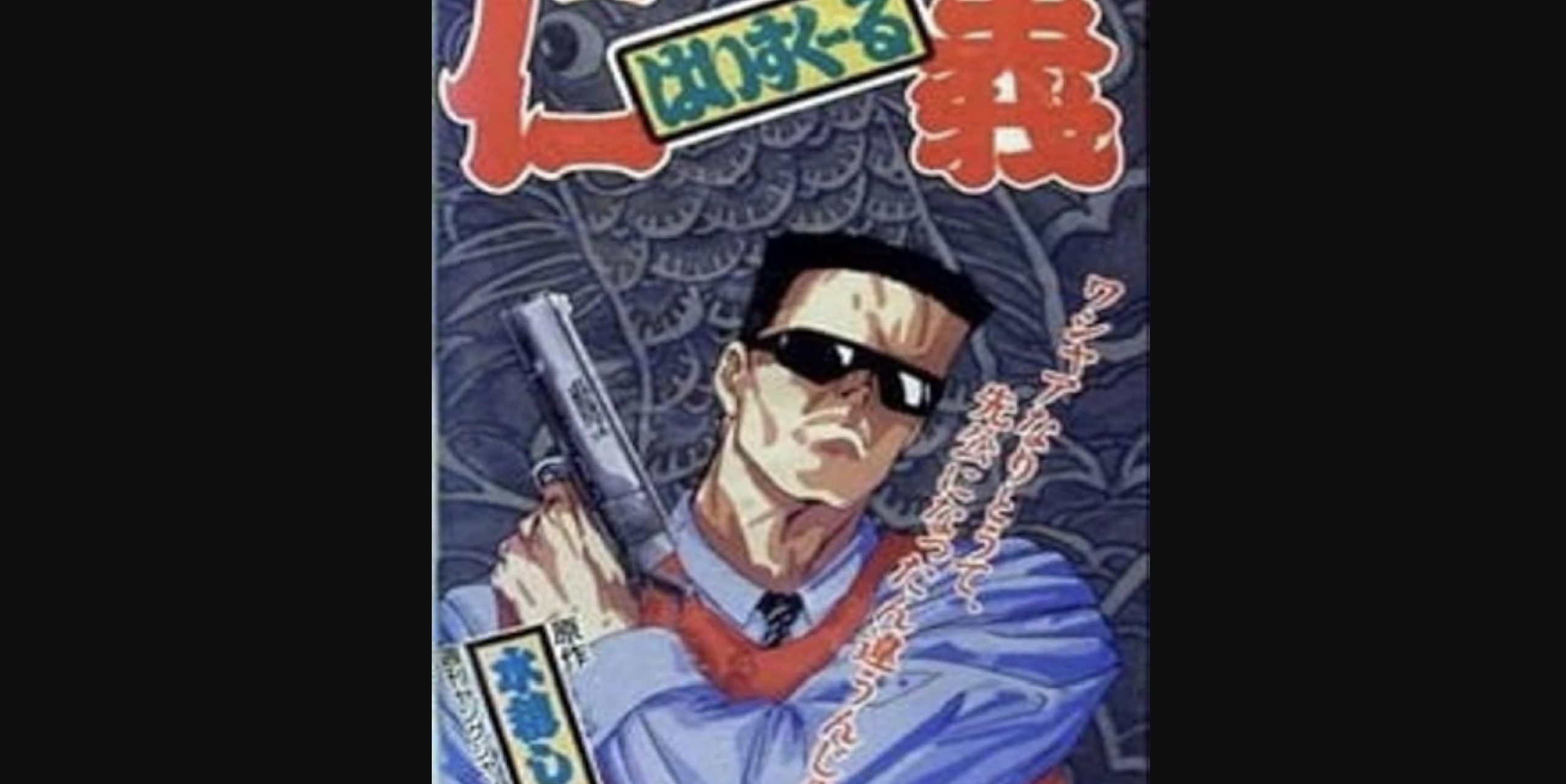
This charming quirk earns him the nickname “Kewpie From Hell,” a recurring joke throughout the series. At the heart of the comedy lies Jouji’s unrequited crush on Reiko Shiratori, whom he’s determined to keep in the dark about his criminal past.
Some may argue that “High School Jingi” lacks the depth and polished humor of a similar series, citing its dated animation and dry wit as drawbacks.
However, despite these criticisms, the show stands out for its unique portrayal of a regular Yakuza member thrust into the role of a teacher, rather than a protagonist with tangential ties to the underworld.
In many ways, “High School Jingi” mirrors the slice-of-life elements seen in the Yakuza games, deviating from the genre’s tendency towards excessive violence.
While it may not reach the same heights as acclaimed series like “Gokusen” or “GTO,” “High School Jingi” offers a refreshing take on the gangster-turned-teacher trope, injecting humor and humanity into a typically gritty narrative.
19. Banana Fish
In 80s storytelling, Banana Fish stands out as a masterpiece, lauded for its bold exploration of modern themes amidst a plotline dominated by romantic fantasies.
Originally a critically acclaimed manga, Banana Fish was adapted into an anime in 2018, amazing audiences with its gripping narrative centered around street gang leader Ash Lynx.
As Ash goes into the mystery of “banana fish,” he finds himself entangled in a web of conspiracy that irrevocably alters his life. The anime goes deep into Ash’s tumultuous past as an abused child of Corsican mafia boss Dino Golzine, as he grapples with his traumatic upbringing and sets out to dismantle the very organization that once groomed him for leadership.
While Banana Fish may be more mature in its storytelling compared to Yakuza, its setting in New York offers a refreshing departure from the Japan-focused narratives typically seen in the genre.
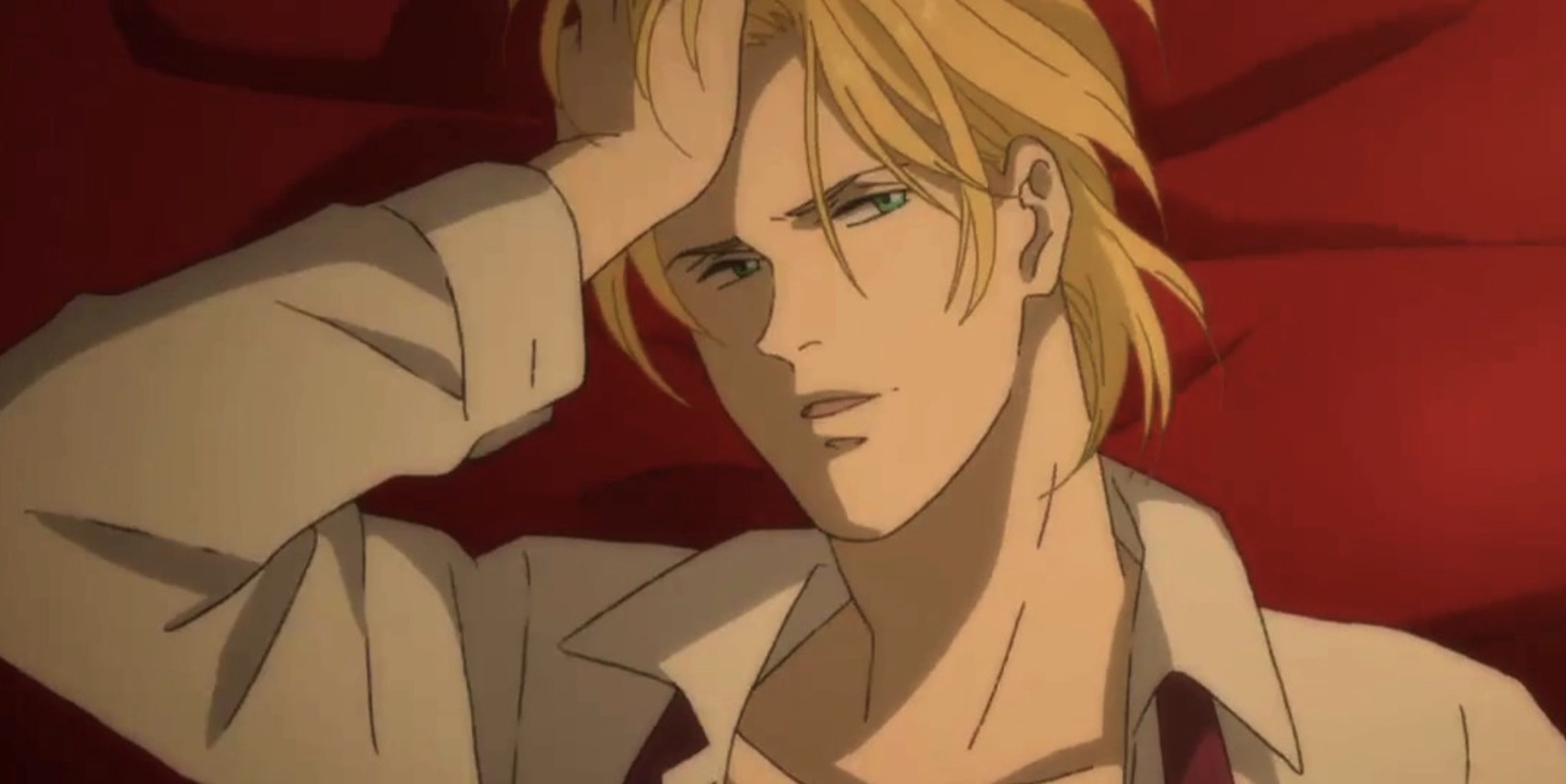
The series serves as an amazing exploration of complex characters and dark themes, offering viewers a compelling and evocative journey through the gritty streets of New York City.
The personal journeys depicted in Banana Fish resonate with the struggles faced by Kazuma Kiryu throughout his adventures in the Like a Dragon franchise. Both narratives go deep into the protagonists’ inner conflicts and challenges, extending beyond mere confrontations with rival criminal factions.
In Banana Fish, Ash Lynx’s exploration of the “banana fish” phenomenon leads him on a path fraught with danger and discovery, mirroring Kiryu’s own quest for truth and redemption.
What sets Banana Fish apart is its unique perspective on gang life and culture, particularly within the context of the 1980s United States. While Like a Dragon primarily explores in the Japanese underworld, Banana Fish offers viewers an amazing peek into the gritty streets of America, providing a fresh take on familiar themes of loyalty, betrayal, and survival.
For fans of Like a Dragon seeking a compelling exploration of gang dynamics from a Western viewpoint, Banana Fish proves to be a riveting and thought-provoking watch.
18. Bungo Stray Dogs
In the anime, Bungo Stray Dogs offers a unique perspective on the investigators through the lens of the Armed Detective Agency.
Protagonists Atsushi Nakajima and Osamu Dazai, endowed with superhuman abilities, find themselves embroiled in the affairs of other supernaturally gifted groups, expanding their investigations beyond conventional bounds.
While the series doesn’t directly focus on the Yakuza, Bungo Stray Dogs presents an amazing exploration of detective work from the viewpoint of individuals with extraordinary powers.
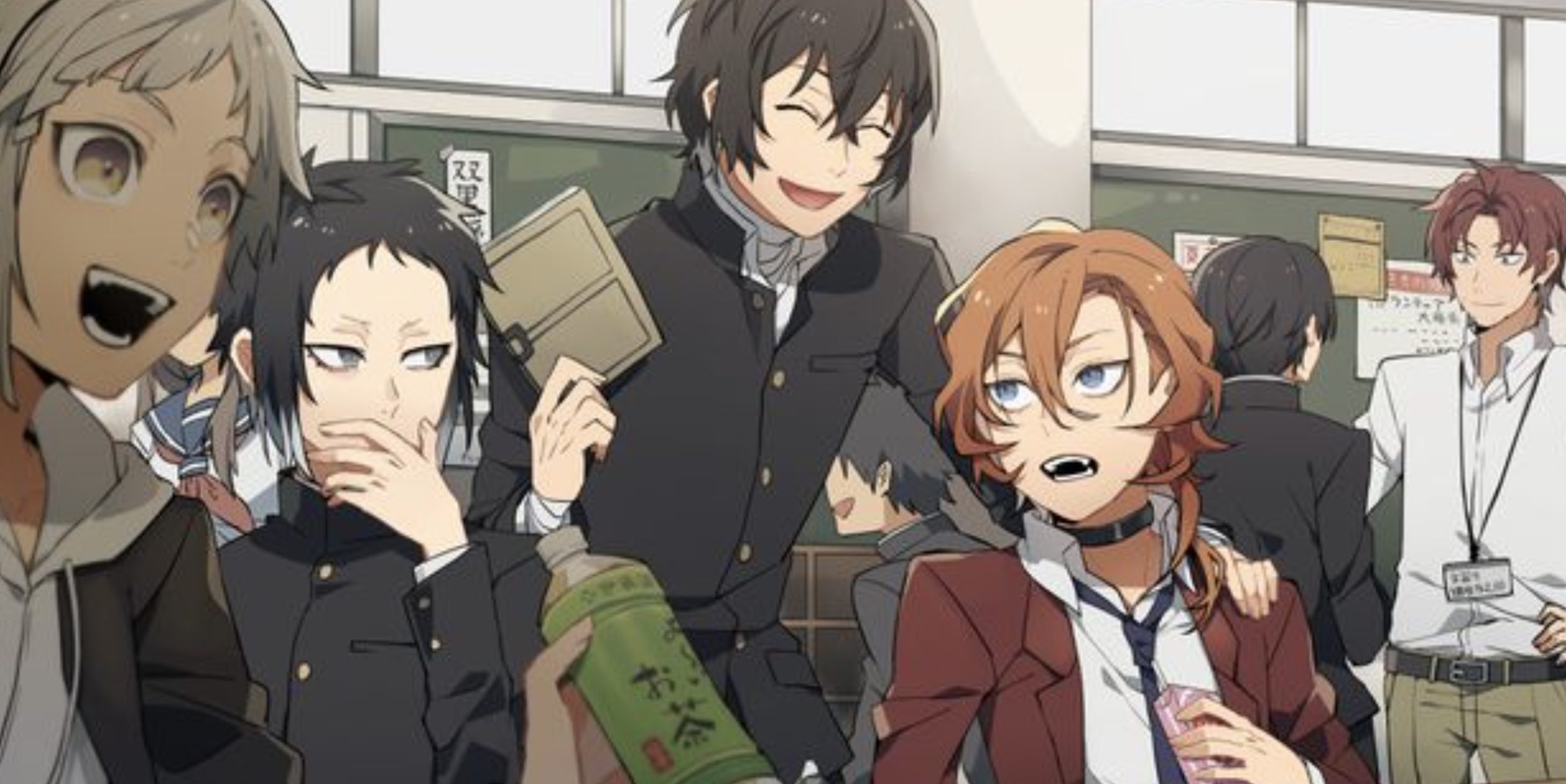
Organizations like the Port Mafia, the Guild, and the Decay of Angels, which operate outside the Agency, exhibit Yakuza-like qualities with their involvement in activities that skirt the edges of legality.
Similar to the intricate dynamics between Yakuza families and organizations like the Ministry of Intelligence Agency depicted in Like a Dragon, Bungo Stray Dogs reveals a complex network of factions within its world.
The protagonist’s Armed Detective Agency is just one component of the Tripartite Framework, alongside the Military Police and the Port Mafia, responsible for managing Ability Users. Fans intrigued by the interplay between factions in Like a Dragon are sure to find Bungo Stray Dogs’s portrayal of these relationships equally enthralling.
17. The Millionaire Detective Balance: Unlimited
In anime, the focus on the daily operations of modern police forces is a rarity, making The Millionaire Detective Balance: Unlimited a standout with its portrayal of the comedic escapades of detectives Daisuke and Haru.
The story kicks off with the arrival of the affluent detective Daisuke Kambe at the Modern Crime Prevention Headquarters, where officers with a penchant for trouble are stationed.
Paired with the fiery Haru Kato, their contrasting personalities fuel hilarious clashes, particularly over Daisuke’s tendency to rely on bribery.
While The Millionaire Detective may not immediately go into the Yakuza, its exploration of law enforcement offers a compelling contrast to the criminal underworld.
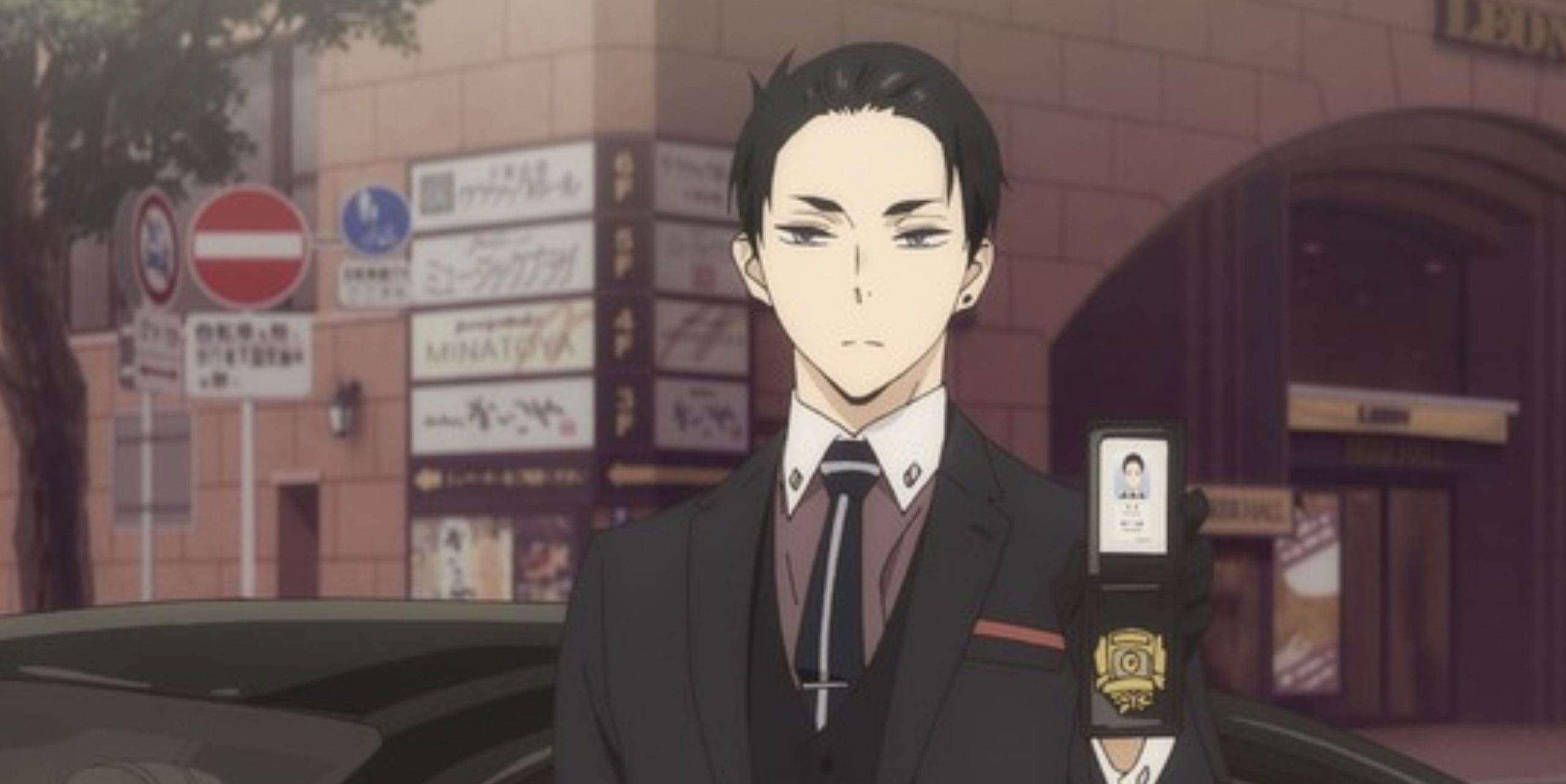
The anime provides a fresh perspective on police activities, offering insights into the challenges and dynamics of pursuing individuals akin to Yakuza protagonists like Kazuma Kiryu and Ichiban Kasuga.
The dynamic between Daisuke Kambe and Haru Katou mirrors the archetype of the buddy-cop duo, presenting a more “official” angle on why characters like Kiryu might have worked as secret agents for the police rather than affiliating with factions like the Daidoji Faction.
The Modern Crime Prevention Headquarters resembles entities like the Ministry of Intelligence Agency from the Like A Dragon games, providing viewers with a peek into the investigative side of law enforcement as they solve crimes and pursue criminals, a departure from the perspective of Yakuza evading capture.
16. Buddy Daddies
For aficionados of the Yakuza series seeking a fresh take on unconventional family dynamics, Buddy Daddies offers a compelling narrative. The anime follows assassins Kazuki Kurusu and Rei Suwa as they unexpectedly find themselves caring for Miri Unasaka, the child of their recent assassination target.
The premise of criminals assuming parental responsibilities echoes Kazuma Kiryu’s journey in the Yakuza series, particularly his establishment of Sunshine Orphanage.
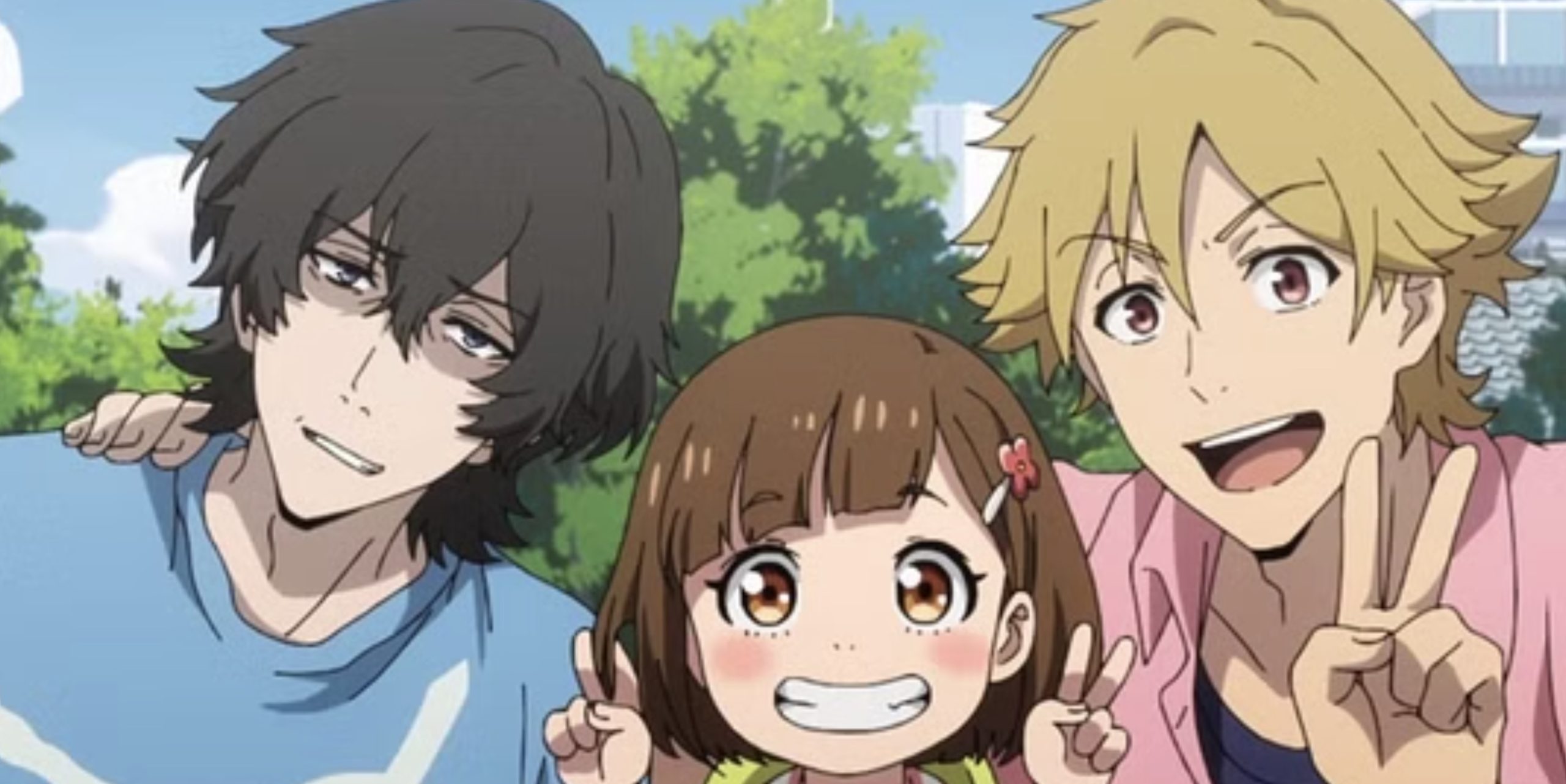
Viewers are treated to the contrasting personalities of Kazuki, who is lively and well-informed, and Rei, who is stoic and skilled in combat, as well as the origins of their unlikely friendship.
In Buddy Daddies, parallels can be drawn between the dynamic of Kazuki and Rei and that of Kazuma Kiryu and his former partner Akira Nishikiyama.
However, unlike Kiryu’s experiences, the anime duo must explore the complexities of their profession while caring for a child, reminiscent of Kiryu’s dual role in managing the Morning Glory Orphanage while being called back into the Yakuza world.
Although Yakuza themes are not front and center in Buddy Daddies, witnessing Kazuki and Rei balance their contractual obligations with everyday life evokes memories of Kiryu’s early days and the challenges he faced.
15. Spy x Family
In Spy x Family, Loid Forger leads a double life as both an ordinary husband and the elusive secret agent known as Twilight. Tasked with maintaining peace between the nations of Westalia and Ostania, Loid’s mission involves spying on the reclusive Donovan Desmond, a key figure in Ostania’s power structure.
To infiltrate Desmond’s inner circle, Loid orchestrates a cunning plan: he marries Yor Briar, a seemingly ordinary woman who unbeknownst to him is a skilled assassin, and together they adopt Anya, a child with telepathic abilities. The resulting trio’s interactions are filled with comedic deception, providing a refreshing departure from the typical Yakuza narrative.
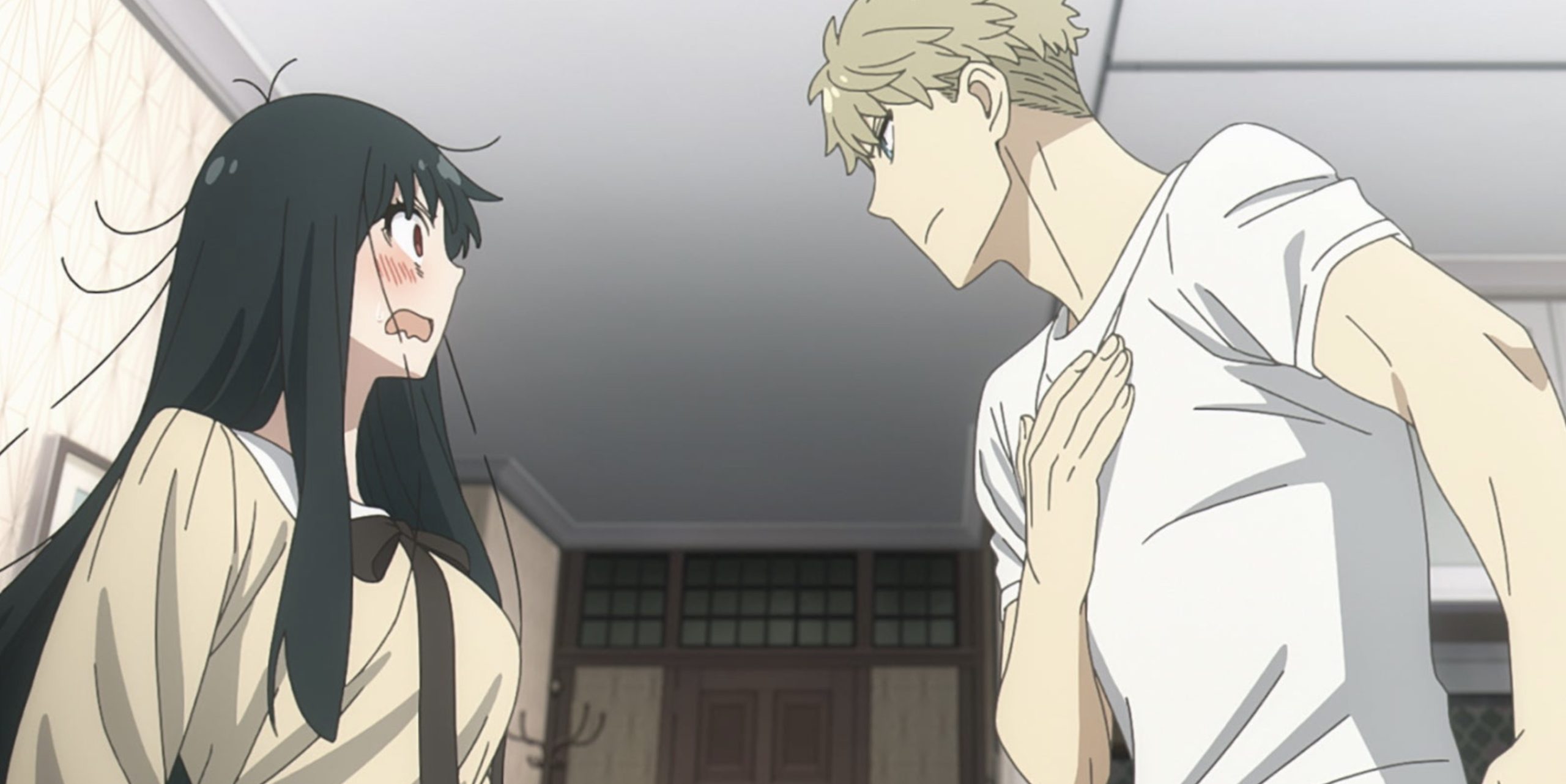
Despite the light-hearted family dynamics, Spy x Family shares similarities with Yakuza in its portrayal of characters exploring complex relationships and dangerous situations while striving to achieve their objectives.
While the criminal factions in Spy x Family are distinctly Western-inspired rather than Japanese Yakuza, fans of the Yakuza series will find familiarity in the themes of loyalty, intrigue, and unconventional alliances depicted in the anime.
14. Sanctuary
The dynamic of best friends turned rivals is a classic trope found in many shonen and seinen tales, and it’s a theme embraced by Sanctuary. Survivors of the Khmer Rouge massacre, Asami and Houjou seek solace and purpose in Japan, aspiring to carve out their own “sanctuary,” even if they must forge it themselves. Their paths diverge as one enters politics while the other goes into the underworld as a gangster.
As their ambitions drive them to climb the ranks in their respective fields, Asami and Houjou find themselves on a collision course, their once unbreakable bond strained by conflicting loyalties and goals.
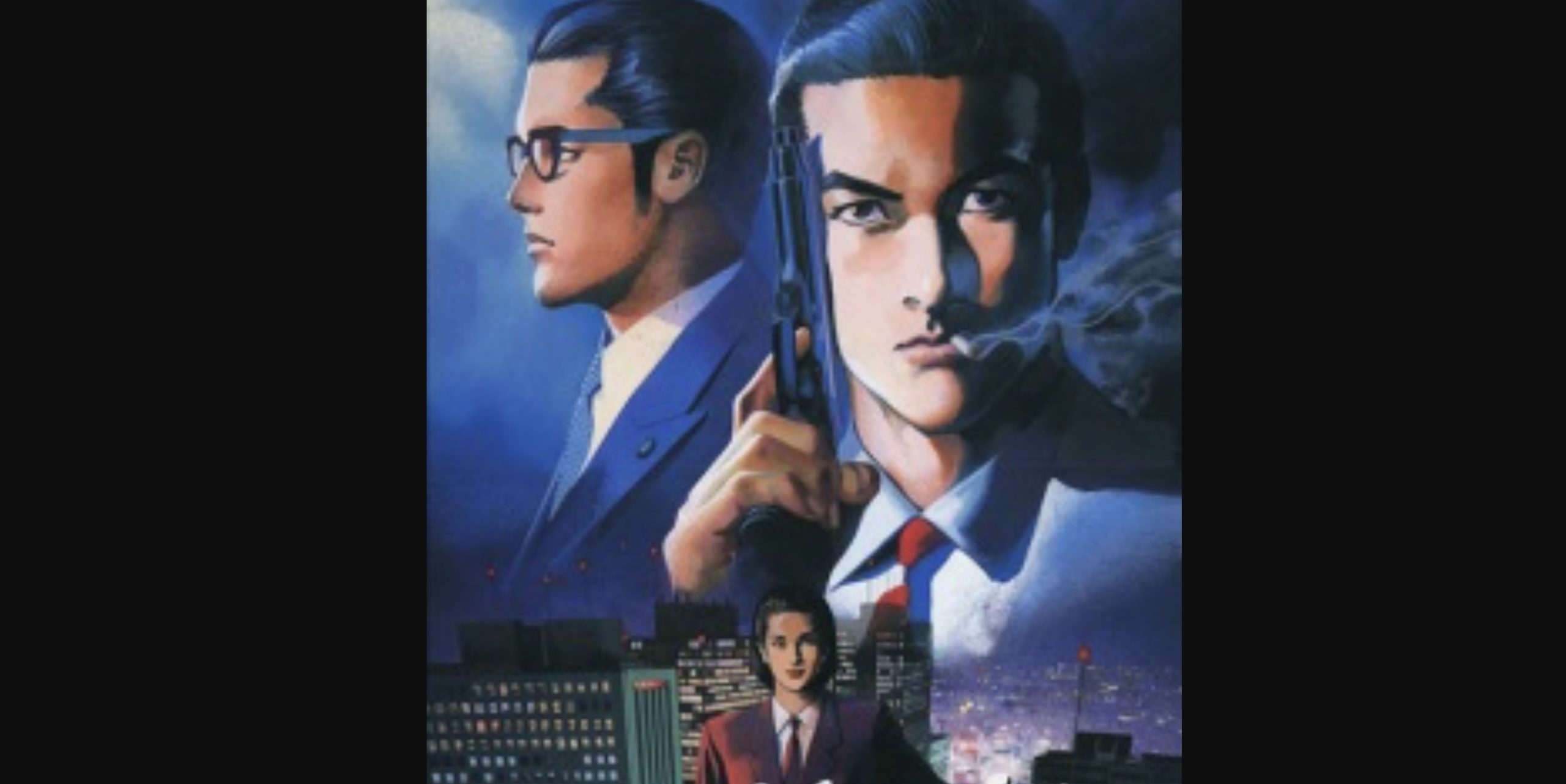
Against the backdrop of Yakuza intrigue and the haunting legacy of the Khmer Rouge, Sanctuary injects depth into the organized crime narrative.
While the trope of cops versus gangsters is a familiar one in crime dramas, Sanctuary offers a nuanced exploration reminiscent of classic Yakuza stories from the 80s and ’90s.
The inevitability of their confrontation adds tension to the plot, but it’s the journey toward that climactic showdown that truly amazes. Witnessing the tenacity and ambition that propel Asami and Houjou toward their fateful reunion raises the narrative, making their eventual clash all the more compelling and meaningful.
13. Kaiji: Ultimate Survivor
In Yakuza-like narratives, Kaiji: Ultimate Survivor stands out for its gripping portrayal of an ordinary protagonist thrust into treacherous high-stakes gambling. Protagonist Kaiji Ito finds himself aboard the Espoir, coerced into participating in games of chance to repay his debts to a ruthless loan shark.
As Kaiji explores the perilous waters of the ship, he encounters fellow debtors with their own harrowing tales and must use his wits to survive.
While Kaiji: Ultimate Survivor may not directly involve rivaling gangs like in traditional Yakuza stories, its premise of a civilian entangled in a seedy underworld shares similarities with the themes often explored in the Yakuza games.
The notion of individuals making deals with criminals that they don’t fully comprehend reflects the precarious situations faced by protagonists like Kiryu in the Yakuza series.
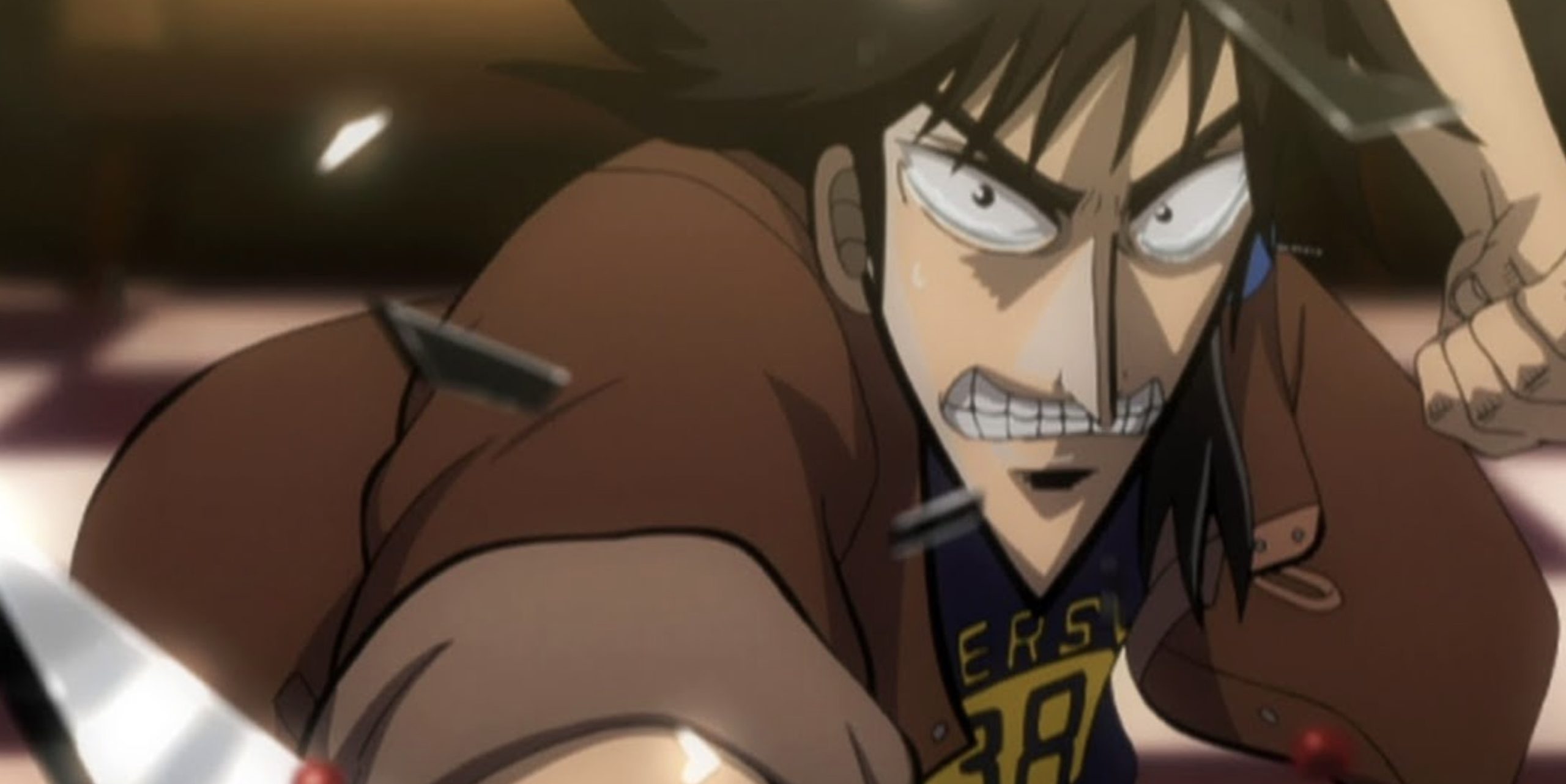
At its core, Kaiji: Ultimate Survivor embodies the spirit of desperation and survival against overwhelming odds, akin to the challenges faced by Yakuza members.
The gambling-centric narrative mirrors the gambling minigames prevalent in games like Like a Dragon, where protagonists must demonstrate unwavering tenacity and cunning to overcome their adversaries.
Despite lacking the physical strength and connections of traditional Yakuza members, Kaiji’s ability to outwit his opponents in games of chance evokes the same sense of resilience and determination found in Yakuza protagonists.
Thus, Kaiji: Ultimate Survivor offers a compelling parallel to the Yakuza universe, showcasing the indomitable spirit of individuals facing adversity in the criminal underworld.
12. Golden Kamuy
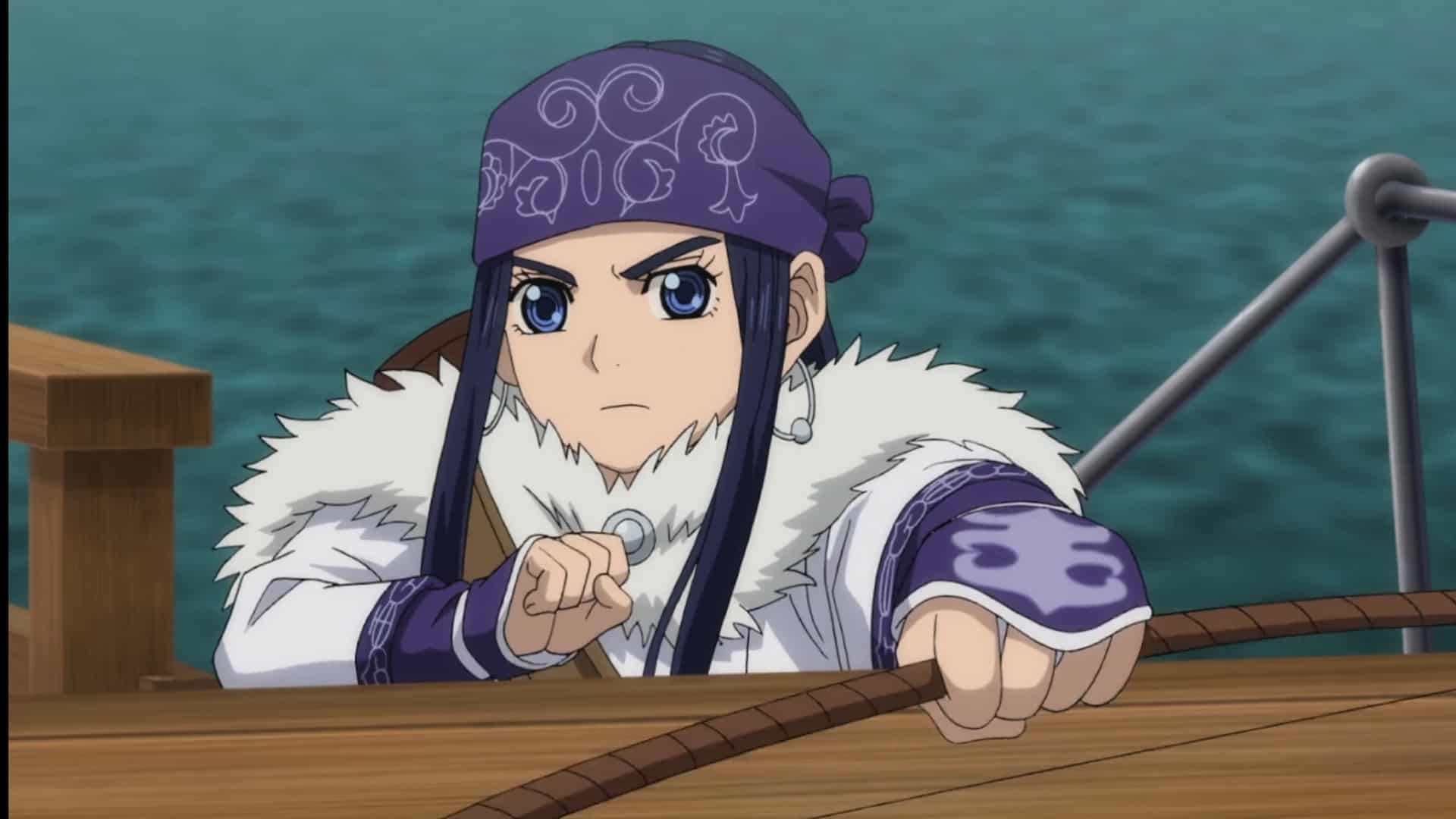
In the ongoing anime Golden Kamuy, which had a manga run from 2014 to 2022, viewers are treated to an enthralling tale that combines alternate history with amazing treasure-hunting adventures.
Protagonist Saichi Sugimoto, a veteran of the Russo-Japanese war, is drawn out of retirement as he begins a quest to uncover the hidden fortune of gold belonging to the Ainu people. This quest not only showcases the rich culture of the Ainu people but also features authentic Ainu language, adding depth and authenticity to the narrative.
While Golden Kamuy may not be a traditional crime story like Yakuza, its premise of interlocked factions vying for a secret stash of gold bears resemblance to the conflicts often depicted in Yakuza narratives.
Much like in Yakuza, where rivaling gangs compete for power and influence, Saichi’s journey is fraught with alliances that shift and enemies who may become temporary allies in pursuit of the treasure.
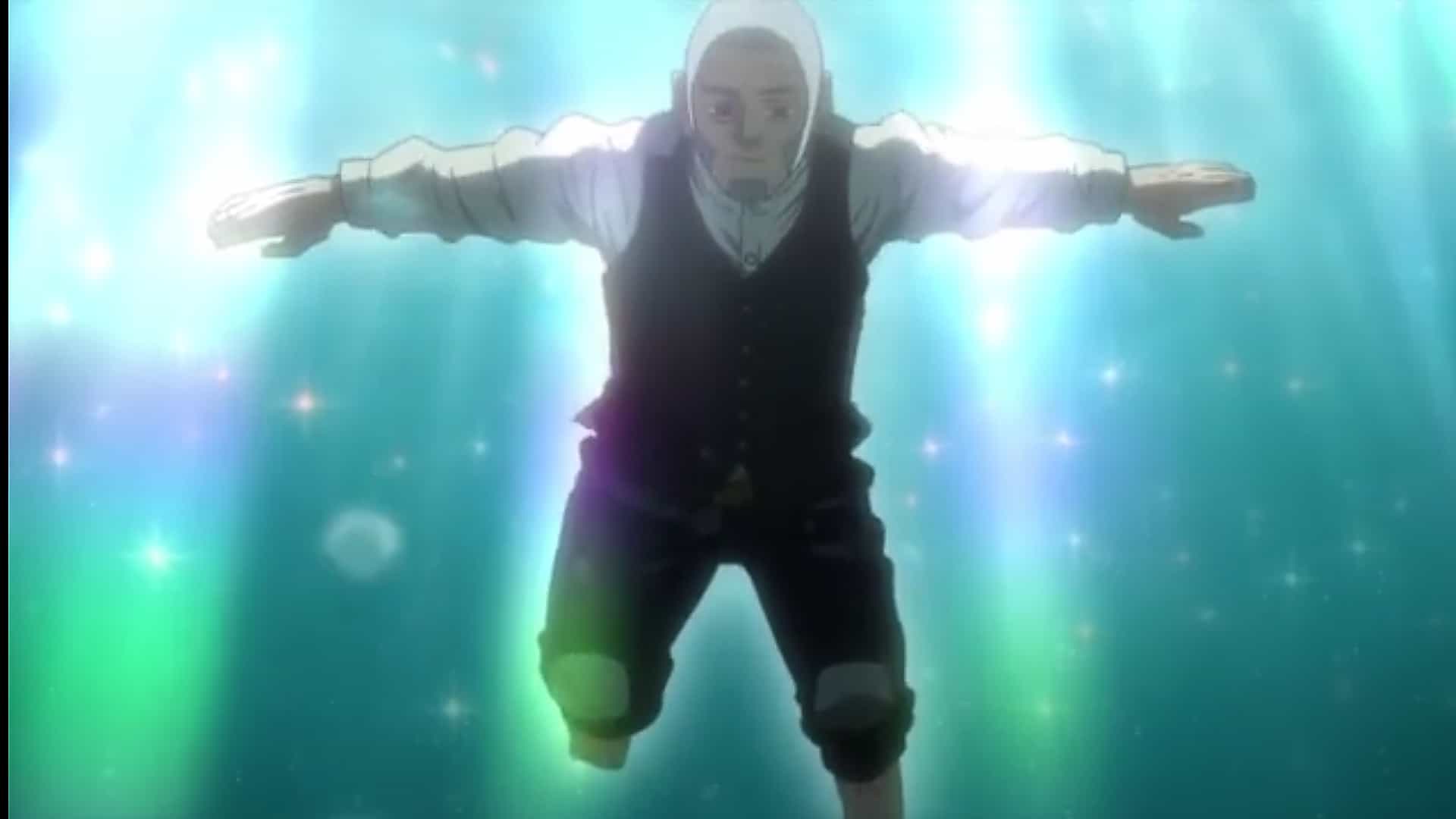
The dynamic relationships among the characters in Golden Kamuy mirror the perpetual ebbs and flows of partnerships and conflicts seen in Yakuza clans.
Saichi’s ragtag group finds themselves entangled in battles and alliances with various factions, including rivals like Hijikata Toshizo and the Hokkaido 7th Division. Through these interactions, Golden Kamuy explores themes of loyalty, betrayal, and the complexities of human relationships, much like the Yakuza series.
While Golden Kamuy may not focus solely on criminal enterprises, its exploration of hidden treasures and the intricate web of alliances and conflicts among its characters offers a compelling parallel to the Yakuza, showcasing the enduring appeal of stories centered around power struggles and camaraderie in the face of adversity.
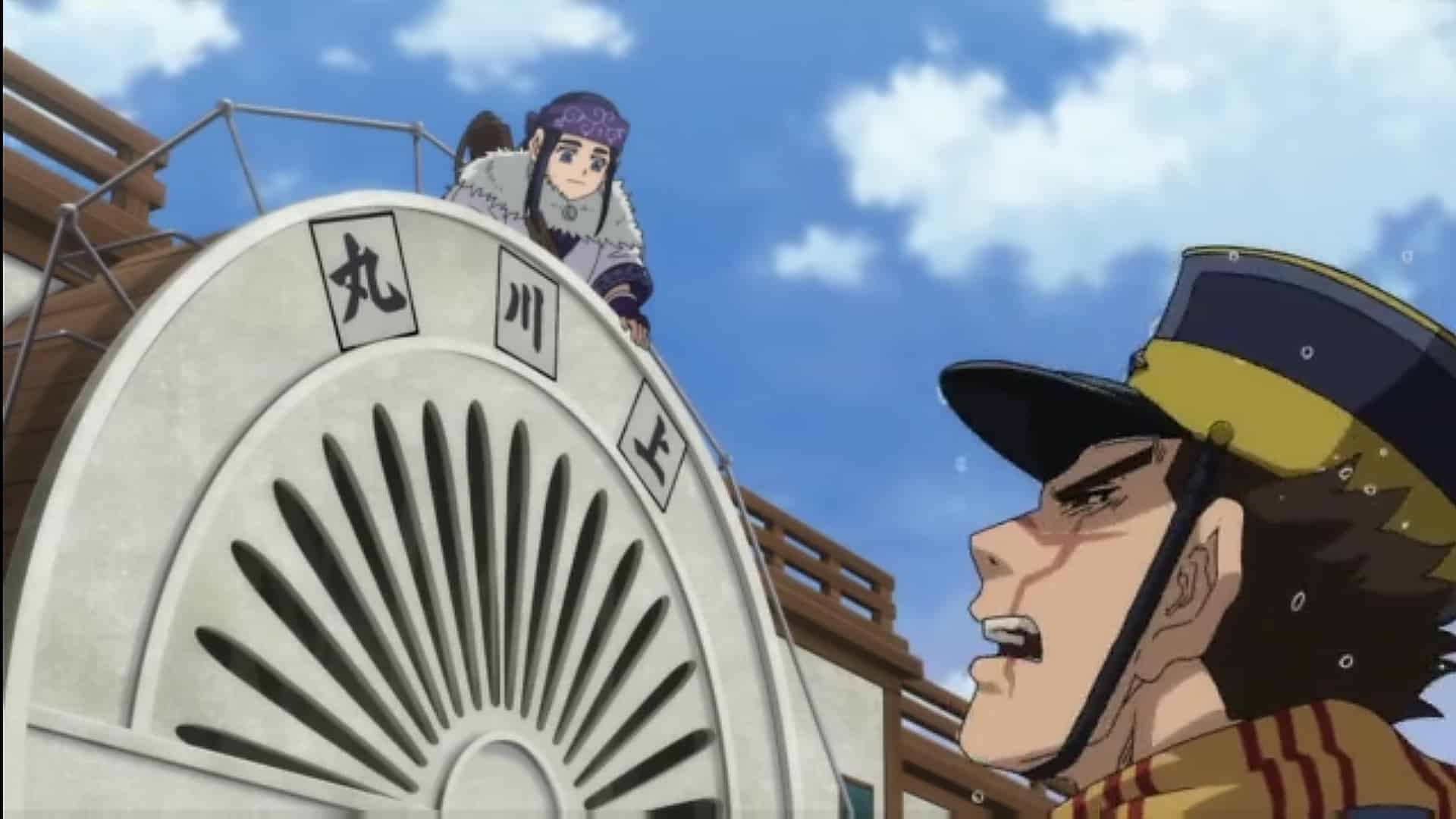
Golden Kamuy is a thrilling mix of historical fiction, action, adventure, and dark comedy that stands out due to its unique setting and compelling characters. Based on the manga by Satoru Noda, the anime follows Saichi Sugimoto, a veteran of the Russo-Japanese War, known as “Sugimoto the Immortal” due to his incredible resilience in battle. After the war, he struggles to find a way to support the widow of his fallen comrade.
His fortunes change when he hears a story about a massive hidden treasure belonging to the Ainu people, stolen by a group of criminals who tattooed parts of the treasure map onto their bodies before escaping prison. Seeing this as an opportunity, Sugimoto goes on a dangerous journey to uncover the gold, but he isn’t the only one after it.
One of the anime’s greatest strengths is its historical setting. Taking place during the late Meiji era, Golden Kamuy offers a rich depiction of Japan’s northernmost region, Hokkaido, a land filled with harsh landscapes, dangerous wildlife, and indigenous Ainu culture.
The Ainu people play a central role in the story, particularly through Asirpa, a young and intelligent Ainu girl who becomes Sugimoto’s companion. She seeks the gold not for personal gain but to prevent it from falling into the wrong hands, fearing it could be used against her people. Her deep knowledge of survival techniques, wildlife, and traditional Ainu customs provides a fascinating look into a culture rarely explored in anime.
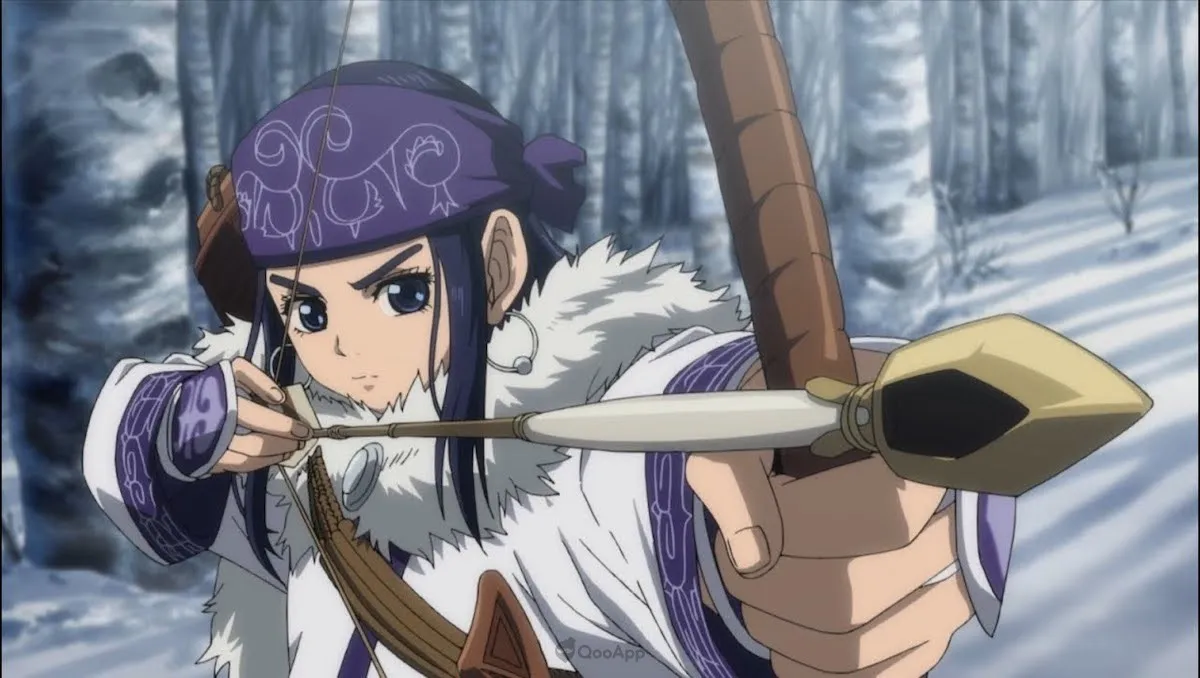
The relationship between Sugimoto and Asirpa is the heart of the series. Their dynamic is both humorous and touching, as Sugimoto acts as a protective older brother figure while Asirpa, despite her young age, often ends up being the more competent one when it comes to surviving in the wild.
Their growing trust and friendship add emotional depth to the fast-paced adventure. Asirpa also serves as a major source of humor, especially when introducing Sugimoto to traditional Ainu cuisine—particularly her obsession with miso, which she mistakes for “poop” at first, leading to hilarious reactions.
Golden Kamuy’s cast is one of the most eccentric in anime. The prisoners with tattooed map fragments are some of the wildest characters, ranging from psychotic killers to cunning strategists, each with their own motivations for finding the gold.
However, one of the most formidable forces in the story is the ruthless and calculating Lieutenant Tsurumi, the leader of the 7th Division of the Imperial Japanese Army.
With his grotesquely disfigured head and manipulative charisma, he is both terrifying and strangely charismatic, making him one of the best antagonists in modern anime. Alongside him are a collection of bizarre yet entertaining soldiers, including the brutal yet oddly comedic Hajime Tsukishima and the terrifying sniper Hyakunosuke Ogata.
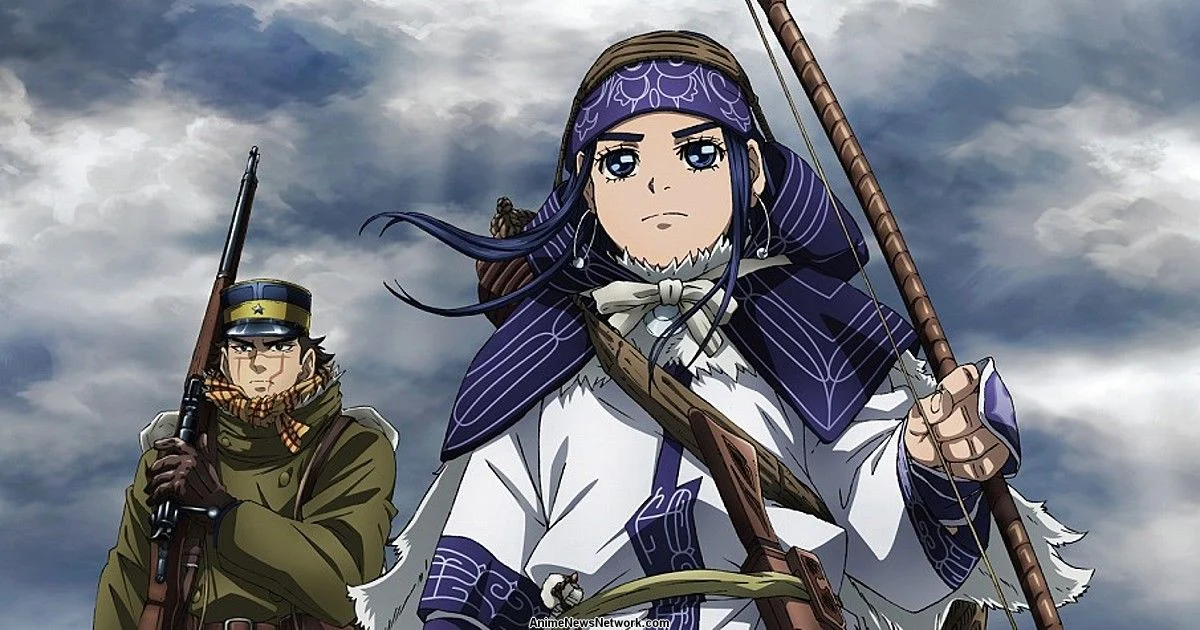
The action sequences in Golden Kamuy are intense and unpredictable. From brutal gunfights to hand-to-hand combat, every encounter feels raw and dangerous. Sugimoto’s nickname, “The Immortal,” is well-earned, as he survives seemingly impossible situations, often emerging bloodied but determined.
The show does not shy away from violence, with some scenes being particularly gruesome, yet it balances this with moments of levity, preventing the story from becoming too heavy. This mix of brutal action and dark humor is one of the anime’s most distinctive qualities.
Another fascinating aspect of the series is its focus on survival and hunting. Much of the story takes place in Hokkaido’s harsh wilderness, and the characters frequently rely on traditional Ainu survival techniques. Hunting, fishing, and cooking play a surprisingly large role, with detailed explanations of how to prepare different animals for food.
These scenes offer a rare and respectful look into indigenous traditions, showing how the Ainu lived in harmony with nature. Even though some moments are humorous—like Sugimoto’s over-the-top reactions to Asirpa’s cooking—the respect for Ainu culture remains a key theme throughout the series.
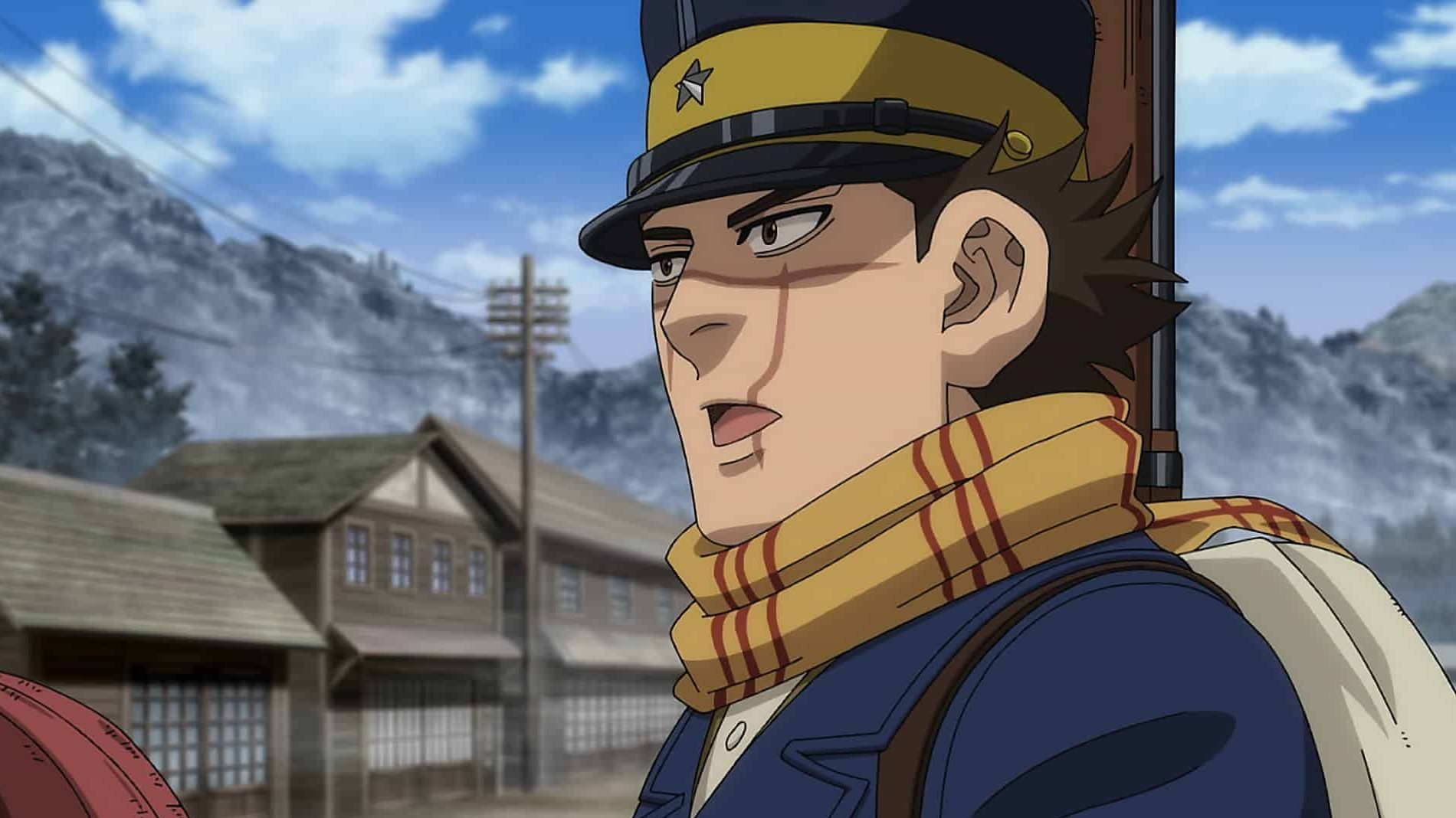
Golden Kamuy’s animation has been a point of discussion among fans. While the first season had some notable issues, particularly with its use of CGI bears that looked out of place, later seasons improved significantly in terms of animation quality.
The detailed character designs, expressive facial animations, and fluid action scenes help bring the story to life. The anime captures the beauty of Hokkaido’s landscapes, from its dense forests to its snowy mountains, making the setting feel immersive and authentic.
The voice acting is another highlight, with Chikahiro Kobayashi delivering a strong performance as Sugimoto, balancing his tough exterior with moments of vulnerability and humor. Haruka Shiraishi as Asirpa brings charm and determination to the character, making her one of the most memorable heroines in recent anime.
The rest of the cast, including Houchuu Ootsuka as the unhinged Lieutenant Tsurumi, adds to the show’s overall energy and intensity. The soundtrack, composed by Kenichiro Suehiro, enhances both the action-packed moments and the more emotional scenes, creating an atmospheric and engaging experience.
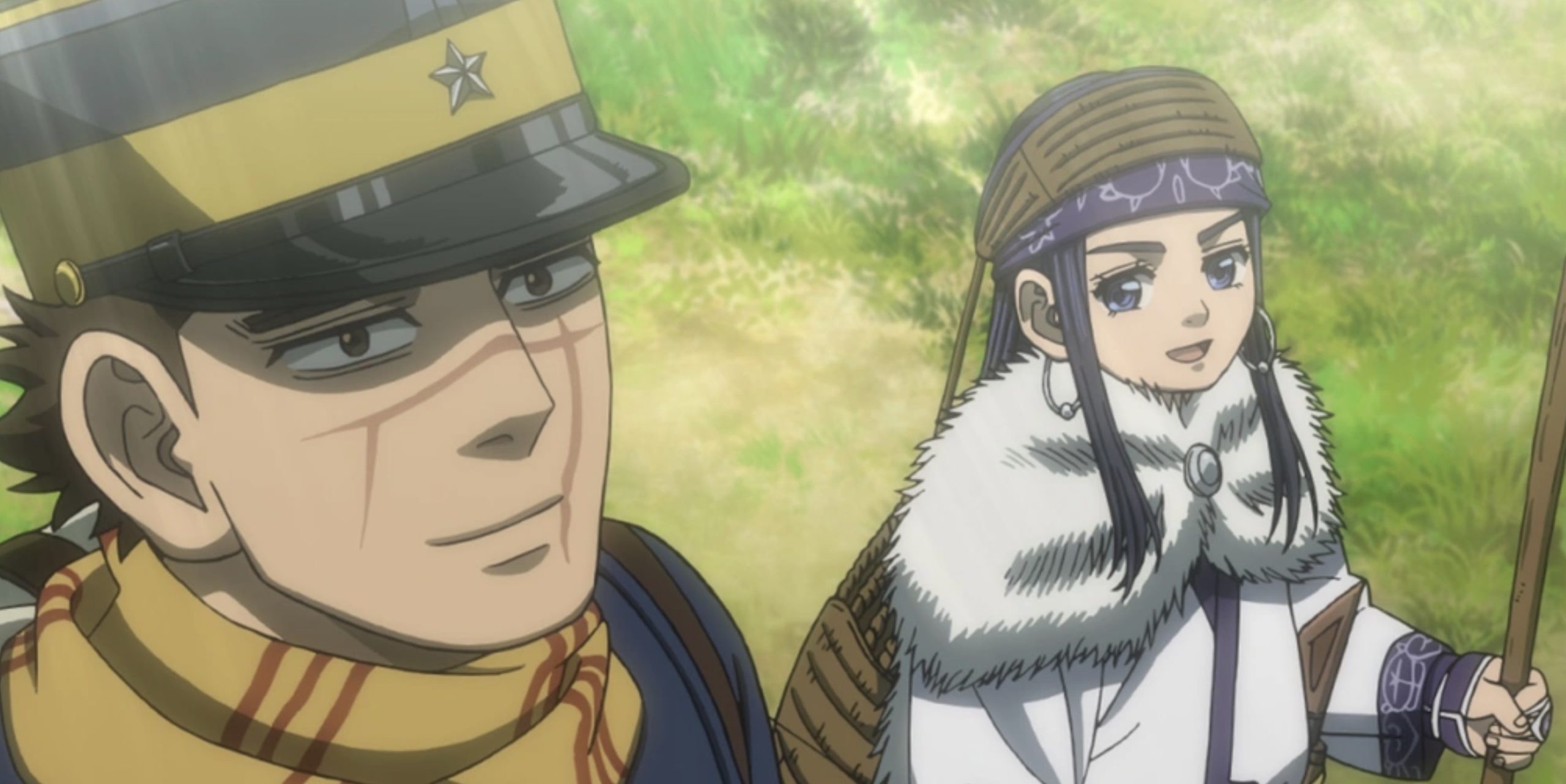
Despite its many strengths, Golden Kamuy may not be for everyone. Its tonal shifts—from violent battles to slapstick humor—can be jarring for some viewers. However, for those who enjoy unpredictable storytelling, eccentric characters, and a mix of historical adventure and comedy, this anime is a must-watch.
It successfully balances action, humor, and emotional storytelling while offering a rare go into Japan’s Ainu culture.
Golden Kamuy is one of the most unique anime of the past decade, offering an exhilarating treasure hunt story filled with memorable characters, intense action, and surprising moments of heartfelt connection.
Whether you’re drawn to its historical setting, its over-the-top yet lovable cast, or its fascinating cultural insights, this anime has something for everyone. As the story unfolds across multiple seasons, it only gets better, proving itself as one of the most underrated gems in modern anime.
11. Texhnolyze
“Texhnolyze” offers an experimental take on the Yakuza concept, amazing fans with its dystopian narrative set in the manmade underground city of Lux. In this 2003 anime, individuals like prizefighter Ichise, executive Onishi, and young girl Ran explore their seemingly unrelated lives, which eventually converge to shape the fate of the city.
Yakuza elements in “Texhnolyze” manifest subtly through three factions vying for control over the city and its Texhnolyze prosthetics. The Organo faction, driven by business interests, collaborates with the criminal underworld to dominate the Texhnolyze market.
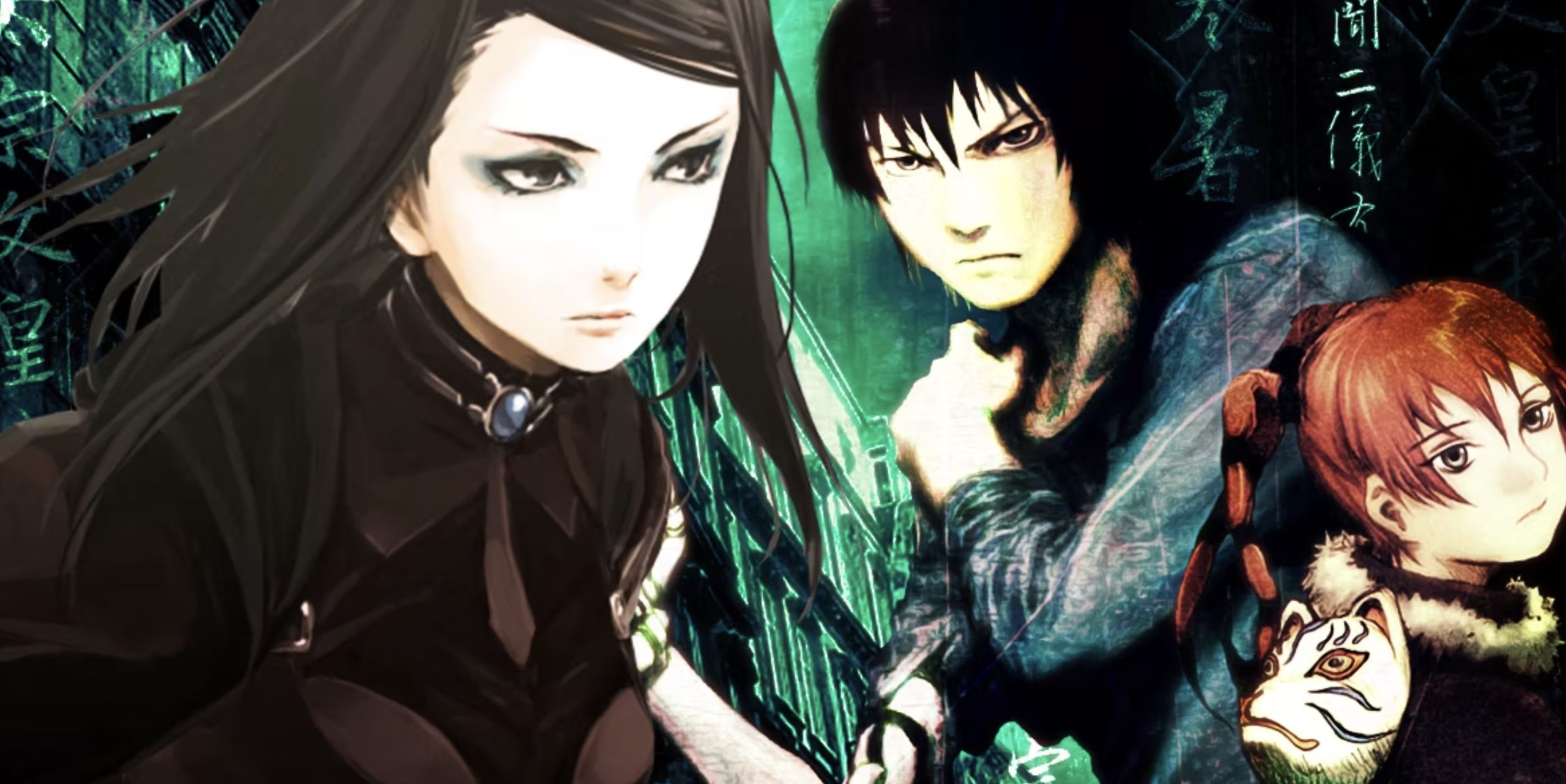
On the other hand, the populist Salvation Union opposes Organo’s monopolistic practices. Lastly, the radical group Racan seeks to exploit Texhnolyze for personal gain.
In parallel to the vibrant lives of Yakuza protagonists like Kiryu and Kasuga, “Texhnolyze” portrays a grim reality in the underground city, where Ichise is unwillingly entangled in an inter-faction conflict.
The Organo faction in “Texhnolyze” mirrors the organized structure of the Yakuza, while the Salvation Union and Racan offer intriguing parallels to dissenting groups within society.
10. Hinamatsuri
In “Hinamatsuri,” Yoshifumi Nitta, a mid-level member of the Ashikawa-gumi Yakuza clan, finds his life turned upside down when an amnesiac girl named Hina with psychokinetic powers appears in his apartment from the future.
Before he can comprehend the situation, more girls from the future arrive, either to retrieve Hina or to eliminate her.
Over its ten-year manga run and its 2018 anime adaptation, “Hinamatsuri” amazed audiences with its blend of science fiction and comedy, detailing Yoshifumi and Hina’s unexpected adventures. Fans of the Yakuza franchise will find “Hinamatsuri” intriguing for its unique take on Yakuza themes.
Similar to Kiryu’s role as the manager of his own orphanage in the Yakuza series, Yoshifumi’s unexpected caretaker role for the psychokinetic Hina adds depth to his character. While “Like a Dragon” doesn’t incorporate supernatural elements, “Hinamatsuri” offers an imaginative interpretation of what could happen if a Kiryu-like figure found himself responsible for a psychic child sought after by both the Yakuza and the government.
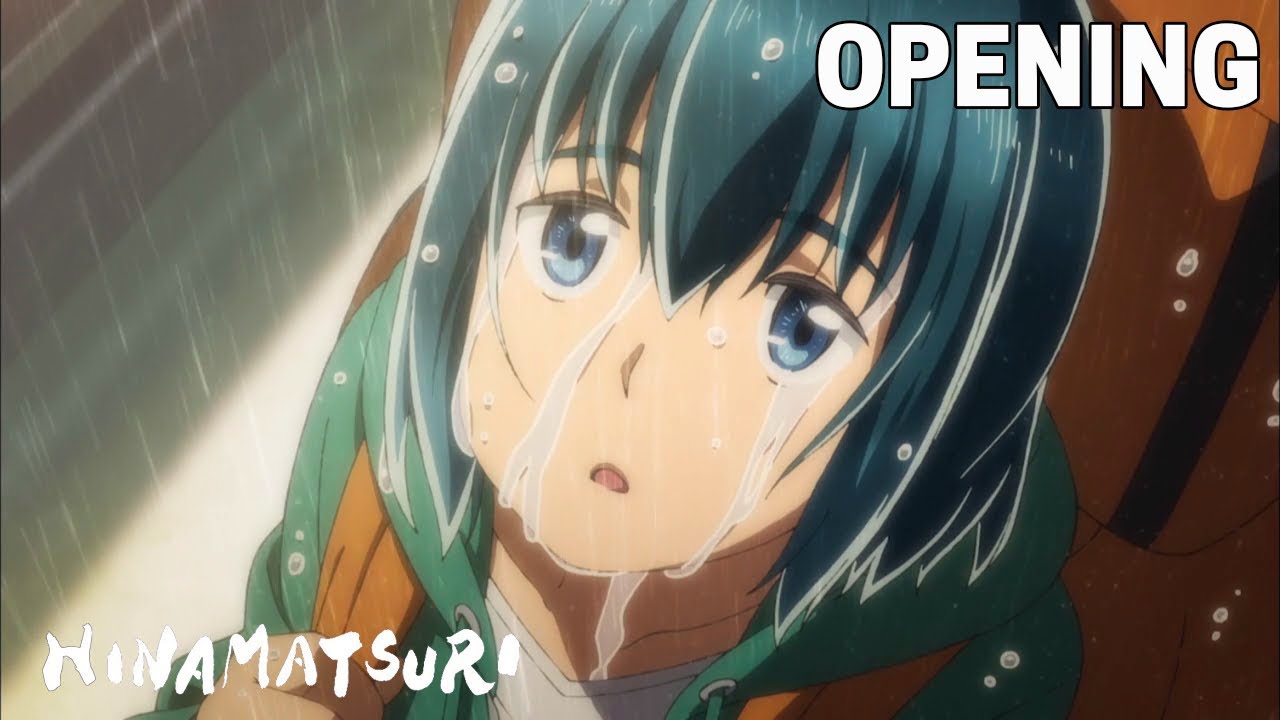
Hinamatsuri is a heartwarming and hilarious blend of sci-fi, slice-of-life, and comedy that stands out due to its unique premise and lovable characters. Based on the manga by Masao Ōtake, the anime aired in 2018 and follows the bizarre yet touching relationship between a yakuza member and a psychic girl. The story begins when a strange, egg-shaped object crashes into the apartment of Yoshifumi Nitta, a mid-level yakuza who enjoys a peaceful life collecting expensive vases. Inside the object is Hina, a deadpan girl with immensely powerful psychic abilities. With no memory of her past and no understanding of how the world works, she forces her way into Nitta’s life, setting off a series of absurd and heartwarming events.
One of the anime’s biggest strengths is its comedic timing. Nitta is a well-dressed and sophisticated yakuza who takes pride in his lifestyle, but Hina’s presence turns everything upside down. Her lack of social awareness, combined with her casual use of telekinesis, often puts him in ridiculous situations.
Whether she’s demanding food, destroying furniture, or using her powers to get out of school, her deadpan reactions contrast perfectly with Nitta’s growing frustration. Despite initially wanting to get rid of her, he slowly becomes a reluctant father figure, leading to many touching and hilarious moments as he struggles to balance his criminal life with unexpected parenthood.
The humor extends beyond just Nitta and Hina, thanks to a diverse and eccentric supporting cast. One standout character is Anzu, another psychic girl sent to eliminate Hina. However, due to a series of unfortunate events, she ends up homeless and is forced to learn how to survive on the streets.
Her story starts off comedic but quickly turns into one of the most emotional arcs in the series. Watching her develop from a spoiled and arrogant child into a humble and hardworking person is one of the most rewarding parts of the anime. The way she bonds with the homeless community and later tries to adapt to normal life adds unexpected emotional depth.
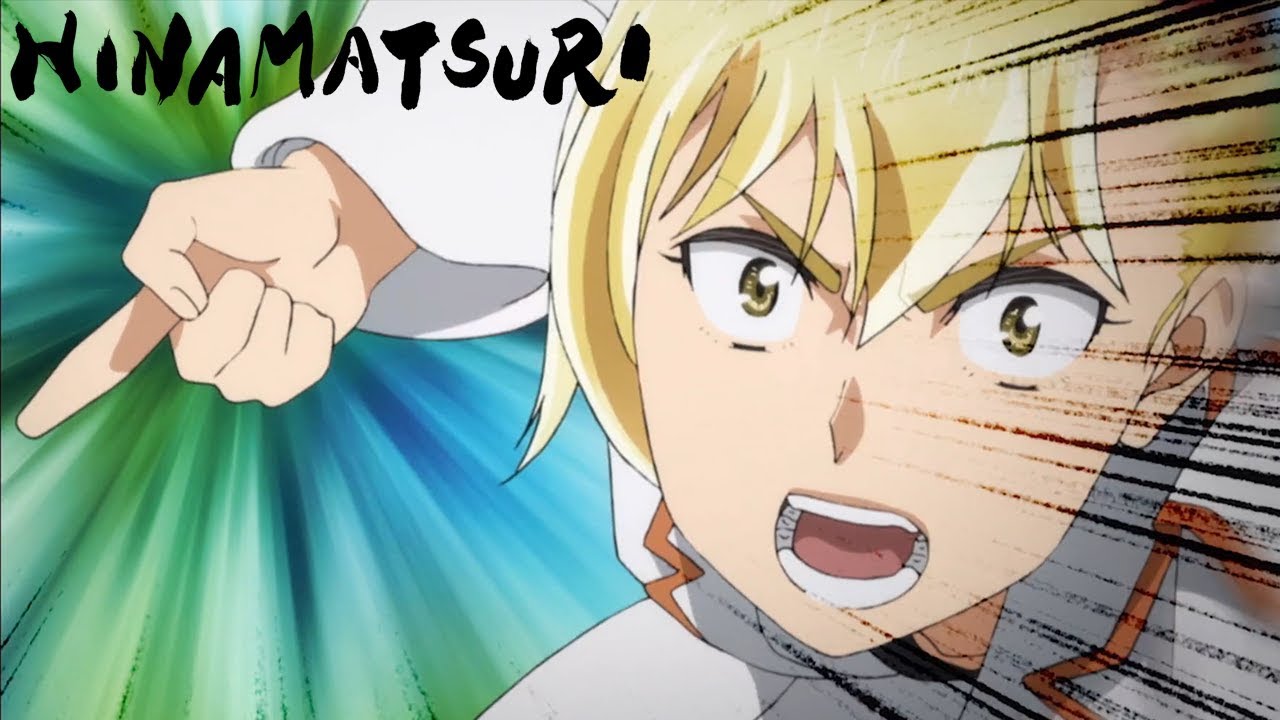
Another hilarious addition is Hitomi, Hina’s classmate, who accidentally gets pulled into the chaos. Despite being a responsible and talented student, she somehow ends up working multiple jobs, including as a bartender at a high-end club, due to misunderstandings and her inability to say no.
Her arc is filled with absurdity, as she constantly juggles her secret nightlife and school responsibilities, all while being admired by adults who are unaware of her real age. Her story serves as a great contrast to Hina’s laziness, making their interactions even funnier.
While Hinamatsuri is primarily a comedy, it also delivers genuinely heartfelt moments. The show explores themes of found family, growing up, and adapting to unexpected situations. Nitta, despite his initial reluctance, becomes a caring and responsible parental figure for Hina, teaching her basic life skills and even going out of his way to make her happy.
His development from a selfish bachelor to a protective guardian is gradual and believable. Meanwhile, Anzu’s journey from a clueless psychic to a hardworking individual is deeply moving. The contrast between her struggles and Hina’s easy life with Nitta adds a layer of realism to the story.
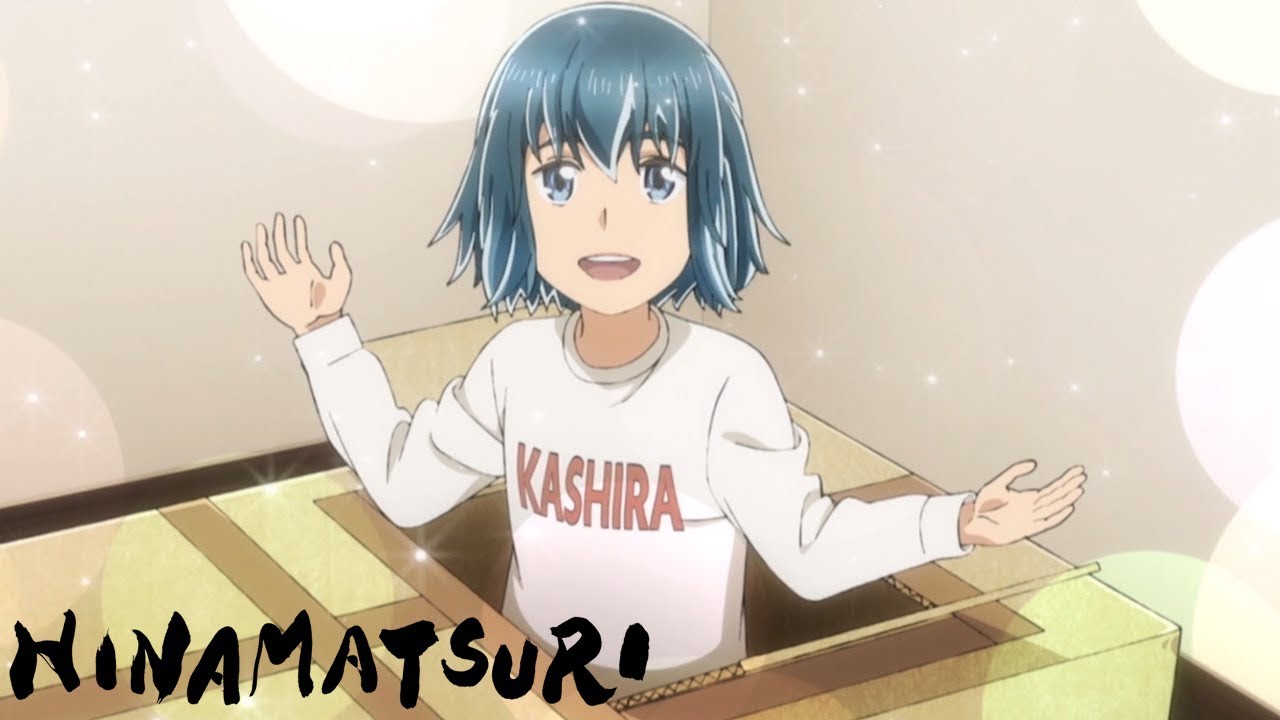
The animation, produced by studio Feel, is bright and expressive, perfectly capturing the exaggerated humor and occasional emotional weight of the series. The character designs are distinct, and the comedic expressions are especially well-done, enhancing the absurdity of many scenes.
Action sequences, though not a major focus, are fluid when they do appear, particularly when showcasing Hina’s telekinetic powers. The simple yet effective visual style helps maintain the balance between comedy and drama without feeling disjointed.
The voice acting is another strong point of the anime. Takako Tanaka’s portrayal of Hina perfectly captures her monotone and emotionless personality, making her deadpan delivery even funnier. Yoshiki Nakajima as Nitta brings a perfect mix of suave yakuza charm and comedic frustration.
Rie Murakawa as Anzu delivers one of the most touching performances, making her emotional scenes hit even harder. The entire voice cast does an excellent job in bringing out the distinct personalities of each character, making the interactions feel natural and engaging.
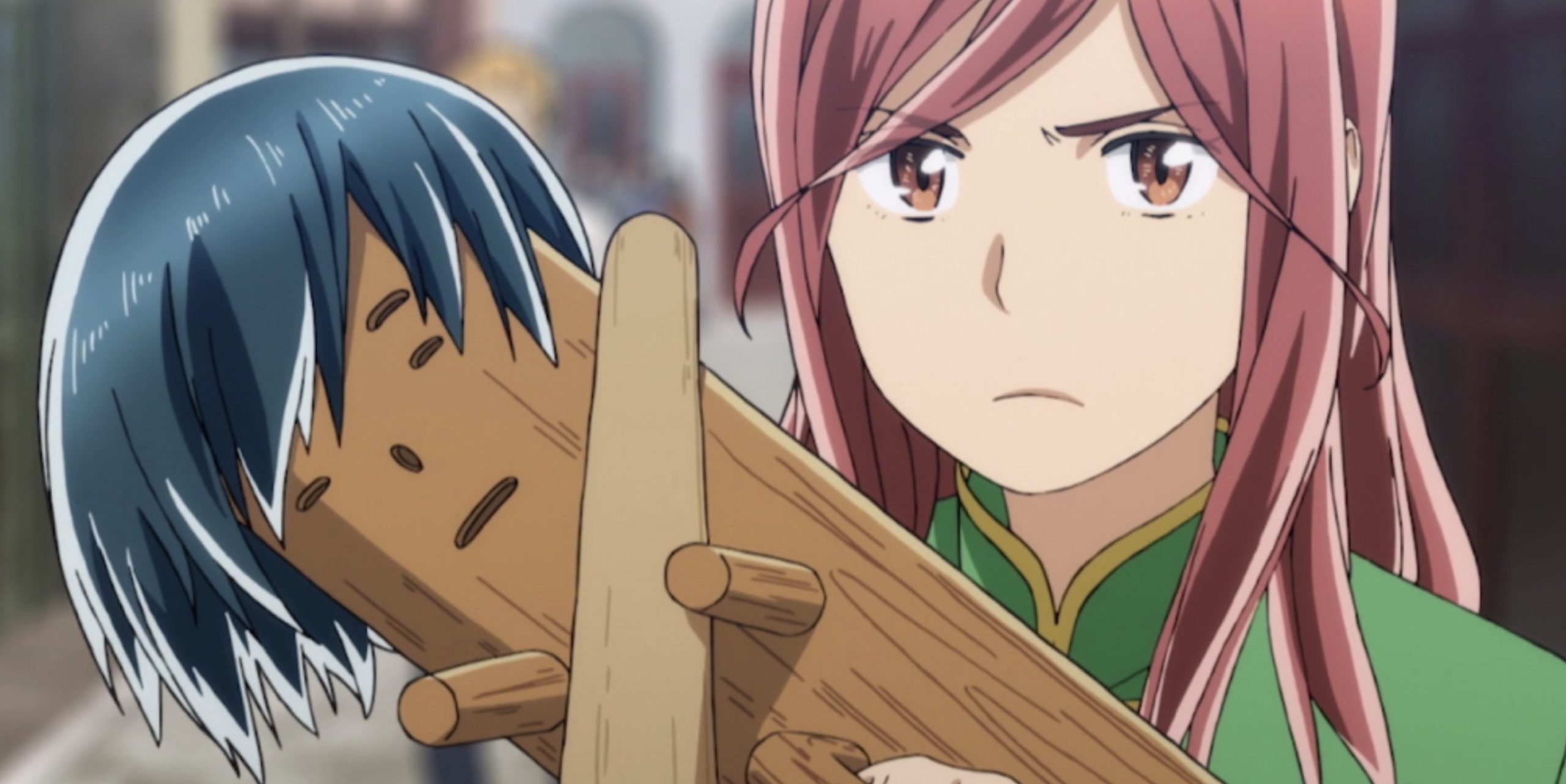
Despite its many strengths, the anime does have a few minor drawbacks. Since it only adapts part of the manga, some storylines feel incomplete, and certain characters don’t get as much development as they do in the source material. The pacing can also feel a bit uneven, as some episodes focus more on comedy while others lean heavily into emotional storytelling.
However, these issues don’t take away from the overall enjoyment of the series. It remains a well-executed mix of humor, action, and heartfelt storytelling.
Hinamatsuri is a unique and highly entertaining anime that blends absurd humor with surprisingly deep emotional moments. Its charming characters, witty dialogue, and unpredictable storytelling make it a standout in the slice-of-life and comedy genre.
Whether you’re looking for laugh-out-loud moments, heartfelt character growth, or a refreshing take on the found-family trope, this anime delivers in every aspect. It’s a show that will have you both laughing and tearing up, making it a must-watch for fans of comedy with a touch of heart.
9. 91 Days
In 91 Days, viewers are taken on a journey through the dark and organized crime as Angelo Lagusa seeks vengeance for the murder of his family by infiltrating the Vanetti mafia family.
Spanning 91 days, Angelo’s quest for retribution leads him to form unexpected alliances and explore the treacherous underworld of the mafia.
Similar to the Yakuza series, 91 Days offers a more personal and intimate exploration of the lives of individuals involved in organized crime. Angelo’s infiltration of the Vanetti family and his interactions with its members highlight the complexities and moral ambiguities inherent in the crime.
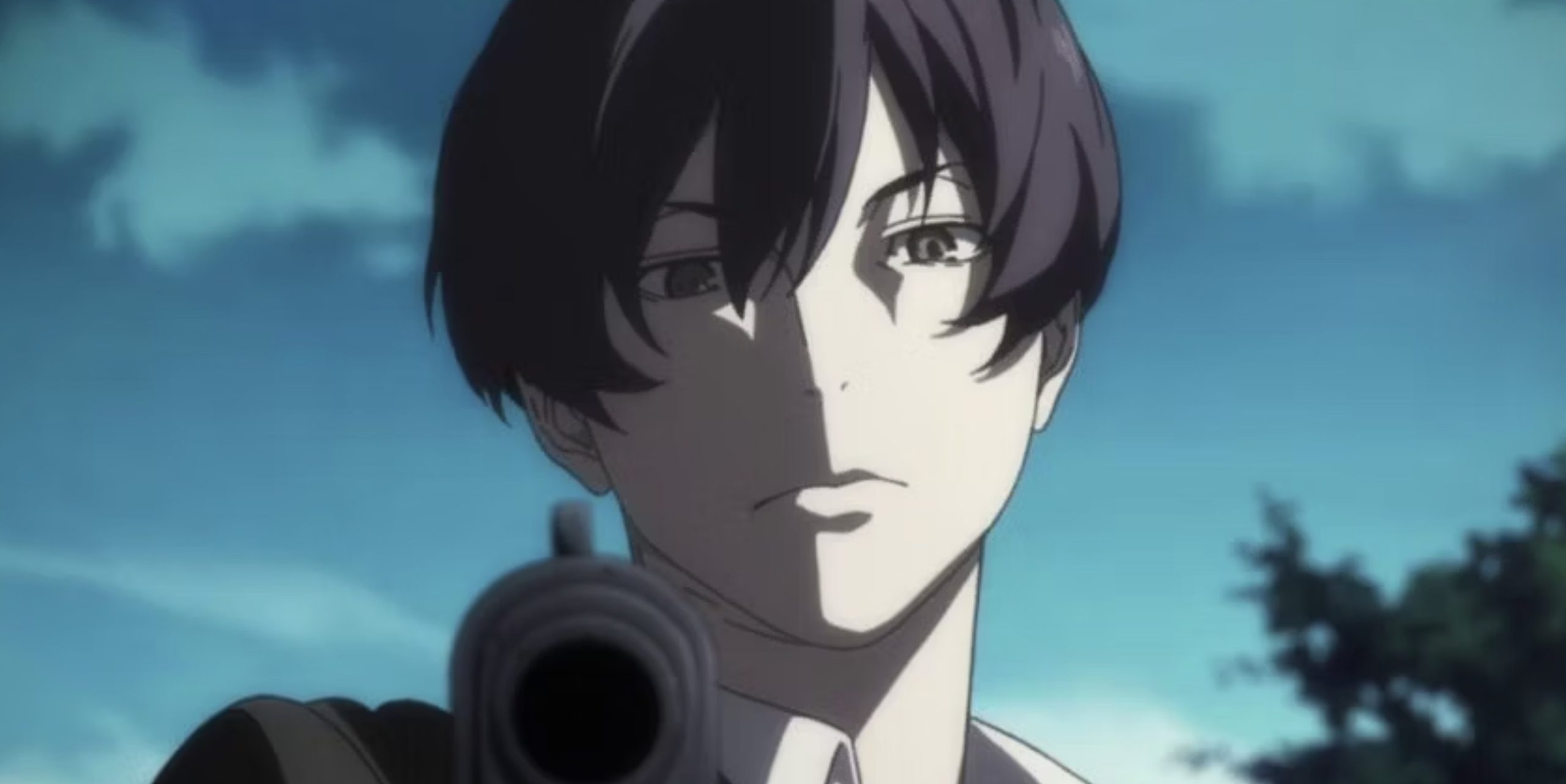
As he goes deeper into the underworld, Angelo’s motivations and cunning strategies create a compelling narrative that resonates with fans of the Yakuza franchise.
Despite its relatively short 12-episode run, 91 Days amazes audiences with its gripping storyline and amazing soundtrack. The series’ portrayal of the intricacies of mafia life and the consequences of seeking revenge serves as a poignant reminder of the harsh realities faced by those involved in organized crime.
8. Gangsta
In Ergastulum, where the mafia and criminal organizations reign supreme, Gangsta follows the exploits of mercenaries Nicolas Brown and Worick Arcangelo, known as “Handymen.” These two individuals take on jobs from both the police and the mob, handling threats that others dare not confront.
The narrative proceeds when the Handymen encounter an amnesiac woman named Alex, whose presence draws them into a series of increasingly dangerous situations. As they explore the treacherous underworld of Ergastulum, their involvement with Alex leads to unforeseen consequences.
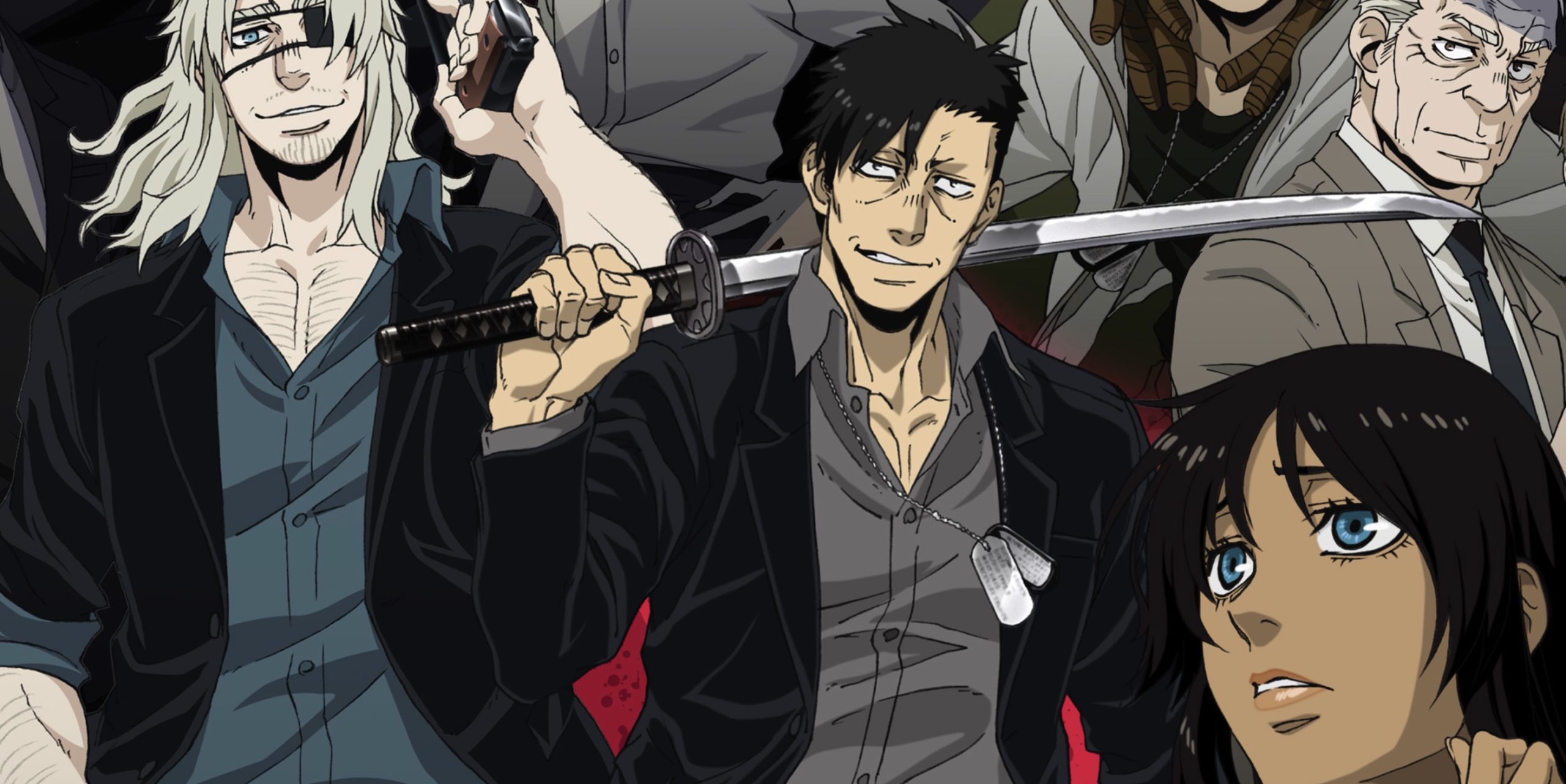
Similar to the Yakuza series, Gangsta goes into the complexities of organized crime and the individuals caught in its web. Worick and Nicolas’s roles as mercenaries parallel the early experiences of Yakuza protagonist Kiryu as he explores the hierarchy of the criminal underworld.
As their missions bring them into conflict with powerful crime families, the Handymen must confront their own limitations and the harsh realities of their world, providing a gripping and intense narrative akin to the challenges faced by Kiryu and his associates.
7. Great Teacher Onizuka
In the spirited tale of Great Teacher Onizuka (GTO), viewers are introduced to Eikichi Onizuka, a former gang member who transitions to a career in teaching. Despite initially pursuing teaching to win favor with the opposite sex, Onizuka discovers a sense of morality and purpose in his new role.
Throughout the series, Onizuka begins a journey with his students, employing unorthodox methods that blend traditional teaching with his own unique approach. From wielding a chalkboard to using his fists when necessary, Onizuka’s dedication to his students knows no bounds. Despite facing challenges from his unruly class of delinquents, Onizuka strives to become the best teacher he can be.
In many ways, Onizuka embodies the traits of a classic Like a Dragon protagonist. His background as a former gang member, his tough yet compassionate demeanor, and his unwavering commitment to his principles parallel the experiences of characters in the Yakuza series.
While the Yakuza may be absent from GTO, Onizuka’s indomitable spirit and unyielding determination resonate with fans of both series, leaving them to wonder what adventures await in a crossover where Onizuka meets characters with similarly strong moral compasses.
Great Teacher Onizuka (GTO) is one of the most beloved and influential anime series, blending comedy, drama, and life lessons into a unique and unforgettable experience. Based on the manga by Tohru Fujisawa, the anime aired in 1999 and follows the story of Eikichi Onizuka, a former gang leader and delinquent who decides to become a teacher. His unorthodox teaching methods, rough personality, and street-smart wisdom make him unlike any other educator. However, beneath his crude and often perverted exterior lies a man who genuinely wants to change the lives of his students for the better.
One of the anime’s biggest strengths is its protagonist, Eikichi Onizuka. Unlike traditional teachers who follow strict rules and educational guidelines, Onizuka approaches teaching in the most unconventional ways possible. He believes that real education is not just about memorizing facts but about learning how to navigate life, overcome hardships, and stand up for oneself.
His methods often involve insane stunts, pranks, and physical challenges, but they always carry valuable lessons. Whether he’s throwing a student off a bridge (safely) to teach them about trust or sneaking into a school to rescue a bullied kid, Onizuka constantly proves that he is willing to go to any lengths for his students.
The students themselves are another highlight of the series. Each one has their own personal struggles, from bullying and family issues to academic pressure and self-esteem problems. Unlike other teachers who dismiss or punish troubled students, Onizuka takes the time to understand them and help them in ways that no one else would.
His rebellious nature and carefree attitude allow him to connect with them on a deeper level. Even the most problematic students, such as the manipulative and vengeful Urumi Kanzaki, slowly come to respect him. Watching Onizuka break through their walls and earn their trust is one of the most satisfying aspects of the anime.
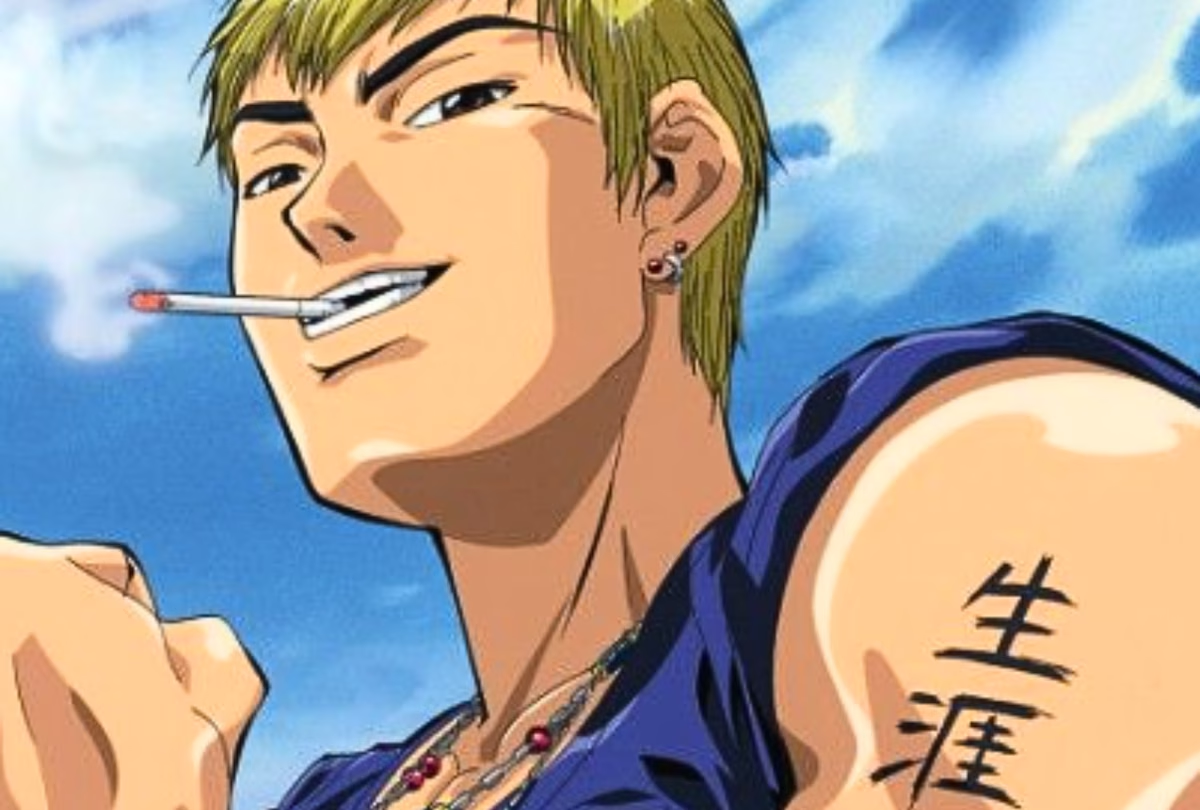
The anime masterfully balances comedy and drama. Onizuka’s antics provide endless laughs, from his ridiculous facial expressions to his absurd schemes. Whether he’s using bizarre wrestling moves to subdue violent students or creeping out his school’s uptight administration, his unpredictable nature keeps the show highly entertaining.
At the same time, the series doesn’t shy away from serious themes. Many episodes deal with heavy topics like depression, abuse, and societal expectations. The contrast between humor and emotional depth makes the story both enjoyable and meaningful, ensuring that it never feels shallow or one-dimensional.
Another strong aspect of GTO is its critique of the education system and traditional authority figures. The anime portrays many teachers and school administrators as corrupt, lazy, or indifferent to their students’ problems. They prioritize rules, reputation, and control rather than the well-being of the kids they are supposed to help. Onizuka challenges this system by proving that genuine care, understanding, and unconventional teaching can make a real difference.
His presence in the school forces other teachers to confront their flaws and rethink their roles as educators. This rebellious yet heartfelt message resonates with many viewers, making GTO stand out among other school-based anime.
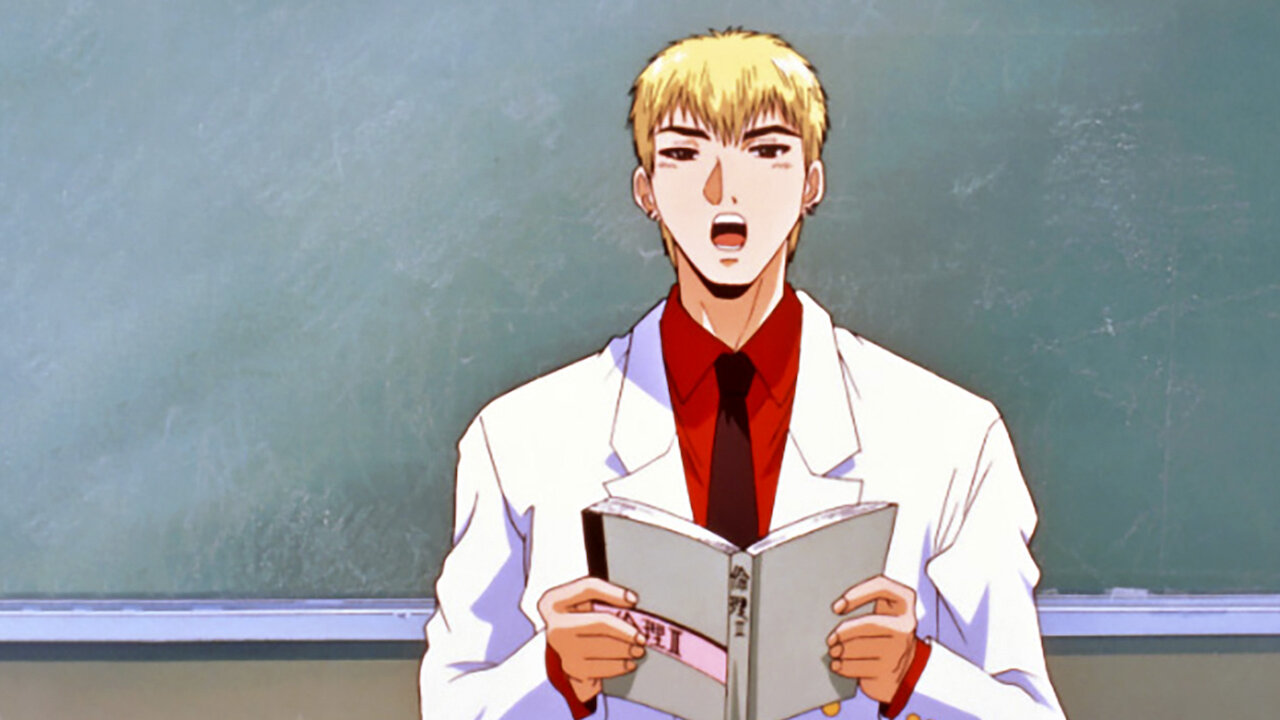
The animation, while slightly dated by modern standards, is expressive and full of life. Onizuka’s exaggerated reactions, over-the-top physical humor, and intense action scenes are all beautifully animated. The character designs are distinct, capturing the personality of each student and faculty member perfectly.
The soundtrack is another highlight, with energetic opening and ending themes that capture the show’s fun yet emotional tone. The voice acting, especially Takashi Sorimachi as Onizuka in the Japanese version, brings an incredible amount of energy and charm to the character.
One of the most endearing aspects of Great Teacher Onizuka is its ability to inspire. Onizuka isn’t a perfect person—he’s immature, reckless, and often makes mistakes. However, his sincerity, resilience, and unwavering belief in his students make him a truly great teacher.
He shows that learning isn’t just about books and grades but about growing as a person. His influence extends beyond the classroom, teaching his students to be stronger, kinder, and more confident in themselves. Many of the lessons in the anime resonate with real-life struggles, making it a show that can impact viewers long after they finish watching.
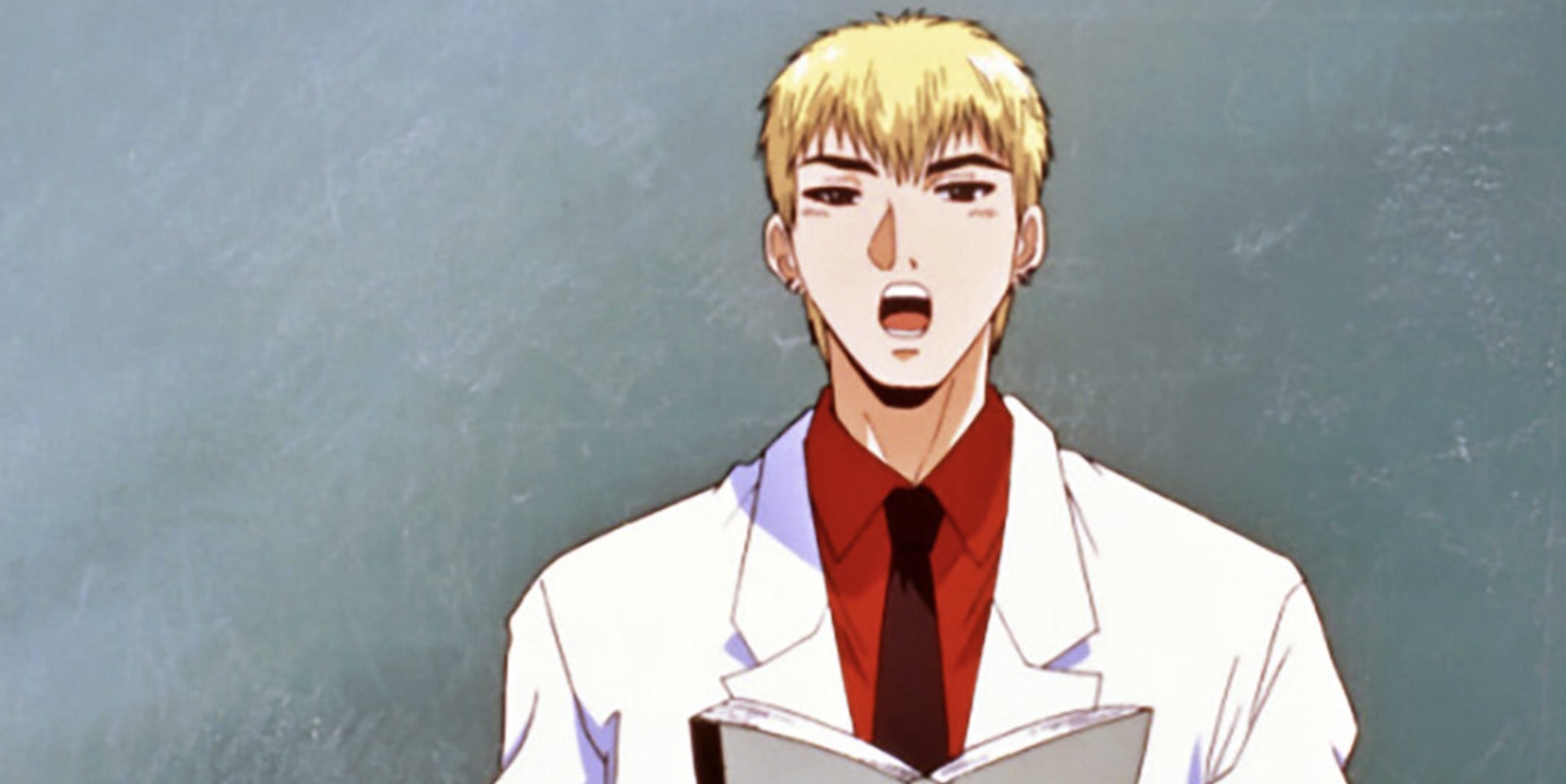
Despite its many strengths, GTO isn’t without flaws. Some episodes feel repetitive, as Onizuka often solves problems in similarly outrageous ways. Additionally, some jokes, particularly those involving Onizuka’s perverted tendencies, may not age well for modern audiences.
However, these minor issues don’t take away from the overall quality of the anime. Its heart, humor, and impactful storytelling remain as powerful as ever, making it a classic that continues to be loved by fans worldwide.
Great Teacher Onizuka is more than just a school comedy—it’s an anime that challenges authority, inspires self-improvement, and delivers unforgettable life lessons. Its mix of humor, drama, and heartfelt moments make it an experience unlike any other.
Whether you’re watching for the laughs, the character growth, or the meaningful messages, GTO is an anime that stays with you. It’s a reminder that sometimes the best teachers aren’t the ones who follow the rules but the ones who break them to truly make a difference.
6. Gokusen
In Gokusen, viewers are introduced to Kumiko Yamaguchi, the granddaughter of a Yakuza boss who aspires to be a teacher despite her familial ties to organized crime. Despite her desires, Kumiko finds herself thrust into the role of homeroom teacher for Class 4-2, a group of unruly delinquents.
While Kumiko must keep her Yakuza identity hidden, her upbringing has equipped her with the skills to toughen up her students and guide them toward becoming better individuals.
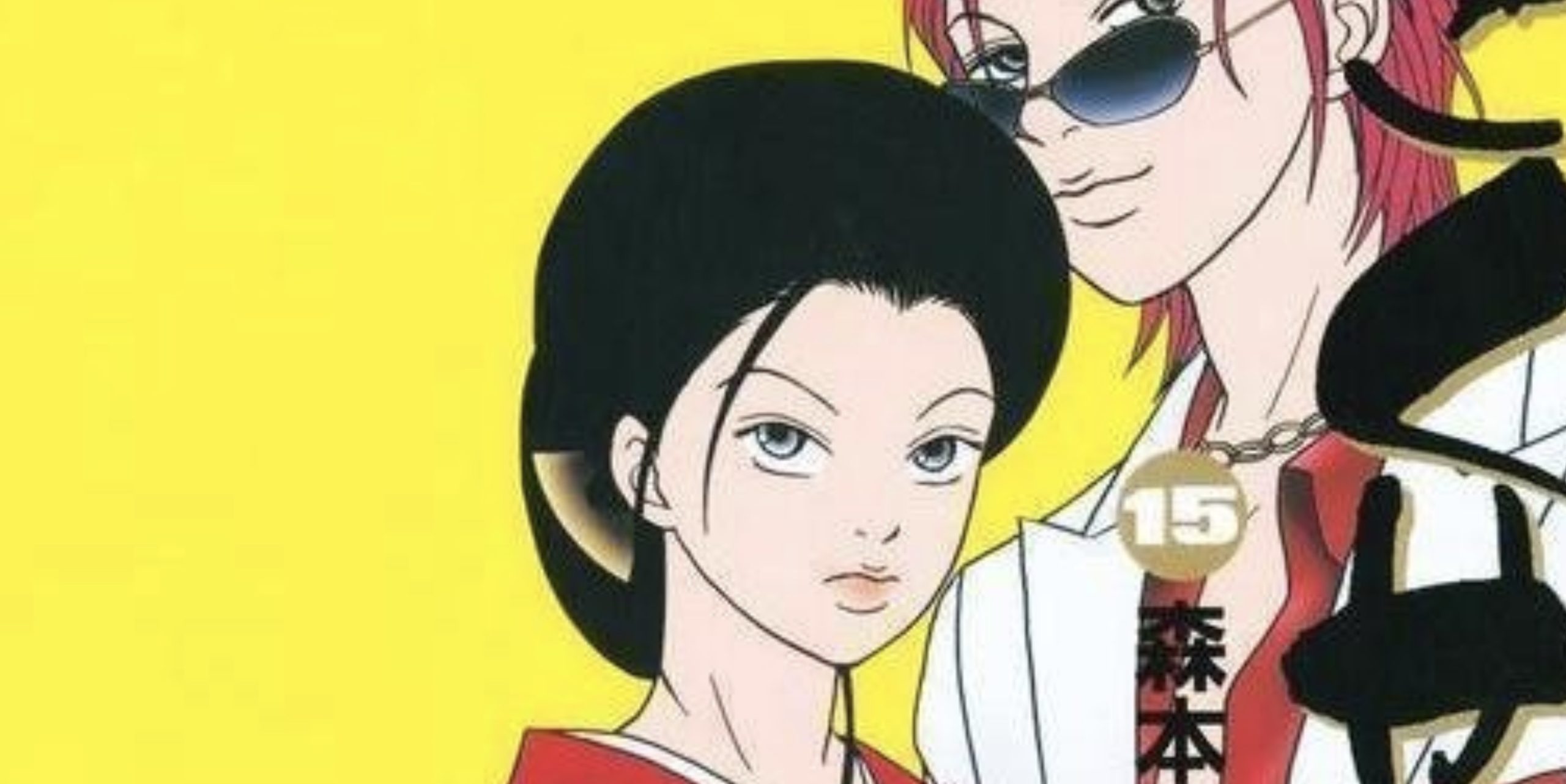
Unlike other stories, Gokusen uniquely features a protagonist who is directly connected to the Yakuza, leading to continuous challenges as her teaching duties become intertwined with matters involving organized crime.
Kumiko’s struggle to balance her dual identities and the comedic situations that arise from the collision of her teaching responsibilities and Yakuza affairs echo the dynamic and entertaining moments often found in Like a Dragon game.
Through its portrayal of Kumiko’s journey, Gokusen offers viewers a delightful blend of tough love, humor, and the complexities of exploring both education and organized crime. In many ways, Gokusen serves as a compelling side story within the rich Like a Dragon universe.
5. Wild Adapter
In Wild Adapter, the narrative revolves around a yakuza war fueled by a potent drug known as WA or “Wild Adapter,” which transforms users into animalistic beings with superhuman strength before leading to their demise.
Amidst this conflict, Kubota, a 17-year-old thrust into leadership of the Izumokai yakuza youth group, crosses paths with Tokitoh, a stranger with amnesia who possesses a mysterious connection to the drug.
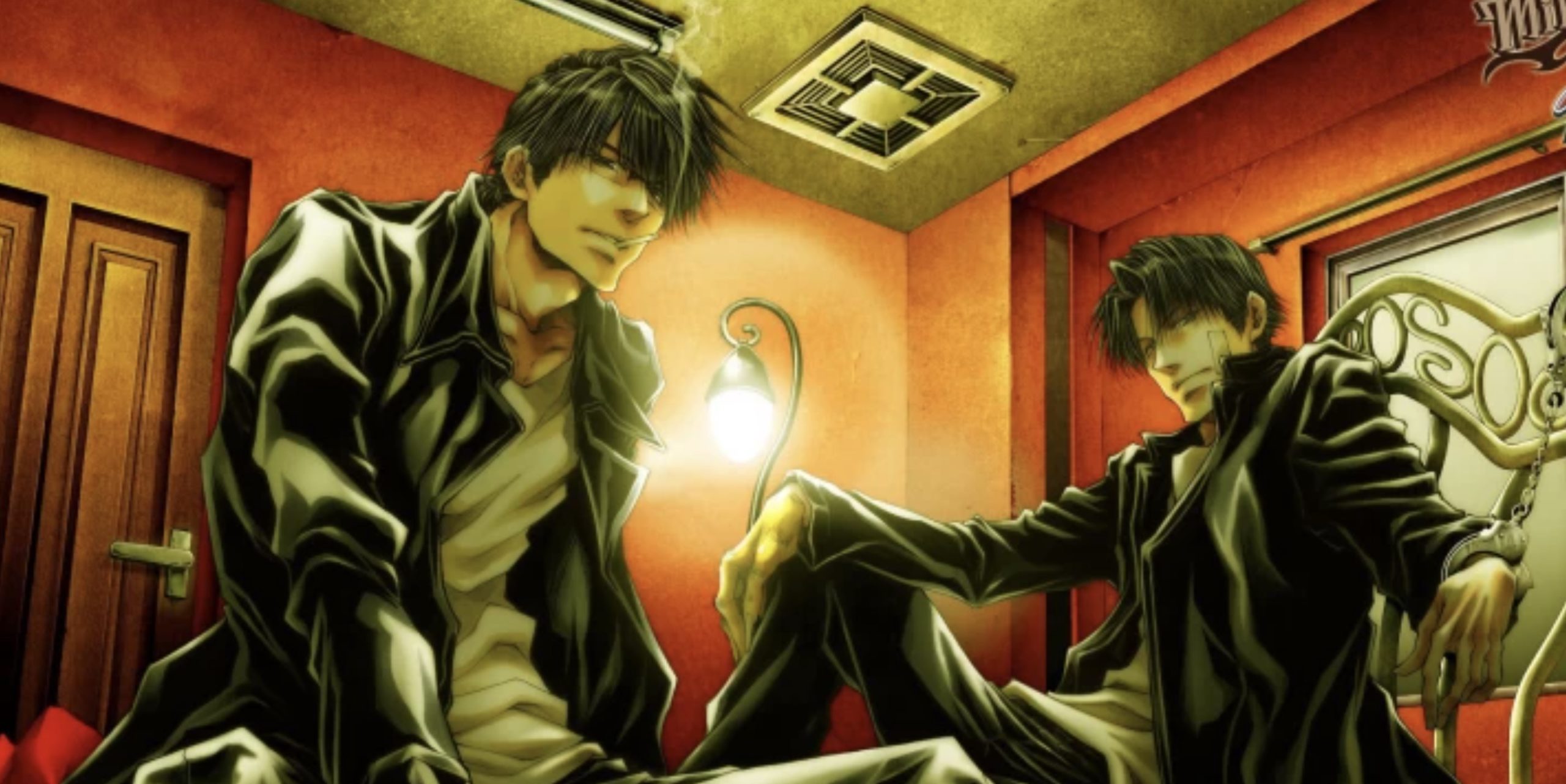
As Kubota and Tokitoh explore the dangerous underworld of yakuza violence and intrigue, they find themselves unwittingly embroiled in the bloody war between the Izumokai and their rivals, the Toujougumi.
The presence of the Wild Adapter drug adds a supernatural element to the story while underlying themes of mystery and crime drive the narrative forward.
Similar to the Yakuza series, Wild Adapter explores the dynamics of rival factions vying for control and power. While the Yakuza serves as a backdrop in Wild Adapter rather than the central focus, the story’s exploration of the criminal underworld and its impact on the lives of its characters aligns with themes found in the Yakuza franchise.
Furthermore, the inclusion of boys’ love undertones adds an additional layer of complexity to the narrative, offering a unique take on the crime genre.
4. Phantom: Requiem For The Phantom
In Phantom: Requiem for the Phantom, viewers are thrust into the shadowy Inferno, a powerful assassin syndicate where the protagonist, Ein, explores life as an amnesiac assassin.
Alongside Ein is Zwei, a witness to one of Inferno’s killings who becomes ensnared in the organization’s machinations after being brainwashed into becoming an assassin himself.
The anime’s narrative goes into the complex web of assassinations and espionage within Inferno, offering unexpected twists and turns that keep viewers on the edge of their seats.
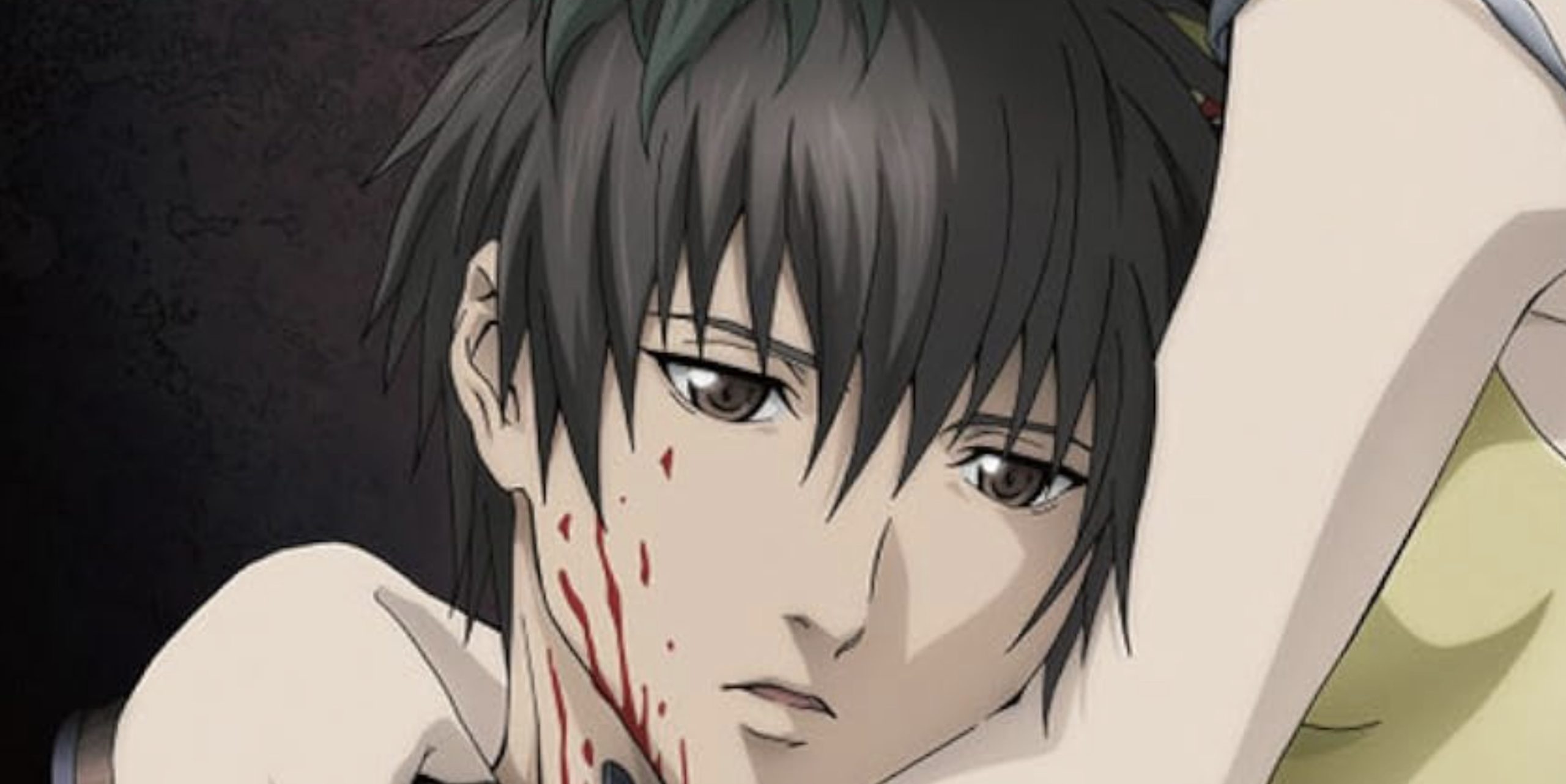
This unique take on the crime genre, focusing on assassins and paramilitary corporations, adds a fresh layer of intrigue to the traditional gangster anime formula.
Similar to the Yakuza series, Phantom: Requiem for the Phantom explores themes of loyalty, identity, and the consequences of being embroiled in criminal enterprises.
The evolution of Zwei from a cold-blooded killer to a more empathetic protagonist adds depth to the story, contrasting with the character arcs of protagonists like Kiryu in the Yakuza franchise.
Watching Zwei and other assassins explore their relationships within the crime syndicate offers a compelling narrative that fans of the Yakuza series will appreciate for its complexity and international scope.
3. Gungrave
In the 2003 Gungrave anime, viewers are immersed in a tale of revenge that mirrors the storyline of the Gungrave video game. The narrative revolves around two best friends, Brandon Heat and Harry MacDowell, whose bond is shattered by ambition and betrayal.
After undergoing necrolyzation, Brandon is resurrected as Beyond The Grave, determined to dismantle the Millennion crime syndicate now led by his former friend Harry.
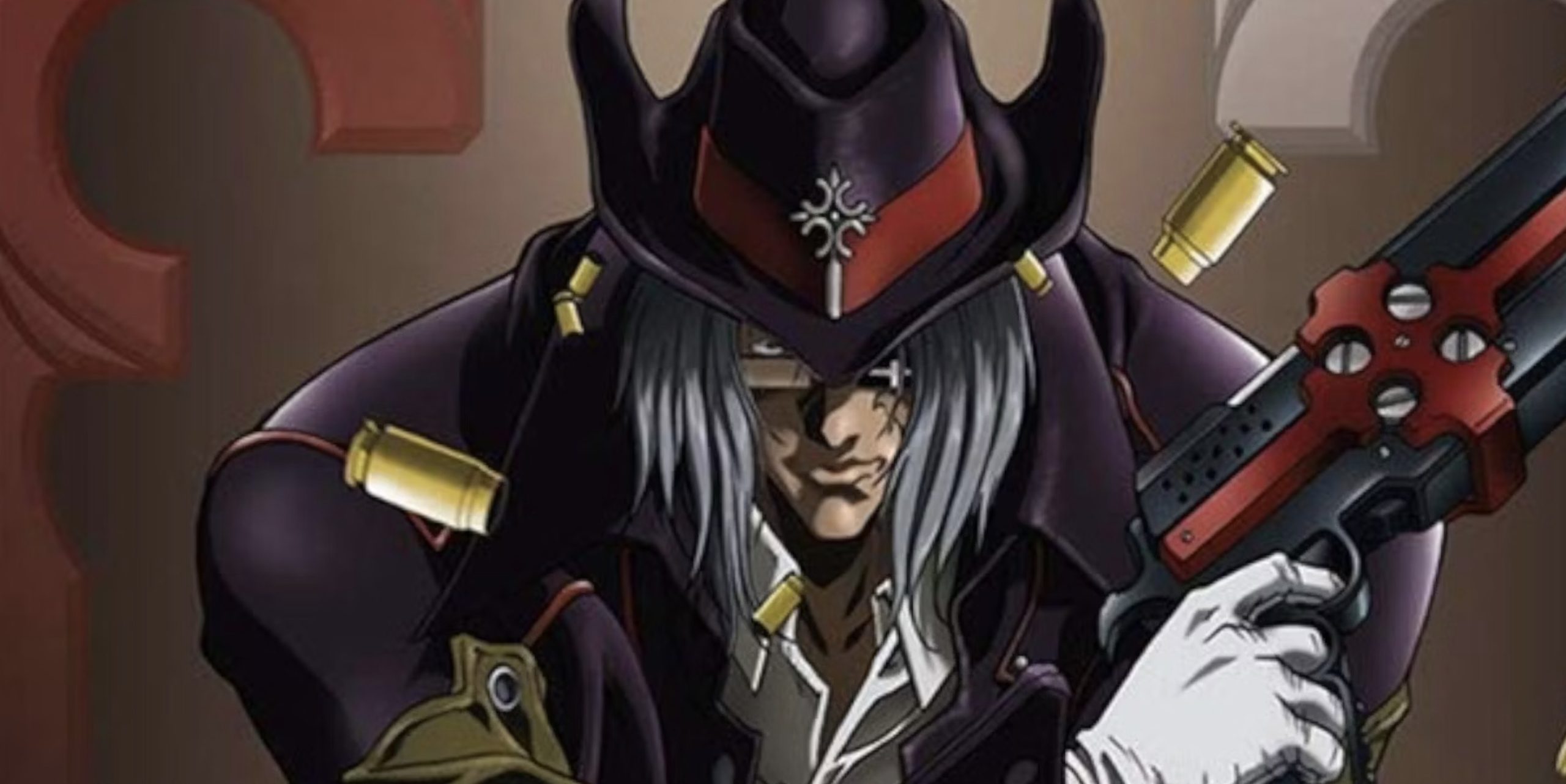
Gungrave blends action-packed sequences with humor, drawing inspiration from the stylish gunslinger archetype and infusing a futuristic Wild West atmosphere into its setting.
Similar to the Yakuza franchise, Gungrave explores themes of loyalty, betrayal, and the consequences of power dynamics within criminal organizations.
The dynamic between Brandon Heat and Harry MacDowell mirrors the tumultuous relationship between Kiryu and Nishikiyama in Yakuza, albeit with a more violent twist as Brandon transforms into Beyond the Grave. Fans of anime who enjoy a blend of hardcore action and Western aesthetics will find Gungrave, created by Trigun’s Yasuhiro Nightow, to be a compelling watch.
2. K Project
In K Project, an alternate timeline Japan is ruled in secrecy by the Seven Clans of Color, powerful factions comprised of psychics who engage in silent cold wars and subtle displays of power.
The story kicks off when Yashiro Isana, initially innocent, becomes the target of the other clans after being accused of killing a prominent Red Clan member.
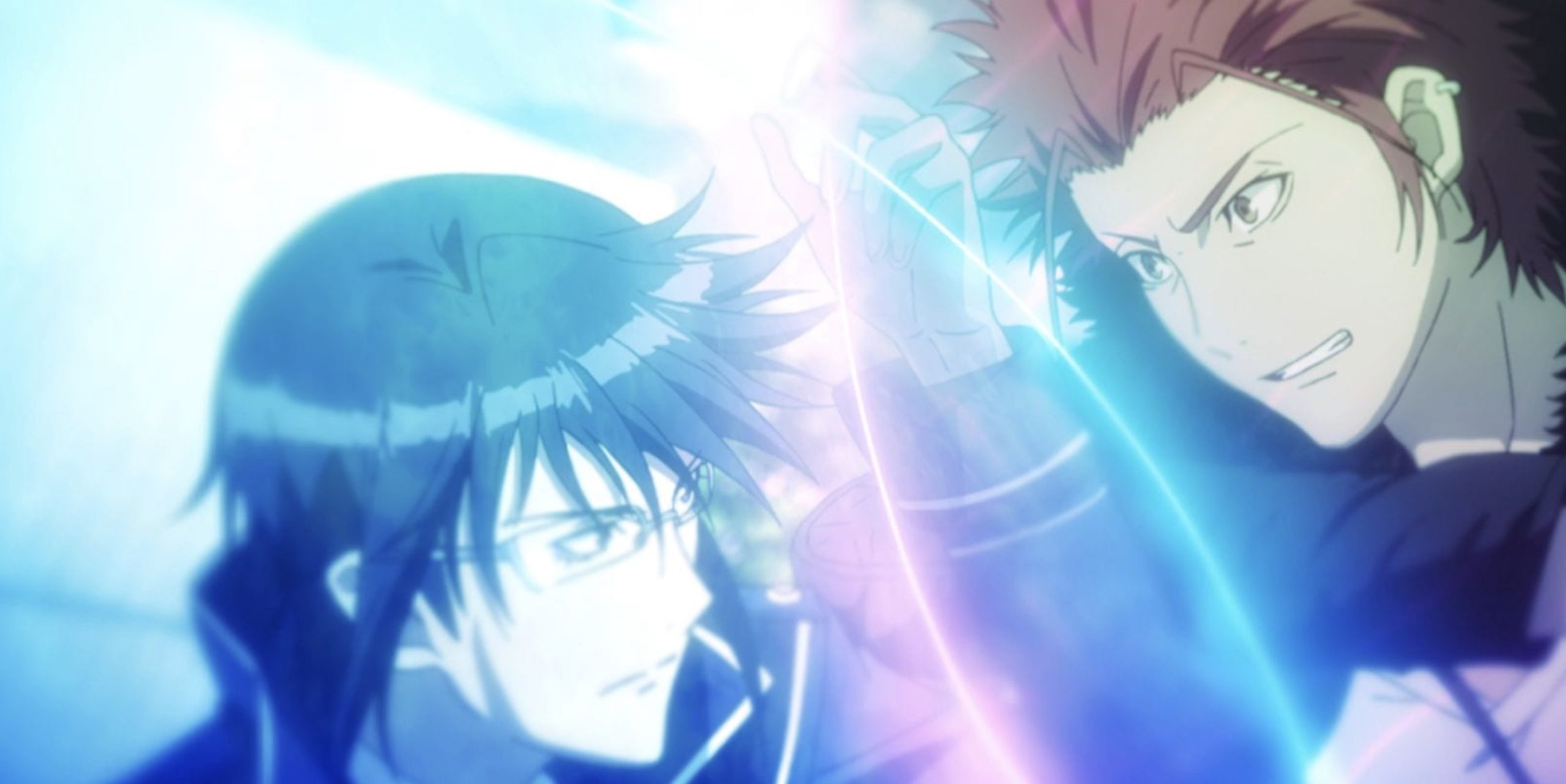
However, the narrative takes a twist when Yashiro rediscovers his true identity as Adolf Weismann, the First and Silver King. While K Project may lack the complex interpersonal narratives typical of gang-oriented stories, it compensates with intriguing power scaling and action scenes.
In terms of similarity to Yakuza, while K Project introduces a supernatural element with Aura-wielding Clans, its depiction of clans locked in states of peace and conflict resonates with Yakuza families.
Each Clan in K Project possesses unique characteristics and sub-cultures, allowing fans to not only root for protagonist Yashiro Isana but also engage with the conflicting principles and philosophies of each Clan, its leaders, and its members.
1. Jormungand
In Jormungand, organized crime intersects with the international arms trade, offering a unique perspective on the underworld of illegal weapons trafficking.
Protagonist Koko Hekmatyar, a young arms dealer working for HCLI, explores the murky waters of the black market, selling weapons to various clients ranging from mafia bosses to assassins.
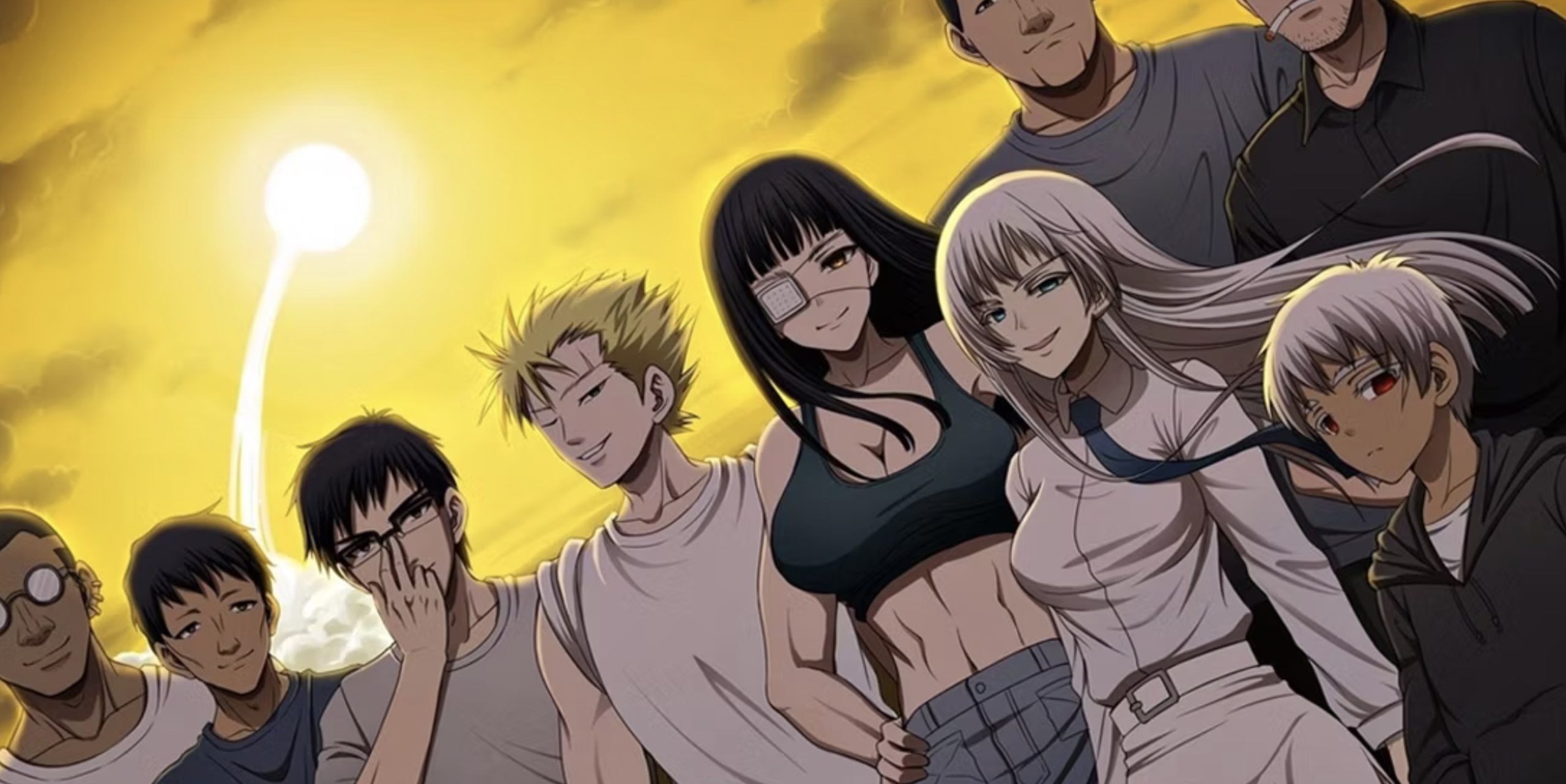
Similar to the Yakuza series, Jormungand explores the intricate web of alliances, rivalries, and conflicts within the criminal underworld. Koko and her team of bodyguards must explore dangerous situations, dealing with authorities, other agencies, and rival arms dealers while conducting their illicit business operations.
The addition of Jonah, a young child soldier recruited by Koko, adds a layer of complexity to the story, as his skills and experiences shape the dynamics of the group.
This dynamic and action-packed narrative provides a fresh perspective on the “everyday” lives of those involved in the arms trade, offering a thrilling and engaging experience for viewers, akin to the adrenaline-fueled adventures found in the Yakuza franchise.

